
The best map of Spain

A map of Spain is essential. Every time that I plan a trip one of the first things I do is to look for a map. I like to locate sights, monuments, bars and restaurants and even my accommodation (or potential one if I haven’t made up my mind yet).
I find that it’s very important to get a glimpse of possible travel itineraries, know a bit more about distances (especially if it’s a big country).
Therefore, long before catching the plane I spend some time researching, downloading and drawing lots of maps. It helps me to maximize my trip and have a better knowledge of the place I intend to visit.
Moreover, once I’m on the road I consider that a map is vital. Unless I have a friend or relative that will be my guide, I always carry a map in my smartphone.
In the case of Spain, you’ll realize very soon that in most cities the center is pretty much a labyrinth, especially the older ones. And despite the numerous tourist offices and the fact that people are kind enough to provide directions, it’s definitely easier to have a map of each city with you.
Here you’ll find a complete list of maps. I have created some of them with the help of Google Maps; they show the location of key points of interest and are ready for printing. But I have also included additional maps, either online or in PDF format.
(You’ll need Adobe Acrobat to view and print the PDF files. If you don’t have this software you can get it here for free. Just download it and follow the instructions to install it.)
Table of Contents
Spain map: best online resources
It’s handy to have good Spain maps of all sort before you depart on your trip, but if you don’t, no worries. You’ll find lots of good maps readily available below.
- Here’s my free Google Map of Spain.
- Map of Spain divided by regions ( comunidades autónomas ) .
- Spain map: weather forecast (AEMET) .
- ViaMichelin: Michelin route planner and maps to help you with directions and traffic.
- Spain map: train routes .
Map: Spain’s main travel destinations
You’ll need a city map, but which one is best? I’ve used a ton of different city maps, map books, and guide books in my many visits to the all of these cities, so I’m in a good position to give you advice about the best of them — including ones for people (like me) who need to know everything.
Apart, from the ones included for each destination, you can always go to the local tourist office and get a paper map. They are not so practical, but they are free and will always do the trick!
Here is a list of Spain’s main travel destinations:
- Barcelona . You can download a sightseeing map or a Metro map with the main attractions .
- Cordoba . Here’s the best tourist map .
- Granada . Have a look at this map including all the highlights .
- Madrid . I love this map with all the information .
- Seville . Download a map with the main attractions .
Giant Map of Spain
Data Spain
From the lush, green, rugged north; to the pristine beaches along the Mediterranean coast; to the sun-drenched olive groves of the south, Spain's fascinating geography means you'll never have the same experience twice. Just as each of its most iconic cities have a unique feel to them, the different regions of Spain all offer something completely original.
This large map of Spain will help you figure out how to make your way around the country. If your vacation plans include a full tour of the Iberian Peninsula, no worries—we've also included Portugal.
Find the grid reference for the part of the map that you want to see and scroll down to the corresponding number in the list below to see a more detailed image of that part of the map.
See more maps of Spain below or buy a map of Spain .
Map of Spain
A1 (#2), A2 (#3), A3 (#4), A4 (#5), A5 (#6), A6 (#7), A7 (#8)
B1 (#9), B2 (#10), B3 (#11), B4 (#12), B5 (#13), B6 (#14), B7 (#15), B8 (#16), B9 (#17), B10 (#18), B11 (#19)
C1 (#20), C2 (#21), C3 (#22), C4 (#24), C5 (#25), C6 (#26), C7 (#26), C8 (#27), C9 (#28), C10 (#29), C11 (#30)
D3 (#33), D4 (#34), D5 (#35), D6 (#36), D7 (#37), D8 (#38), D9 (#39), D10 (#40)
E2 (#42), E3 (#43), E4 (#44), E5 (#45), E6 (#46), E7 (#47), E8 (#48), E9 (#49), E11 (#50)
F2 (#53), F3 (#54), F4 (#55), F5 (#56), F6 (#57), F7 (#58), F8 (#59), F9 (#60), F10 (#61), F11 (#62)
G2 (#64), G3 (#65), G4 (#66), G5 (#67), G6 (#68), G7 (#69), G8 (#70), G9 (#71)
H2 (#73), H3 (#74), H4 (#75), H5 (#76), H6 (#77), H7 (#78), H8 (#79)
I3 (#80), I4 (#81), I5 (#82), I6 (#83), I7 (#84)
Map of Portugal
C1 (#20), C2 (#21), C3 (#22), D1 (#31), D2 (#32), D3 (#33), E1 (#41), E2 (#42), E3 (#43), F1 (#52), F2 (#53), F3 (#54), G1 (#63), G2 (#64), G3 (#65), H1 (#72), H2 (#73)
A1: Northern La Coruña province, Galicia, Spain
Maps of Spain by Data Spain
A2: La Coruña & Lugo provinces, Galicia, Spain
Maps of Spain by Data Spain
A3: Eastern Lugo province (Galicia) & western Asturias, Spain
A4: asturias, spain, a5: cantabria & western asturias, spain, a6: biscay province (basque country) & western cantabria, spain, a7: gipuzkoa province, basque country, spain, & french basque country, b1: coast of pontevedra province, galicia, spain, b2: la coruña, lugo & ourense provinces, galicia, spain, b3: western león province & eastern ourense province, galicia, spain, b4: león province, castilla y león, spain, b5: northern palencia province (castilla y león) & southern cantabria, spain, b6: southern basque country, eastern burgos & northwestern la rioja, spain, b7: navarre & la rioja, spain, b8: eastern navarre & western huesca province (aragón), spain, b9: northern huesca province, aragón, spain, b10: northern lleida province (catalonia, spain), andorra, southern france, b11: northern girona province, catalonia, spain, & southern france, c1: northwestern portugal, c2: northern portugal & southern galicia, spain, c3: northern portugal & zamora province, castilla y león, spain, c4: zamora province, castilla y león, spain, c5: northern valladolid & southern palencia, castilla y león, spain, c6: eastern burgos & western soria provinces, castilla y león, spain, c7: eastern soria (castilla y león) & western zaragoza (aragón), spain, c8: northern zaragoza province & southern huesca province, aragón, spain, c9: southern lleida province, catalonia, spain, c10: barcelona province, catalonia, spain, c11: costa brava, girona & barcelona provinces, catalonia, spain, d1: northwestern portugal, d2: north-central portugal, d3: western salamanca province, castilla y león, spain, & eastern portugal, d4: salamanca province, castilla y león, spain, d5: southern ávila & segovia provinces, castilla y león, spain, d6: northeastern madrid & western guadalajara (castilla-la mancha), spain, d7: southern zaragoza province & northern teruel province, aragón, spain, d8: teruel province, aragón, spain, d9: southern tarragona (catalonia) & northern castellón (valencia), spain, d10: northeastern tarragona province, catalonia, spain, e1: west-central portugal, e2: east-central portugal, e3: western cáceres province, extremadura, spain, e4: ne cáceres (extremadura) & sw ávila (castilla y león), spain, e5: southwestern madrid & western toledo (castilla-la mancha), spain, e6: southeastern madrid & northern toledo (castilla-la mancha), spain, e7: cuenca province, castilla-la mancha, spain, e8: southern teruel (aragón), western castellón (valencia) and northern valencia, e9: castellón province, valencian community, spain, e11: mallorca, spain, e12: menorca, balearic islands, spain, f1: western portugal, f2: eastern portugal, f3: northern badajoz province, extremadura, spain, f4: southern cáceres province & northern badajoz, extremadura, spain, f5: central ciudad real province, castilla-la mancha, spain, f6: eastern ciudad real & western albacete, castilla-la mancha, spain, f7: albacete province, castilla-la mancha, spain, f8: valencia (valencia) & eastern albacete (castilla-la mancha), spain, f9: southern valencia & northern alicante, valencian community, spain, f10: ibiza & formentera, balearic islands, spain, f11: cabrera & southern tip of mallorca, balearic islands, spain, g1: southwestern portugal, g2: southeastern portugal, g3: southern badajoz (extremadura) & northern huelva (andalusia), spain, g4: northwestern córdoba (andalusia) & eastern badajoz (extremadura), spain, g5: northern córdoba province & western jaén province, andalusia, spain, g6: northern jaén province, andalusia, spain, g7: nw murcia (region of murcia) & se albacete (castilla-la mancha), spain, g8: southern alicante (valencia) & eastern murcia, spain, g9: northern alicante province, valencian community, spain, h1: western algarve, southern portugal, h2: eastern algarve, southern portugal & western huelva, andalusia, spain, h3: western seville province & eastern huelva province, andalusia, spain, h4: eastern seville province, andalusia, spain, h5: southern córdoba province & northern málaga province, andalusia, spain, h6: eastern granada province, andalusia, spain, h7: southern murcia (region of murcia) & eastern almería (andalusia), spain, h8: central coast of murcia province, region of murcia, spain, i3: western cádiz province, andalusia, spain, i4: eastern cádiz province, andalusia, spain, i5: costa del sol (málaga province), andalusia, spain, i6: costa tropical (granada) & costa de almería, andalusia, spain, i7: cabo de gata (almería province), andalusia, spain.
A Guide to the Regions of Spain
Weather in Spain: Climate, Seasons, and Average Monthly Temperature
15 Best Under-the-Radar Places to Visit in Spain
How to Get to France From Barcelona and Other Spanish Cities
19 Regions and Islands of Spain: From Worst to Best
The 11 Best Beaches in Spain
Essential Facts About Spain
How to Get from City to City in Spain
Best Cities to Visit in Spain in November
Tenerife Guide: Planning Your Trip
What You Should Eat in Spain: City by City
Top 15 Events in Spain in August
The Very Best of Spain's Cities, Regions, Food, and Drinks
Bizarre Festivals, Holidays, and Events in Spain
Plan the Perfect Trip to Spain
August in Spain: Weather, What to Pack, and What to See
Maps of Spain
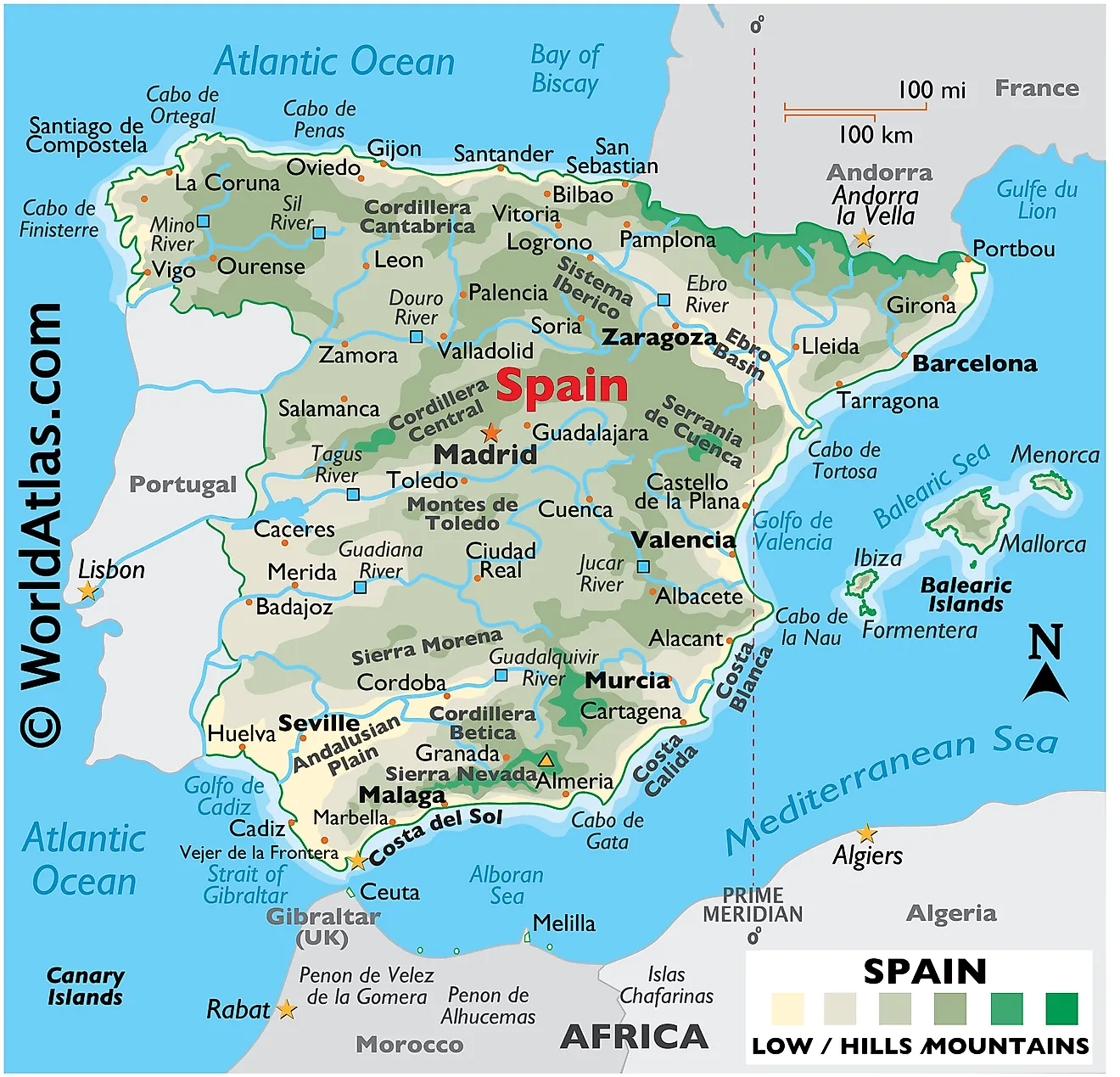
Spain is located in southwestern Europe on the Iberian Peninsula , which it shares with its western neighbor, Portugal . To the north, it borders France and Andorra , with the Pyrenees mountain range acting as a natural boundary. Towards the south, Morroco lies just across the Strait of Gibraltar . The Mediterranean Sea lines its eastern coast, while the Atlantic Ocean lies to the north and west. The total area of Spain is about 505,994 km 2 (195,365 mi 2 ).
Mainland Spain comprises eight geographic regions, but the notable territories of the Balearic and Canary Islands are also significant enough to merit inclusion.
Meseta Central : The Meseta Central is a vast plateau in the heart of Spain. This expansive high plain covers a significant portion of the country's interior and is characterized by its relatively flat terrain interspersed with rolling hills. The Tagus and Duero Rivers cut across this region, providing crucial water sources for agriculture. The altitude of the Meseta Central averages about 660 meters (2,165 feet), giving it a continental climate with hot summers and cold winters.
Cantabrian Mountains (Cordillera Cantabrica) and the Northwest Region : The Cantabrian Mountains extend across northern Spain, running parallel to the Bay of Biscay . These mountains are characterized by their rugged peaks, deep valleys, and dense forests. They act as a climatic barrier, bringing heavy rainfall to the northern coastal regions. The northwest region, including Galicia, benefits from these mountains, which ensures that the surrounding area receives adequate rainfall.
Ibérico Region : The Ibérico region, featuring the Iberian Mountains, is located in northeastern Spain. These mountains, though not as high as the Pyrenees, contain significant mineral deposits, especially in their northern parts. The Ebro River , one of Spain's most important rivers, originates from this region, providing an essential waterway for transportation and irrigation. This region is known for its varying landscapes, from rocky peaks to fertile valleys.
The Pyrenees : The Pyrenees mountain range acts as a natural boundary between Spain and France. Stretching approximately 300 miles (490 kilometers) from the Mediterranean Sea to the Bay of Biscay, these mountains are known for their towering peaks, some reaching over 11,000 feet (3,400 meters). Several major rivers, including the Garonne and the Aude, originate from the Pyrenees.
Penibético Region in the Southeast : The Penibético region encompasses the Baetic Mountain Range in southern Spain. This region features two primary mountain systems: the Sierra Nevada and the Sierra de los Filabres. The Sierra Nevada boasts the highest peak in mainland Spain, Mulhacén , which rises to 3,482 meters (11,424 feet). These mountain ranges are notable for supporting various ecosystems and serving as water catchments.
Andalusian Plain : The Andalusian Plain, situated in southern Spain, is a flat, fertile expanse. The Guadalquivir River , one of the country's major rivers, flows through this plain, making the land especially suitable for agriculture. Historically, this region has been significant for crop production, particularly olives, cereals, and grapes. Its strategic location near the Strait of Gibraltar also makes it a critical economic region.
Ebro Basin : The Ebro Basin is centered around the Ebro River, which flows into the Mediterranean Sea. This basin is one of Spain's primary agricultural regions, producing a variety of crops thanks to its fertile soils. The river and its tributaries have been essential for the development of the region's agriculture and transportation networks. The Ebro Delta, where the river meets the Mediterranean, is of ecological significance, supporting numerous bird species.
Coastal Plains : Spain's coastal plains stretch along both its Mediterranean and Atlantic coastlines. These plains are often narrow, squeezed between the sea and nearby mountain ranges. With mild climates and fertile soils, they support agriculture, particularly citrus fruits, olives, and vineyards. Moreover, large settlements dot these coastal plains, and over time, they have grown into significant centers of trading, political concentration, and social infrastructure.
Balearic Islands : This autonomous community is an archipelago in the Mediterranean Sea, east of the Spanish mainland. Comprising major islands like Mallorca, Menorca, Ibiza, and Formentera, these islands are characterized by their limestone landscapes, fertile plains, and coastal cliffs. They play a significant role in Spain's tourism industry, attracting millions of visitors annually. The surrounding sea also contributes to the islands' mild climate and rich marine biodiversity.
Canary Islands : The Canary Islands are another autonomous archipelago that belongs to Spain, despite being located off the northwest coast of Africa. These volcanic islands, including major ones like Tenerife, Gran Canaria, and Lanzarote, harbor striking landscapes, from black sand beaches to towering volcanoes. Interestingly, Teide Peak of Tenerife is the highest point on Spanish soil, at 3,715 m (12,188 ft). The Canary Islands have a subtropical climate, which has made them a popular tourist destination. The Canary Current, a major ocean current of the North Atlantic, impacts the climate and marine life around these islands.
Bodies of Water : Besides the Atlantic Ocean, the Mediterranean Sea, the Bay of Biscay to the north, and the Alboran Sea, the country has a series of major rivers. The Tagus River originates in Spain and flows into Portugal, making it the longest. The Ebro River runs through the northeast, draining into the Mediterranean, and the Guadalquivir River winds through southern Andalusia, aiding agriculture. Other notable rivers include the Duero and the Júcar, each playing significant geographical roles.
Regarding lakes, Lake Sanabria is the Iberian Peninsula's largest glacial lake. The Albufera Lake, near Valencia , is a shallow lagoon, while the Lakes of Covadonga consist of Lake Enol and Lake Ercina in the Picos de Europa range. Catalonia's Lake Banyoles is another major natural lake. Spain also contains several reservoirs, crucial for water management.
Communities of Spain Map
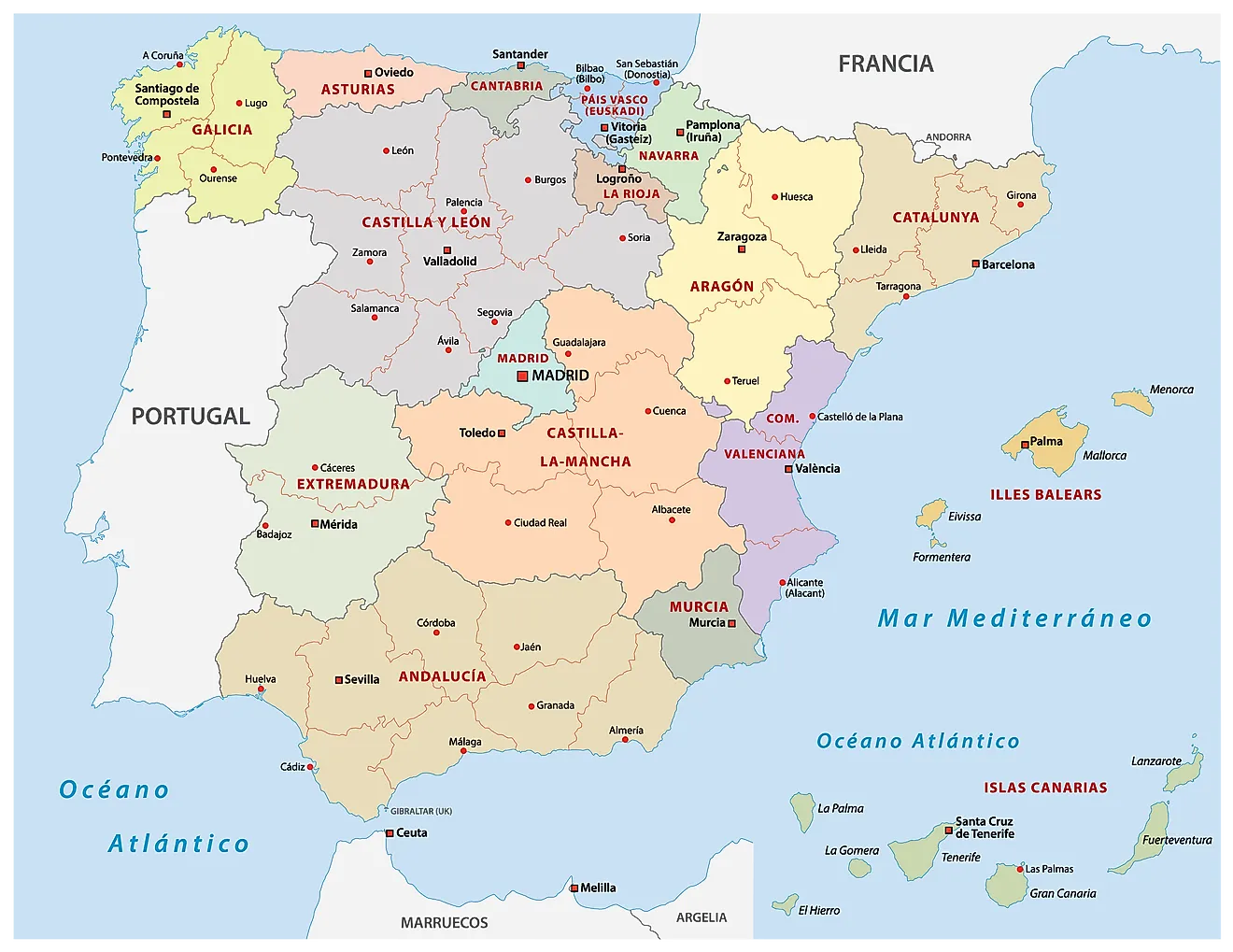
Spain (officially, the Kingdom of Spain) is divided into 17 autonomous communities ( comunidades autonomas , sing. comunidad autonoma ) and 2 autonomous cities ( ciudades autonomas , sing. ciudad autonoma ). The autonomous communities are: Andalusia, Catalonia (Catalan), Madrid, Comunitat Valenciana [Valencian Community], Galicia, Castilla-Leon, Euskadi (Basque) [Basque Country], Castilla-La Mancha, Canarias (Canary Islands), Murcia, Aragon, Extremadura, Illes Baleares (Balearic Islands), Asturias, Navarre (Castilian), Cantabria, and La Rioja. The 2 autonomous cities are: Ceuta and Melilla. The autonomous communities are further subdivided into provinces and smaller subdivisions.
With an area of 505,990 sq. km, Spain is the largest country in Southern Europe and the 4 th largest country in the continent of Europe. It is also the 2 nd largest country in Western Europe and EU. Spain has a population of over 47 million, making it the 6 th most populous country in Europe and the 4 th most populous country in EU. Located in the central part of the country is, Madrid – the capital, the largest and the most populous city of Spain. Madrid is also the cultural, administrative and economic center of Spain. Madrid functions as an important financial hub of Southern Europe.
Where is Spain?
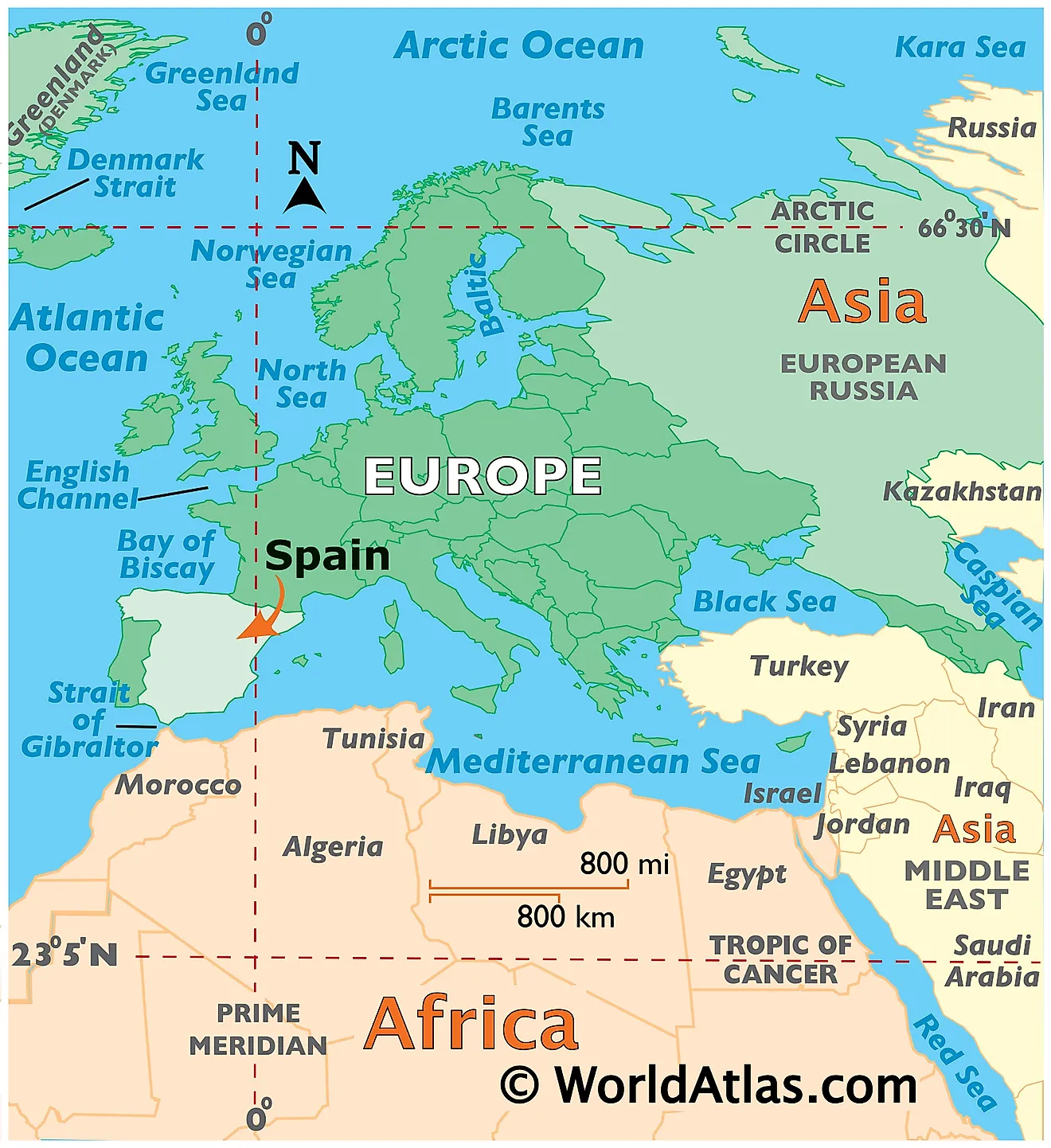
Spain is a country located on the Iberian Peninsula in southwestern Europe. It is situated in both Northern and Eastern hemispheres of the Earth. Spain is bordered by 5 countries: by Portugal in the west, by France and Andorra in the northeast, by Gibraltar and Morocco (the Spanish territories of Ceuta and Melilla in North Africa), in the south. The country is bounded by the Mediterranean Sea in the east and southeast, by the Atlantic Ocean in the northwest and southwest and by the Bay of Biscay in the north. Spain shares its maritime borders with Algeria and Italy.
Spain Bordering Countries : Morocco , Gibraltar , Portugal , Andorra .
Regional Maps : Map of Europe
Outline Map of Spain
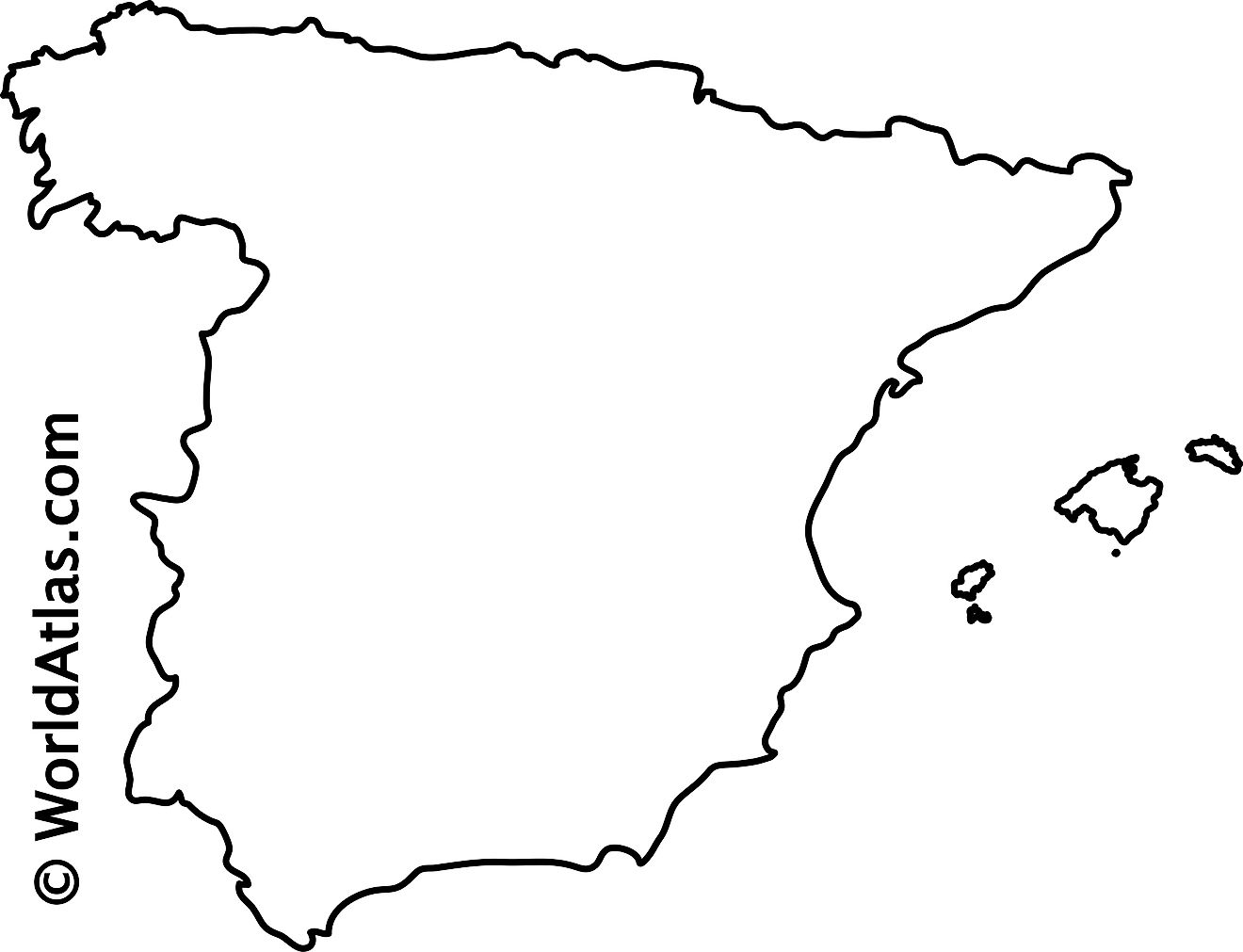
The above blank outline map is of the European country of Spain. The map maybe downloaded and printed to be used for coloring or educational purpose.
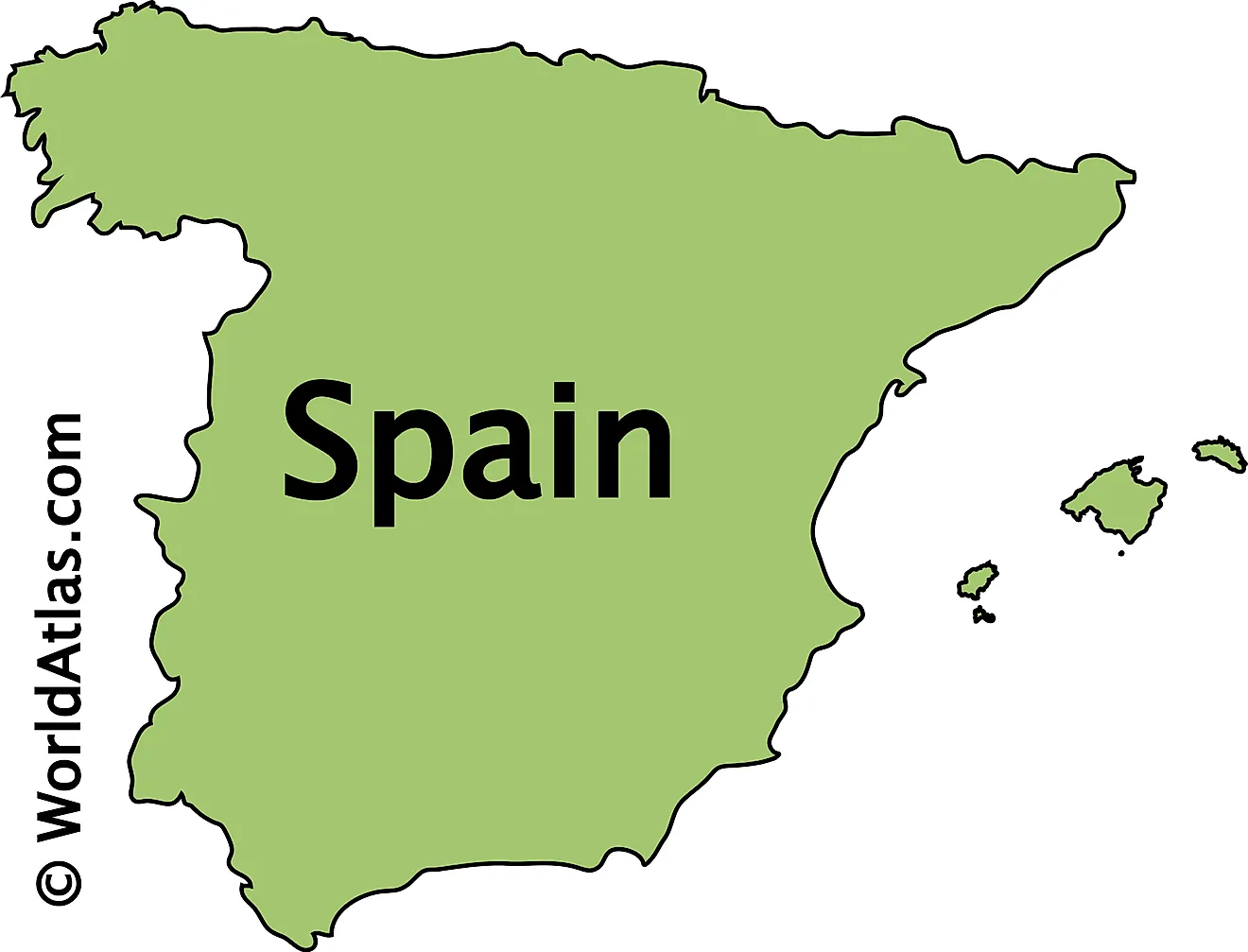
The about map represents Spain, a country in South Western Europe well-known for its unique and vibrant Spanish culture.
This page was last updated on August 18, 2023
Latest by WorldAtlas

7 Most Scenic Small Towns in Mississippi
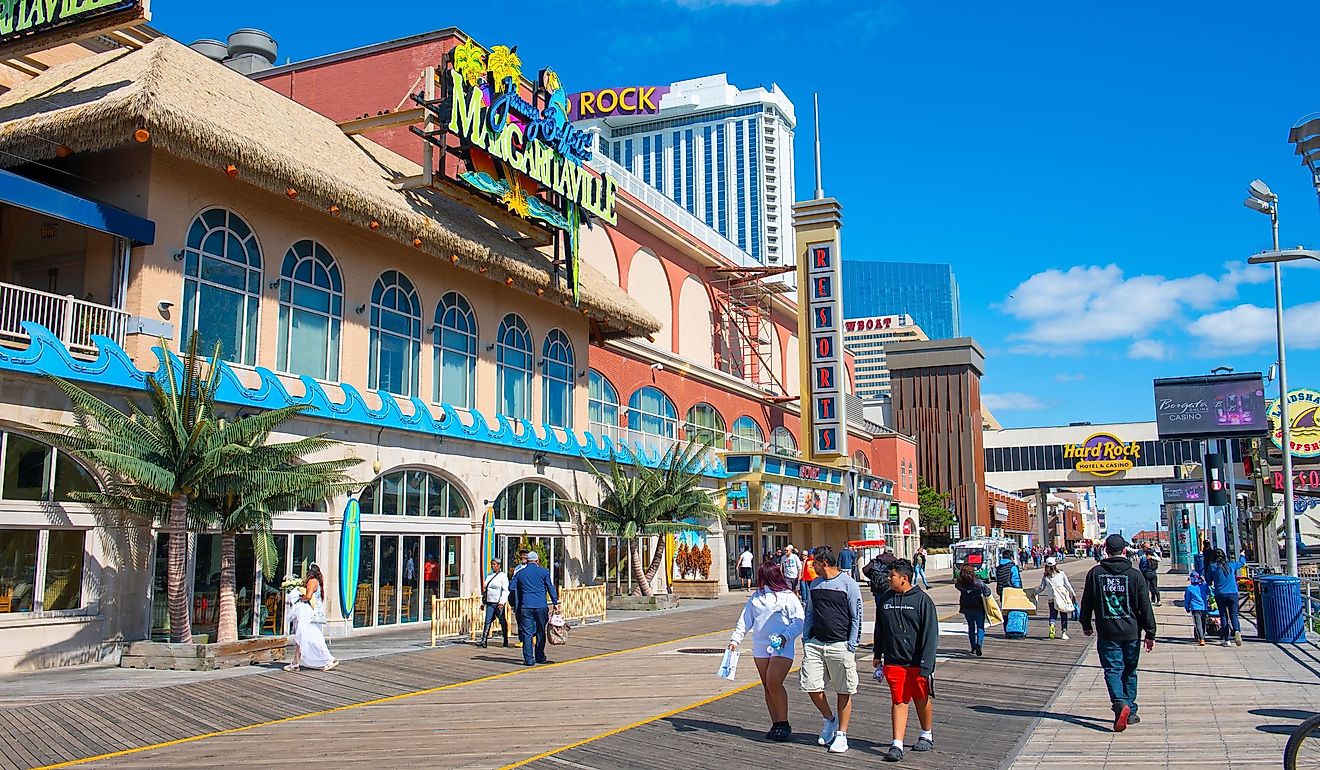
8 Most Affordable Towns to Retire in Atlantic Coast
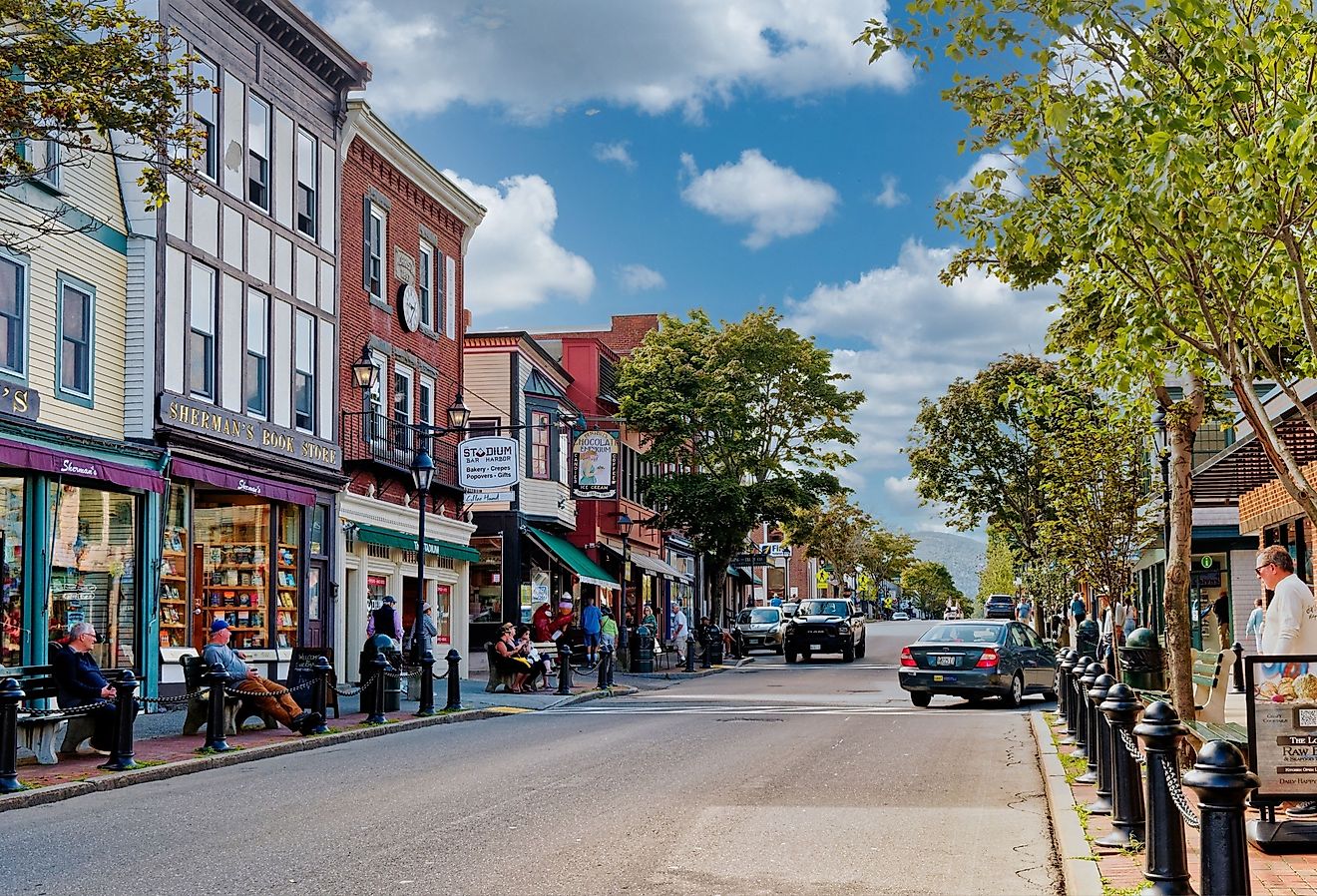
7 Serene Towns in New England for a Weekend Retreat
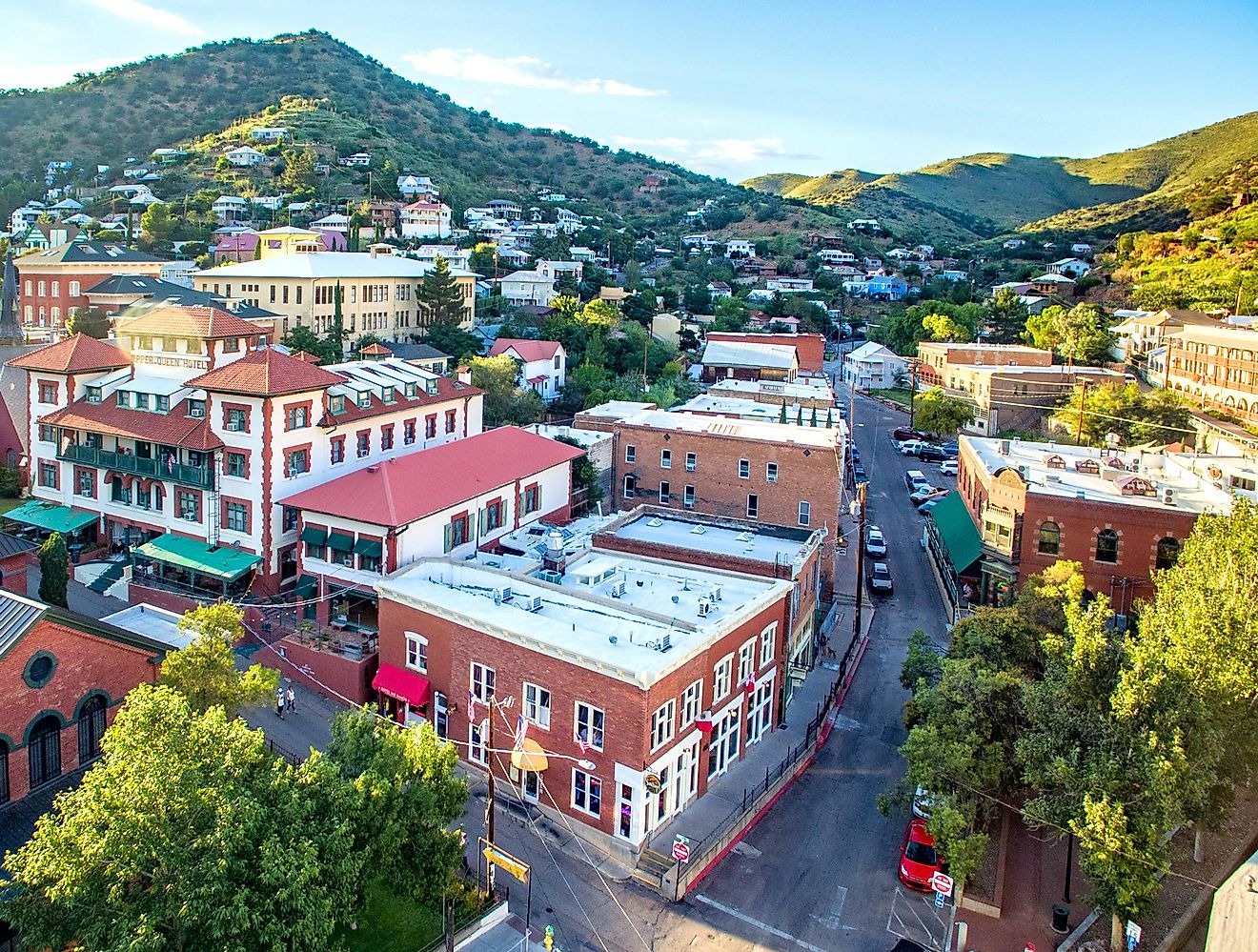
6 Most Inviting Towns In Arizona

Exploring Ancient Civilizations' Greatest Capital Cities Today
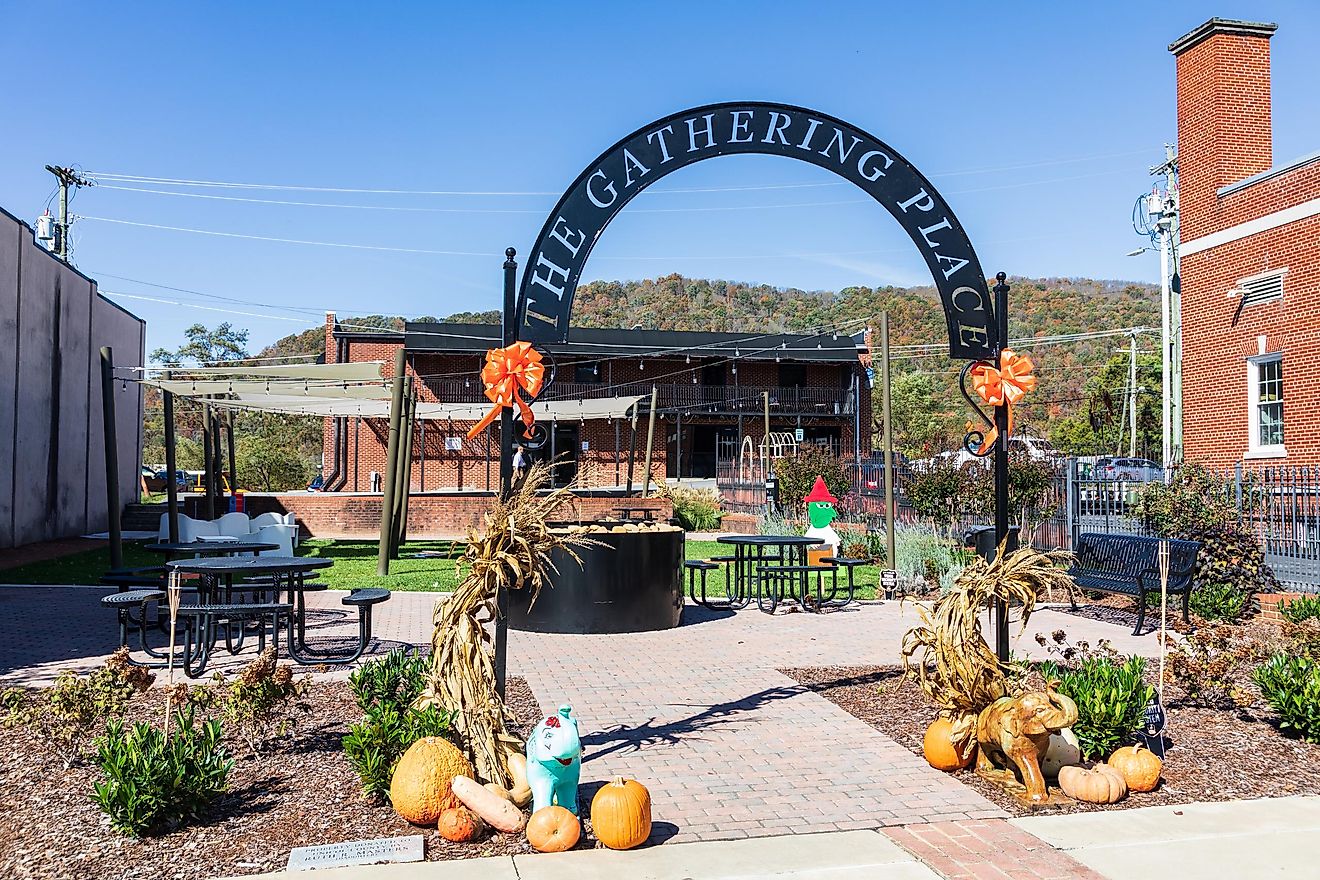
7 Most Affordable Towns to Retire in Tennessee
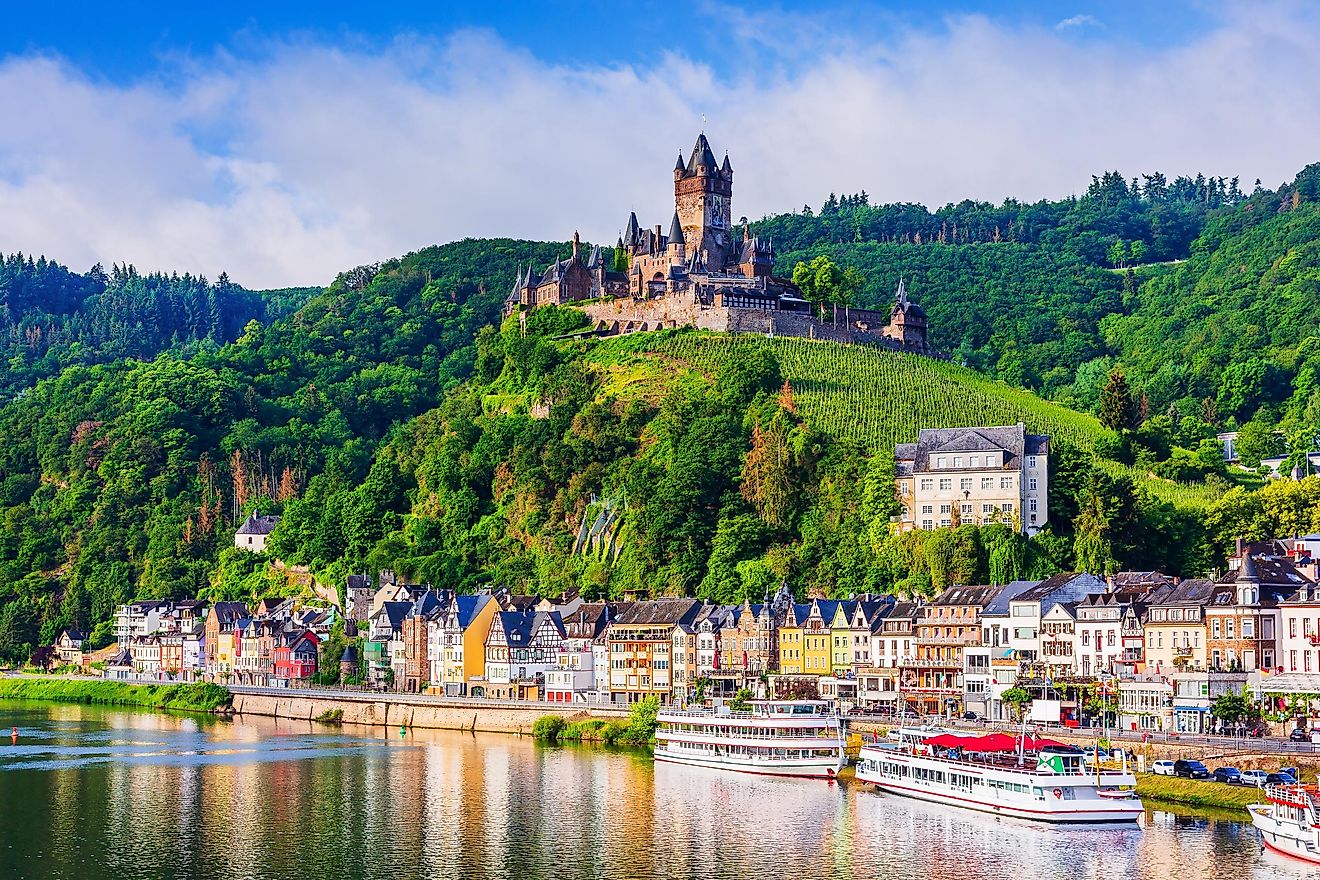
8 Most Welcoming Small Towns In Germany
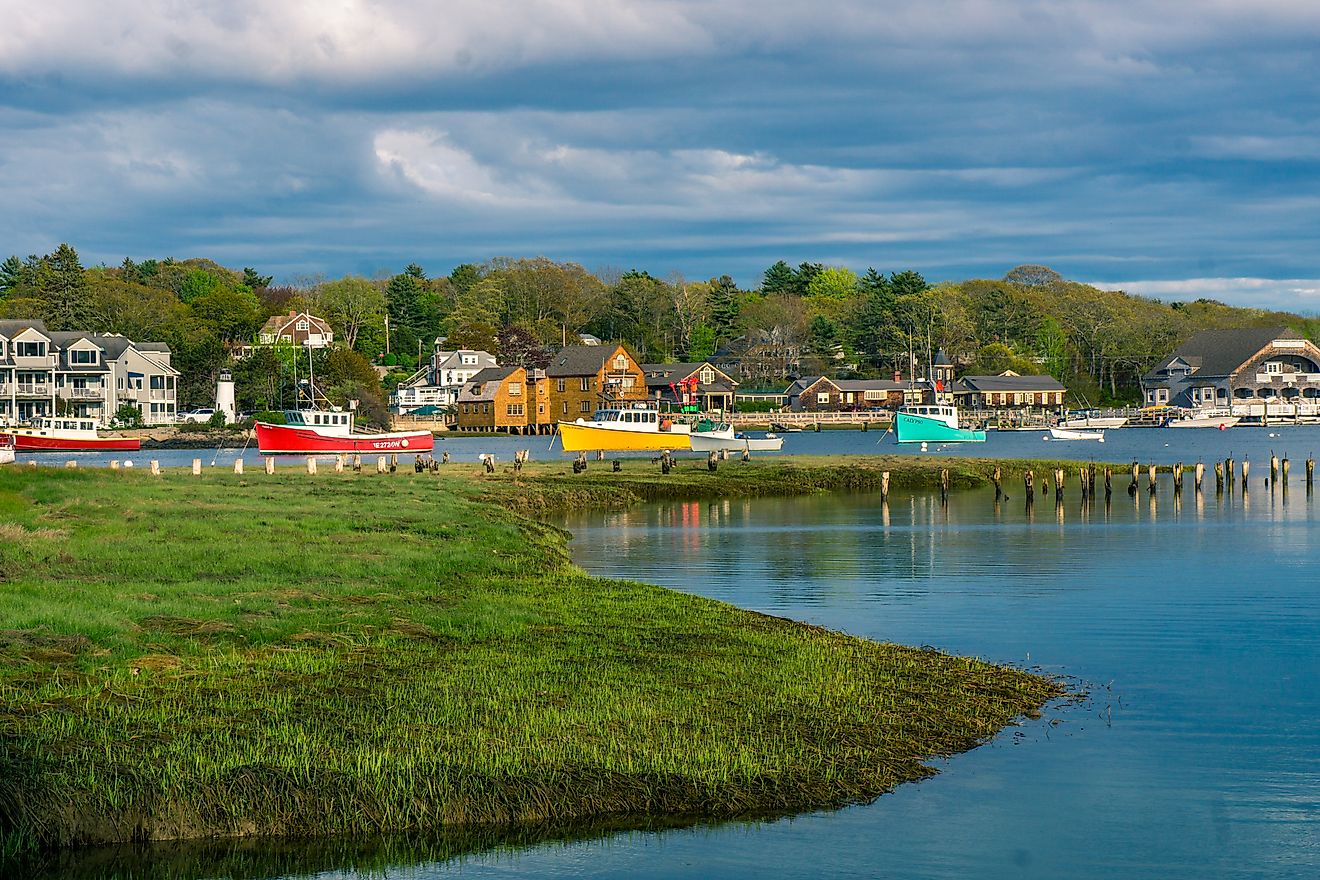
6 Most Scenic Small Towns on the Atlantic Coast
Map of Spain
Book your individual trip , stress-free with local travel experts
- roughguides.com
Find inspiration and information for your next trip.
Get a local travel expert to plan your personalized trip.
Book & travel securely with our money-back guarantee and local expert assistance.
- Travel guide
- Itineraries
- Local Experts
- Travel Advice
- Accommodation
Interactive map

Regions in Spain
From picture-perfect villages nestled in the folds of mountains to extravagant architecture, Spain is a visual treat. It’s also one of the world’s leading culinary destinations, boasts stunning coastlines and is home to some of the most vibrant cities in Europe. However, you choose to explore this captivating country, plan your trip with our map of Spain below.
Start by trying a Rioja or two at a fabulously stylish bodega, and while you’re in the region head to the iconic avant garden temple of wine, the Bodegas Ysios. Head on to Madrid and you'll find world-class cultural highlights like the Prado, Reina Sofía and Santiago Bernabéu. But whether you're trying tapas, haute cuisine, flamenco or clubbing, the city really wakes up when night falls.
In Barcelona , meanwhile, you’ll be dazzled by inventive architecture, sun-kissed beaches and Catalan creativity everywhere you look, from Gaudí’s stupendous Sagrada Família and mosaic-encrusted Parc Güell to the dramatically redeveloped waterfront quarter. The beauty of it's landscape and the intrigue of it's cities secured Spain even a spot on the list of most beautiful countries in the world , as voted by our readers.
If you are planning to travel to Spain, next to the map check out Spain itineraries and the best time to go . To add more details to your trip, read more on the best places to go , great things to do in Spain or learn about getting there and where to stay once you are there.
Tailor-made travel itineraries for Spain, created by local experts

9 days / from 2468 USD
Andalucía Explored
Discover the best of Andalucía's breathtaking palaces, churches, museums, vineyards, and more, as you travel through spectacular scenery dotted with pueblos blancos and bordered by rugged mountains and coast en route to Granada, Seville, Ronda and Jerez de la Frontera.

4 days / from 643 USD
A culinary experience in Seville
Explore the cuisine and surroundings of Seville in Andalucia. From Iberian ham over sherry wines to the production and secrets of olive oil, this tour is an ideal weekend getaway. Decide yourself if you prefer a rental car or a chauffeur-driven car to explore the beauty of Andalucia.

10 days / from 3791 USD
Spanish Honeymoon
Discover Andalusia, starting with the cultural city of Seville, then on to Córdoba and Granada, home of the stunning Alhambra Palace. Next you'll visit Granada and the Albayzin Arab quarter, then enjoy a stunning hot-air balloon ride, before ending your trip with a luxury boat trip from Marbella!
Tailor-made trips for Spain

- Around Madrid
- Castilla-La Mancha and Extremadura
- Castilla y León and La Rioja
- Euskal Herria: The País Vasco and Navarra
- Cantabria and Asturias
The Rough Guides to Spain and related travel guides
In-depth, easy-to-use travel guides filled with expert advice.

Travel advice for Spain
From travel safety to visa requirements, discover the best tips for traveling to Spain
- Culture and Etiquette in Spain
- Eating and drinking in Spain
- Getting around Spain: Transportation Tips
- How to get to Spain
- Sports and Outdoor activities in Spain
- Travel Tips Spain for planning and on the go
- Best time to visit Spain
Find even more inspiration here

written by Eleanor Aldridge
updated 27.04.2021
Ready to travel and discover Spain?
Get support from our local experts for stress-free planning & worry-free travels.

- Best of Spain
- Cities & Villages
- Beach Destinations
- Top Attractions
- Map of Spain
- About España Guide
SPAIN The Definitive Travel Guide
- WHAT YOU NEED TO KNOW
Why does everyone love Spain?
There’s 1,001 reasons to love Spain. You just have to visit to find yours.
You can explore trendy Barcelona and admire the organic modernist masterpieces from architect Antoni Gaudi. Head north to the Basque Country if you want to sample some of Spain’s best gastronomy. Or discover immaculate Islamic palaces in Seville and Granada .
Once you’ve taken in enough of Spain’s vast culture, venture to the Mediterranean coast and the islands (Balearic and Canary) where you can relax on some of Europe’s best beaches.
- Quick Facts About Spain
- Best Places in Spain
- See a Live Flamenco Show
Top Attractions in Spain
More of the best of spain.
- Hotels in Spain
- What languages are spoken in Spain?
- Business Hours
- Eating Times
- Bar Culture
- Coffee Culture
- Menu del Dia
- Driving in Spain
- Parking in Spain
- Avoid Speeding Tickets
- Highways in Spain
Weather in Spain
This article might include affiliate links, allowing us to earn a small commission at no extra cost to you. Check our disclosure page for more info.

Best Places to Visit in Spain

FLAMENCO IN SPAIN
Alhambra – granada, royal alcazar – seville, mosque – cordoba, cathedral – seville, 12 day trips from madrid, best cities in spain, spanish regions, best beaches in spain, the best hotels in spain.

Travel to Spain – What You Need to Know
What languages are spoken in spain.
The official and universal language in Spain is Spanish (español). However, in Spain, the language is most commonly called Castellano , referring to the region of Castile where it comes from.

The Basque language is known as euskara in Basque and vasco in Español. In addition to being spoken in the Basque Country, it can also be heard in northern Navarre and a small area in France just on the other side of the border.
Basque is the only surviving pre-indo-european language , which means that it isn’t related to Spanish at all – or any other known language in the world for that matter. To this day, no one is quite sure how Basque survived or where it comes from.

Catalan and Galician (gallego in Spanish) are both romance languages and much more similar to Spanish. The Catalan language encompasses several dialects that are spoken in Catalonia, Valencia and the Balearic Islands – basically the whole eastern Mediterranean coast of Spain. From an outside perspective, Catalan may seem like a mixture of Spanish and French.
Galician, on the other hand, is much more closely related to Portuguese. In fact, it is a Portuguese sister language with some Castellano influences. Galician is spoken in the northwestern corner of Spain in Galicia and to a lesser extent in western Asturias.
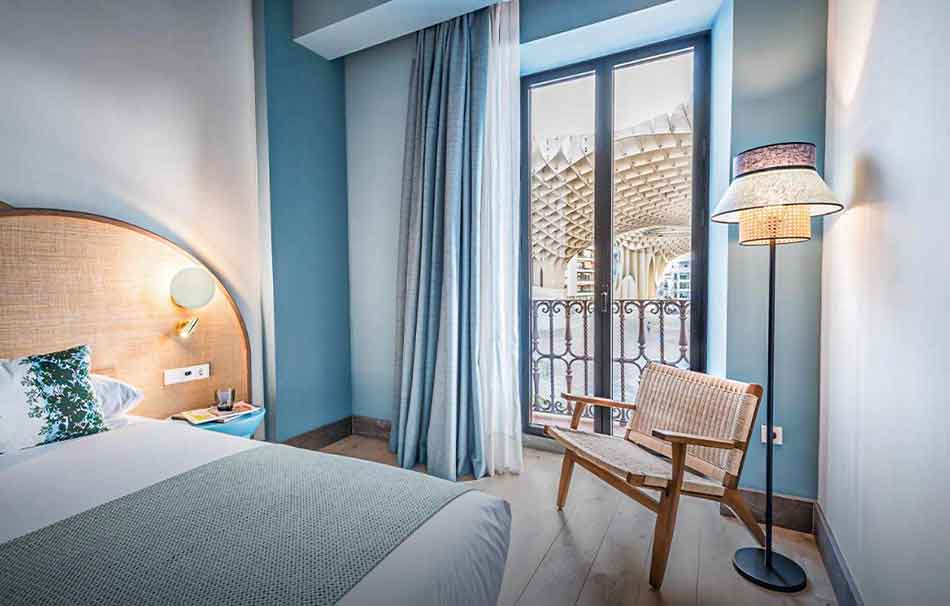
BUSINESS HOURS IN SPAIN
Spain has a schedule all of its own. From Monday to Friday, most businesses close between 2 and 5 pm, give or take. On Saturdays, they don’t reopen in the afternoon. And on Sundays, pretty much everything is closed.

There are also some exceptions to these strange business hours. Shopping malls don’t close in the middle of the day. Many chain stores don’t either. You really just have to check – but be aware.

In larger cities such as Barcelona and Madrid , some stores open on particular Sundays which are specially declared shopping days. This usually happens in December, just before Christmas.
Then there are the Chinese-run shops that can be found in even the most obscure locations in Spain. Los chinos, as they are referred to, have found a permanent place in Spanish society with stores selling just about everything imaginable – a little bit like a dollar store. The Chinese are open when no one else is, including Sundays.
EATING TIMES IN SPAIN
Spanish eating times are probably the hardest thing to adjust to when visiting Spain. Their time is off by several hours when compared with most of the world. Breakfast isn’t usually much of an issue. A typical Spanish breakfast is often not much more than a coffee and a small bite to eat, such as a muffin or a biscuit.

Lunch and dinner times are the tricky ones. A typical lunchtime in Spain is 1:30 to 2 pm during the week, and on the weekend, it is not uncommon to start lunch even after 3 pm.
Dinner is also a late affair. No Spaniard would ever eat dinner before 8 pm. And again, the weekend is even later. Friday and Saturday night restaurant reservations for 11 pm are very common.

Because of that, we recommend adapting as much as possible to the Spanish eating times when visiting. For example, if you are shopping and notice that stores are closing, that is your cue to get some food!
If you unfortunately miss lunchtime, you may be lucky and find a bar that is serving some small tapas or sandwiches (bocadillos).
BAR CULTURE IN SPAIN
Bar culture in Spain is unique compared to other parts of the world. It is an integral part of the social sphere and not just a place to get drunk. Although people of course do get drunk, it is not a common sight to see patrons getting wasted.

It’s totally normal to see families with young kids and grandparents all out together in the bar. That’s because the Spanish bar offers much more than just alcoholic drinks.

It’s a place to go for a coffee with friends or family. You can go for a mid-morning/afternoon snack (tapa) or have a sandwich (bocadillo) for lunch. It’s also where you meet up in the evening to have a drink and something small to eat with friends.
You can even make a tapas crawl out of it – going to one bar, having a drink with a tapa, and then moving on to the next.
COFFEE CULTURE IN SPAIN
Spaniards love their coffee. And when they want a coffee, they go to a bar, not a cafe. There are 3 typical ways coffee is served in Spain: 1.) solo - straight espresso, 2.) cortado - espresso with a dash of milk 3.) café con leche - espresso with milk. For those who like lattes or cappuccinos, a café con leche is the closest thing you will find.

There are international chains such as Starbucks starting to appear in big cities, particularly around tourist areas. But we recommend supporting the small family-owned bars which are an essential part of the local culture and in our opinion serve far superior coffee at a very low price.
MENÚ DEL DÍA
Lunch is the biggest and most important meal of the day in Spain. Restaurants will often have a set menu of the day. Look for menú del día being advertised on the boards outside and take note – this is the best way to eat like a king for a very reasonable price.

Normally, you can select between a few different options for each course. Wine (or water) is even thrown in and it’s all included in a set price.
On weekends, menú del día is typically a little bit more expensive with even better course options.

TIPPING IN SPAIN
Tipping in Spain isn’t such a big thing. Receiving a tip is not expected but definitely appreciated. As a general rule, you would only tip on meals in a restaurant where you were satisfied with the service.
Some Spaniards might leave some change – rounding up or leaving a euro here or there - all depending on how nice the restaurant is and of course how satisfied you were with the service. But something like a 15 - 20% tip would be far too much.
To get an idea, if a meal costs €30, then you could leave a euro or two if you were very satisfied. If you are in a fancier place and the meal was €90 then a €5 tip would be plenty.
A tip is pretty much never expected for something small like a coffee or drink. That also includes any light food that you would order at a bar. If your bill is €3.75 then you could round up to €4.

Tipping in taxis is also not very common. But again, if the driver is friendly and helpful, you can round up or give an extra euro or two.
In general, unless someone goes far out of their way for you or you are treated like royalty, then a tip is not needed. Use your intuition and remember that a tip is for excellent service and by no means ever expected.
How to get around Spain
Spain has a fairly extensive rail network and taking a train can be a great way to move around the country. RENFE , the Spanish rail company, has several high-speed train lines called AVE.
These lines are a fast way to move between some cities and can be quicker than traveling by plane. For example, you can go from Madrid to Malaga in 2 h 20 min or Madrid to Barcelona in just under 3 hours. If you were to go by car or bus, it would easily take double the time.

Ticket prices are comparable with those of other European countries but usually travel by bus is the cheapest option. Travel by train in Spain is quite reliable and comfortable.

Depending on your destination, traveling by train might be your best option, but that is not always the case. Check out our map of train routes . For more general Spain train information, check out this beginner's guide to train travel in Spain .
Travel by bus is very common in Spain, especially in regions where the train network is slow or not very complete. Bus fares are very cheap and departures are frequent.

The largest bus operator in Spain is Alsa , followed by Samr and Avanza. You can buy tickets directly through the operators' website or on a booking site such as Omio . It is also common to buy tickets at the bus station on the day of the trip.
There are plenty of large airports in Spain and cheap flights are easy to come by. Low-cost airlines such as Vueling, EasyJet and Ryanair offer the most flights between Spanish cities, followed by Spain’s national airline, Iberia.

In some instances if can even be cheaper to fly than to take the train. See our transportation map of Spain to find out where the busiest airports are located.
Renting a car is very affordable in Spain, especially compared to many other European countries. However, it is still probably not your cheapest transportation option.

If you only plan on visiting the larger cities such as Madrid and Barcelona, then a car would not be needed or recommended. But if you want to have extra convenience and get off the beaten path, then a rental car is a great option .
DRIVING IN SPAIN
Driving in Spain is pretty easy going for the most part. However, driving in Spanish cities can be very stressful. Besides heavy traffic, there are many one-way streets and finding parking is often complicated.
If you find on-street parking, then you will need to know the parking laws. Parking tickets are given out a lot in larger cities and they can be pricey.
We only recommend driving if you are traveling between cities, not in them. We like to look up a parking garage in a city on google maps and then head straight there. Once you are in the city you can explore it on foot or with public transportation.
AVOID SPEEDING TICKETS
In Spain, the speed limit is 50 km/h in towns and cities, 90 km/h on rural roads, 100 km/h on main roads and 120 km/h on highways. Speed cameras are pretty common and tickets aren’t cheap.
HIGHWAYS IN SPAIN
There are two types of highways in Spain called “autopistas” (“AP-” followed by a number) and “autovías” (“A-” followed by a number). Autopistas (AP) are usually toll roads, while autovías (A) are always free.

To get an idea of Spain’s weather, see the temperature chart of Barcelona below. It is a good example of what the weather is like in Spain.
WEATHER IN BARCELONA
© Eusko Guide Ltd. All Rights Reserved. | Privacy Policy | Disclosure
Has España Guide helped plan your trip?
If so, please consider booking your hotel through the links to booking.com found on our website or use the following link: https://www.booking.com/?aid=1802409
That way, you get the best rates on your hotels and at the same time, it helps us to continue contributing to this site. Everyone wins!
World Map » Spain
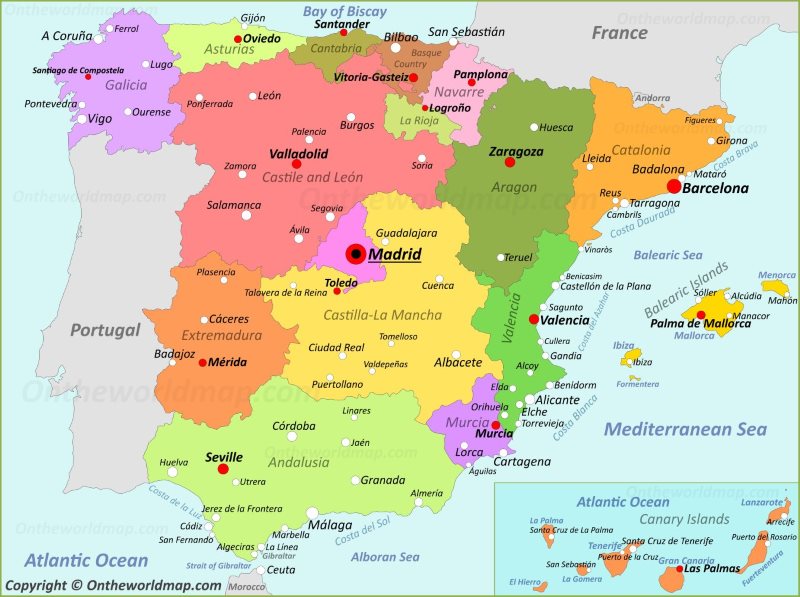
Description: This map shows governmental boundaries of countries; islands, autonomous communities, autonomous community capitals and major cities in Spain. Size: 1350x1008px / 218 Kb Author: Ontheworldmap.com
You may download, print or use the above map for educational, personal and non-commercial purposes. Attribution is required. For any website, blog, scientific research or e-book, you must place a hyperlink (to this page) with an attribution next to the image used.
Spain Location Map
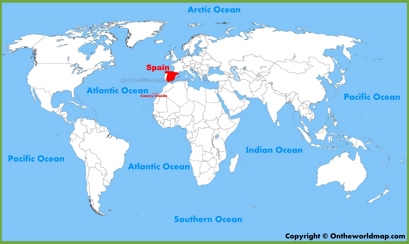
Online Map of Spain
Spain Autonomous Communities And Capitals Map
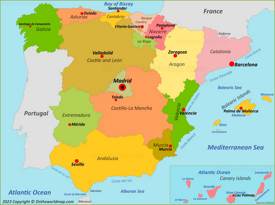
Spain Autonomous Communities Map
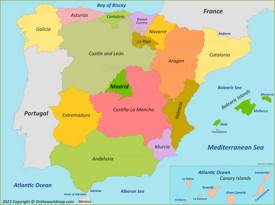
Spain political map
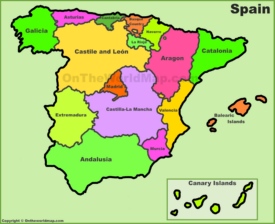
Large detailed map of Spain with cities and towns
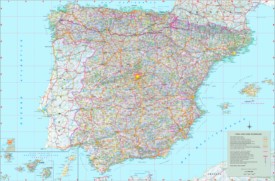
Spain road map
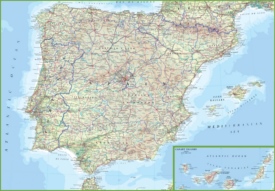
Spain provinces map
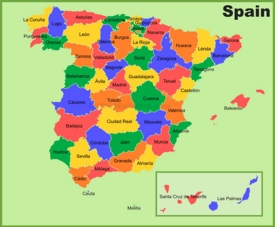
Spain railway map
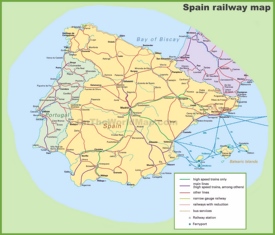
Spain physical map
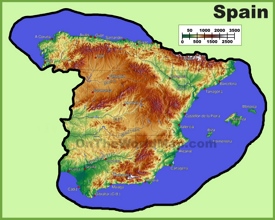
Spain tourist map
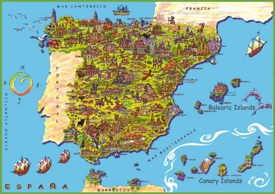
Map of Spain and France
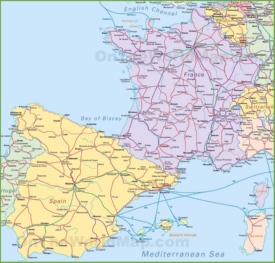
Large detailed map of Spain and Portugal with cities and towns
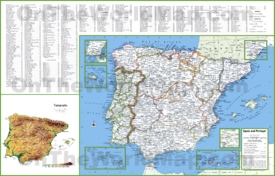
Physical map of Portugal and Spain
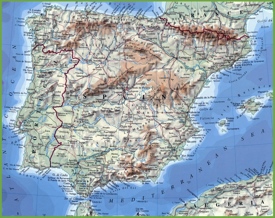
Map of Southern Spain
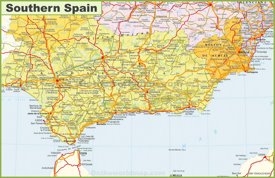
Map of Northern Spain
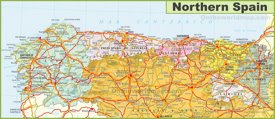
Spain location on the Europe map
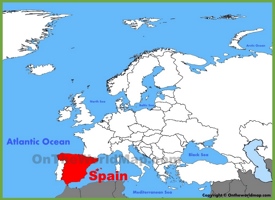
About Spain
Geography of spain, autonomous communities of spain.
Maps of Spain
Autonomous communities
- Coasts (Costas)
- Mapas de España
Cities of Spain
- Palma de Mallorca
- Santa Cruz de Tenerife
- CANARY ISLANDS
- - Gran Canaria
- - Fuerteventura
- - Lanzarote
- - La Gomera
- - El Hierro
- BALEARIC ISLANDS
- - Formentera
- Basque Country
- Valencian Community
- ALL AUTONOMOUS COMMUNITIES
- North America Map
- South America Map
- Oceania Map
Popular maps
- New York City Map
- Los Angeles Map
- Las Vegas Map
- Australia Map
- Germany Map
- Netherlands Map
- Singapore Map
- United Arab Emirates Map
- United Kingdom Map
- United States Map
U.S. States
- Arizona Map
- California Map
- Colorado Map
- Florida Map
- Georgia Map
- Illinois Map
- Indiana Map
- Michigan Map
- New Jersey Map
- New York Map
- North Carolina Map
- Virginia Map
- Wisconsin Map
Spain Travel Guide
Land of pristine beaches, fragrant orangeries, delicious paellas, architectural highlights, siesta, and fiesta.
Best time to visit Spain
How to rent a car in spain, best places to visit in spain, caminito del rey: hike spain’s once most dangerous path, alhambra palace: the gem of granada, spain, seville, spain: 14 best things to do, 14 best things to do in valencia (city trip guide), map of spain, weather in spain.
Spain’s weather is fantastic year-round, particularly in Spring and Fall when you’ll have warm and sunny days perfect for sightseeing. The coldest time is December - March, but in the south, temperatures can still reach the 20s. For more distinct seasons (and even snow), choose mountainous cities like Granada.
Andalusia Road Trip: The Ultimate 2-Week Itinerary
11 best things to do in ronda, spain, setenil de las bodegas: the cave village of spain, granada, spain: best things to do (travel guide), córdoba, spain: 8 best things to do in the city of flowers, 6 most beautiful white villages of andalusia, spain, iznajar: southern spain’s hidden gem (best things to do), 10 best things to do in palma de mallorca, popular spanish cities, best things to do in madrid, spain, best things to do in barcelona (travel guide), malaga, spain: 16 best things to do on the costa del sol, how to rent a car in spain, best travel insurances, how to plan a trip.
- Find Hotels via Booking.com
- Find Hostels via Hostelworld
- Find a Rental Car via Sunny Cars
- Find Flights to Spain via Skyscanner
- Get a Travel Insurance via Heymondo
- Book Tours & Attractions via GetYourGuide
- Book a Bus/Train/Transfer via 12Go
- Get a Visa via iVisa
- How to pack light for your trip
- How to plan your trip our tips
Why is Spain worth visiting?
Famous for toe-tapping flamenco dancing and delicious Paella, Spain is a melting pot of cultural flavors. In the north, discover green hills and an Atlantic coastline, and in the south, desert-like mountains and the Mediterranean Sea. Add artsy adventures in cities like Barcelona, and you’re onto a winner.
Is Spain cheap to visit?
Spain is one of the cheapest destinations in Europe to visit! Although there are some more expensive spots in bigger cities like Madrid, you can still find a mouthwatering ‘menu del dia’ (menu of the day) for $10 or stay in beautiful accommodations for under $50 a night.
Can I drink tap water in Spain?
In Spain, sip confidently from the tap – the water is safe to drink! Bring a reusable bottle to top up at your hotel or at one of the many fountains, and stay hydrated while reducing plastic waste.
Do I need a visa for traveling in Spain?
Most travelers from the EU, the US, and many other countries can enter Spain for up to 90 days (within a 180-day period) without a visa.
Tip: Check your country’s entry requirements in advance so you can travel with ease on your tapas-filled adventure!
What language do they speak in Spain?
In Spain, the language is lilting Spanish, although you will find differing dialects in some regions. Although many people in hotels and restaurants speak English, make your travel experience even more memorable by connecting with locals, offering a warm “Buenos Dias” (good morning) as you explore.
Do I need travel insurance for Spain?
Travel insurance is a must for your trip to Spain so you can enjoy worry-free activities, from surfing to flamenco dancing. It protects you against unexpected events, whether that’s a flight cancellation, lost luggage, or medical care.
Is Spain safe?
While Spain is generally safe, some petty crime does occur. It’s always good to exercise caution by leaving any valuables at home and keeping an eye on your belongings, especially in busier cities. However, in general, Spain’s warm, relaxed hospitality provides a safe environment for your trip!
What power plug type does Spain have?
The plug standard in Spain is a two-pin plug for a socket, also known as plug type F and type C. Many European countries use this plug type, making it easy to stay connected. If you need an adaptor, you can easily buy one at the airport or local stores.
Why do people love Spain?
Spain is loved by people worldwide for its slow pace of life, outdoor dining scene, pristine beaches, and vibrant fiesta. Whether you’re looking for buzzing beach clubs in Malaga, Moorish palaces in Granada, or a road trip adventure through the mountainous white villages of Andalusia, this nation offers diverse experiences.
Spain Travel
Vacation vibes are a way of life in beautiful Spain! The weather in Spain is fantastic year-round, so you can enjoy fruity sangria in the sun, take relaxing siestas in the afternoon, and dance the night away at street fiestas. Culture, food, parties, and beautiful landscapes unite to create an extraordinarily colorful and exciting way of life.
How to Plan Your Trip to Spain
Follow our Spain travel guides to plan the ultimate trip! Whether you’re backpacking around the country and looking for affordable and lively destinations, or you’re yearning for a metropolitan city trip, we’ve got you covered. Discover the best places in Spain, like ancient Seville , artsy Barcelona , or ancient Granada .
Want to visit Spain for longer? Follow our 2-week Andalusia itinerary in the south of the country for the ultimate mix of culture, beach time, and mountain hikes.
Best Time to Visit Spain
Planning your perfect Spain holiday? Find out about the weather in Spain to choose the best time to discover some of the country’s most popular regions!
High Season (May-September): The most popular time to visit Spain is in the summer (also the high season), which brings the hottest temperatures and endless days of sunshine perfect for enjoying the beaches. Although there may be more crowds during this time, it’s the best time to visit Spain if you’re an ocean lover, so you can enjoy sunbathing, swimming, kayaking, and SUP boarding on tranquil waters, particularly on the east and south coasts.
Shoulder Season (March, April, May, October, November) : The best time to visit Spain is the shoulder months during Spring and Fall when skies are still clear, and temperatures are mild, making it perfect for city sightseeing, hiking, or camping.
Low Season (November-February) : Winters in most of Spain are still sunny and mild unless you visit mountainous regions or the north, where you’ll find colder temperatures and sometimes even snow. It’s also an excellent time for budget travelers and backpacking in Spain, as it’s considered the low season, with fewer crowds and lower prices.
Best time to visit Spain for festivals: If you want to experience the fiesta culture (one of the best things to do in Spain!), you’ll be pleased to hear that something is happening almost every month. However, spring sees some of the most significant events. For example, the Las Fallas festival in March in Valencia , the Feria in April in Seville, or the courtyard flower festival in Cordoba during May.
Whatever you’re looking for, every season in Spain has its charm, so whether you’re chasing seasonal food, adrenaline adventures, or relaxing beach days, you’ll find the perfect time to explore each destination in our Spain travel guides.
Coastlines and Beaches in Spain
The rolling green hills, sheer cliffs, and horseshoe bays of Spain’s northern Atlantic coast are totally different from the turquoise Mediterranean blues and honey-sand shores of the south. Surfers will love the more rugged northern beaches or the windy southern tip of Spain in places like Tarifa, where surfing and kite surfing are popular. For those who want sunbeds and upmarket beach bars, the coastline near Malaga offers plenty of choice. Alternatively, head for the rocky coves with crystal clear water, perfect for snorkeling on the Costa Blanca below Valencia on your vacation in Spain.
Prefer island life? Head offshore to the incredible Balearic islands to discover some of the best places in Spain! Discover tiny islands like Formentera with white sand and clear oceans, the world-famous nightlife and bohemian culture of Ibiza, or the sheer cliffs and narrow mountainous roads of Mallorca.
Tip: For those who want an adventure on their Spain holiday, Mallorca is perfect for biking, hiking, kayaking, and boating as you explore the diverse landscapes that lie just a few hours away by ferry from the mainland.
Food, Culture, and Religion in Spain
Spain offers some of the most unique architectural and culinary wonders in Europe. Here, locals gather to enjoy plate after plate of tapas, as they sit in the shadow of ancient historical buildings, vibrant street art, and innovative abstract sculptures.
Food: Savoring the flavors of each unique region is one of the best things to do in Spain. Discover a foodie paradise where meals last for hours as Spaniards chat and laugh in the warm evening temperatures. Day-to-day life operates outside, so get ready to see the beach become the living room and the street the kitchen as you sample seafood paellas, mouthwatering tapas, rich cheesecakes, and seasonal vegetables.
Religion: Religion forms the backbone of many of Spain’s most important cultural events and buildings, with the majority of the population practicing catholicism. The Sagrada Familia in Barcelona (which has taken 140 years to complete!) is one of the most important religious and cultural monuments in the country. Other famous religious events take place throughout Spain, like the pilgrimage along the famous Camino de Santiago walking path, which is still hiked by many today, and there are hundreds of religious festivals held throughout the country, especially during Spain’s Easter week (Semana Santa).
Culture: Spain is unique in other ways too — an extraordinary time capsule to the past, despite being a modern country. See beautifully preserved buildings, charming cobbled streets, impressive cathedrals, and sweet mountain villages. However, dig deeper and discover Spain’s spirited and fun side. Street art breathes life into cities with bright, colorful, imaginative murals. Architects and artists are pushing the limits with their phenomenal designs, from the futuristic ‘City of Arts and Sciences’ in Valencia to the weird and wonderful designs of Gaudi in Barcelona (one of the best things to do in Spain).
Why You Should Travel to Spain
With such an intricate history deeply rooted in both Christianity and Islam, the culture and architecture in Spain are unrivaled. Here, ancient cathedrals open their doors to Moorish designs and orange-filled patios, and innovative modern architecture sits next to cobbled flower-filled streets.
Although known for its fantastic beaches, its landscapes are extremely diverse, from rolling green hills, thick forests, and roaring waterfalls in the north to snow-capped mountains, hilltop pueblos, and turquoise Mediterranean shorelines in the south. With a northern tip that touches France and a southern tip that almost touches Africa, it’s no surprise that there’s a landscape for every type of vacation in Spain.
Safety and Travel Advice in Spain
Safety in Spain is generally very good. However, petty theft can occur, especially in bigger cities where organized crime is more common, like Barcelona. Exercise caution by keeping valuables secure and leaving any important belongings at home. Like any destination, we recommend avoiding isolated areas at night and sticking to well-lit spots with more people.
Learn more about travel safety
Car theft: Though rare, car theft does happen from rental cars, especially in popular beach destinations around Spain. Because of this, always be mindful of where you park, and don’t leave anything on display inside.
Travel Insurance: One of the most important things to do before your Spain holiday is purchase travel insurance. Although Spain itself is safe, there is potential for accidents – for example, an injury, canceled flight, or lost baggage. Check out these best travel insurances.
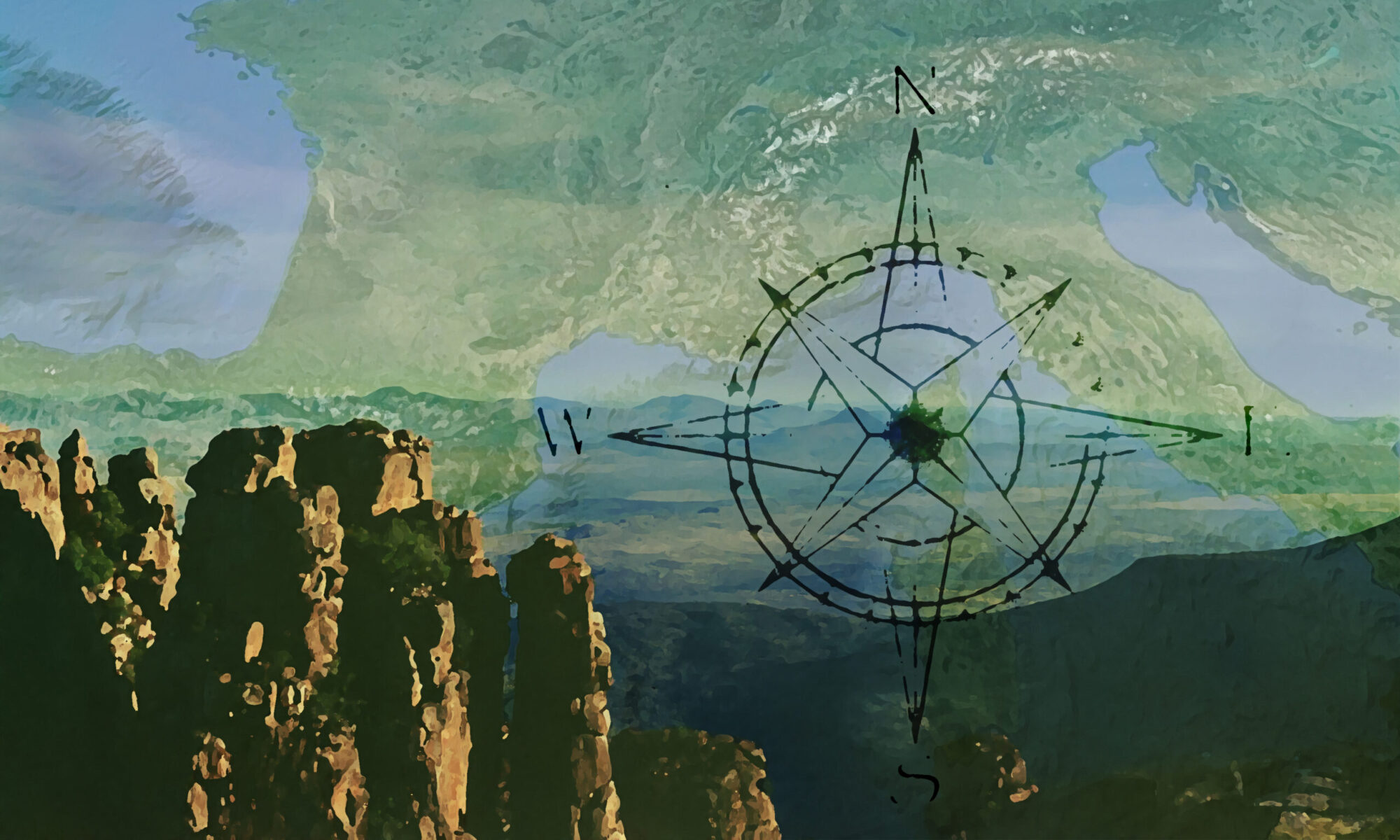
mytouristmaps.com
Travel & Tourist Maps, Utilities and Curiosities from the World
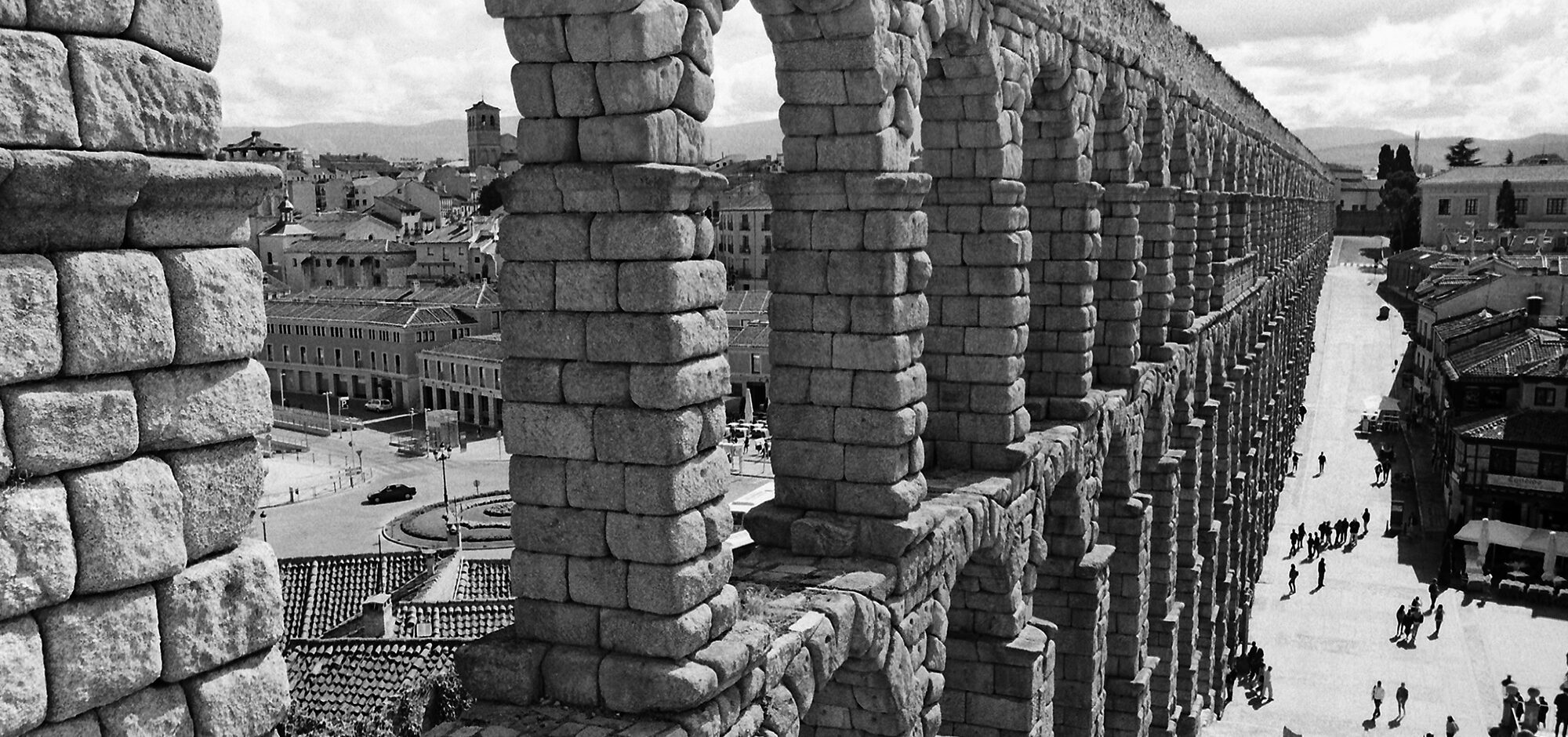
Tourist map of SPAIN
Interactive travel and tourist map of Spain: click on icons and writings on the map to open web links.
The third most visited country in the world: with canyons, mountains, 5000 km of coastline, beaches and cliffs, vibrant nightlife, delicious ham and the best festival parties… Spain is definitely one of the world’s best travel destinations.
Population: 46.710.000 Area: 505.990 sq.km Official Language : Spanish Currency: €uro Drivers Lane: Right When to go: from April to October Book Now Climate Rent a Car Flights

FURTHER LINKS
Spanish official tourism website Mini Hollywood Western Theme Park Mount Cabezón Sequoia Park
Escuela Cantabra de Surf
Family resorts in Spain
Discover Spain’s best tourist attractions and top sights through our map! Which are the best places to visit in Spain? Simply click on the map’s links to be quickly redirected to images and useful websites for accommodation, activities, transport and much more.
photo © mytouristmaps (Segovia roman aqueduct)
Privacy Overview

Touropia Travel Experts
Discover the World
17 Best Places to Visit in Spain

From the Pyrenees to the Mediterranean, and from there to the Atlantic, Spain is more diverse than stereotypes would have you believe. Paella and bullfighting may be Spanish, but neither defines this Iberian country . You’ll get to witness a wide range of culture in Spain – more than you’d expect.
Discover Catalan culture in Barcelona, complete with dreamlike buildings thanks to Antoni Gaud. Try out pintxos – the Basque take on tapas – in the northwest, and see the mark left by Moorish architecture in Andalusia in the south.
There’s a whole lot more besides. And that’s without even mentioning the beaches of the famous Costas. Or the incredible Roman ruins that dot the country – especially Segovia, with its aqueduct. Expect history, good food, and plenty of sun – all in healthy doses. Plan your trip to this awesome Mediterranean travel destination with our list of the best places to visit in Spain.
Map of Places to Visit in Spain
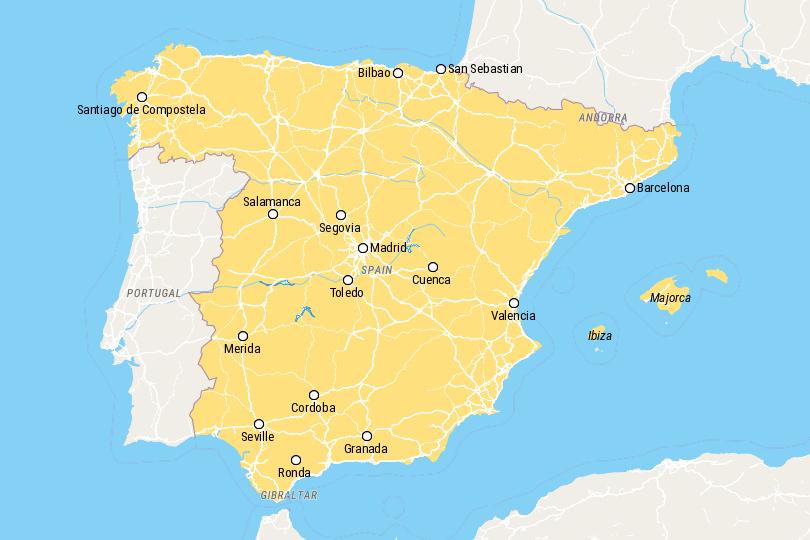
Founded back in 25 AD by the Romans, Merida boasts some of the most impressive, extensive, and well-preserved ruins in the whole of Spain. Now the capital of the autonomous community of Extremadura , the city lies in the western-central part of the Iberian Peninsula, with the Guadiana and Albarregas rivers running through it.
As it boasts almost two thousand years of history, ancient historical sights and archaeological ruins are found wherever you go. Of these, the magnificent old Roman Theatre is a must visit; it still holds flamenco shows and theater performances to this day.
Besides this, there are the wonderful remains of a Moorish fortress, as well as a remarkably well-preserved bridge, aqueduct, and hippodrome – all of which were built by the Romans. In addition, there are some lovely Baroque and Gothic churches scattered around town, as well as interesting and informative museums showcasing the city’s rich history.
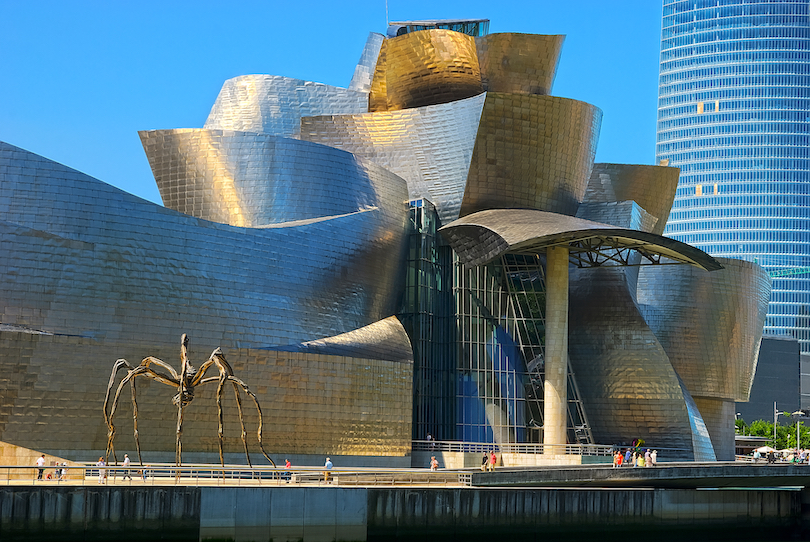
The largest city in Spain’s Basque Country, Bilbao lies on an estuary just 16 kilometers south of the Bay of Biscay . As its climate is milder and wetter than much of the rest of the country, the city’s parks and riverbanks are fertile and green, as are the rolling hills surrounding it.
Bilbao was best known as an important seaport and industrial city in northern Spain until the construction of an architectural marvel in the 1990s known as the Guggenheim Museum . Since then, this capital city of Vizcaya has experienced a boom in tourism, promoting economic growth and revitalization of its many hidden gems , making it a popular destination.
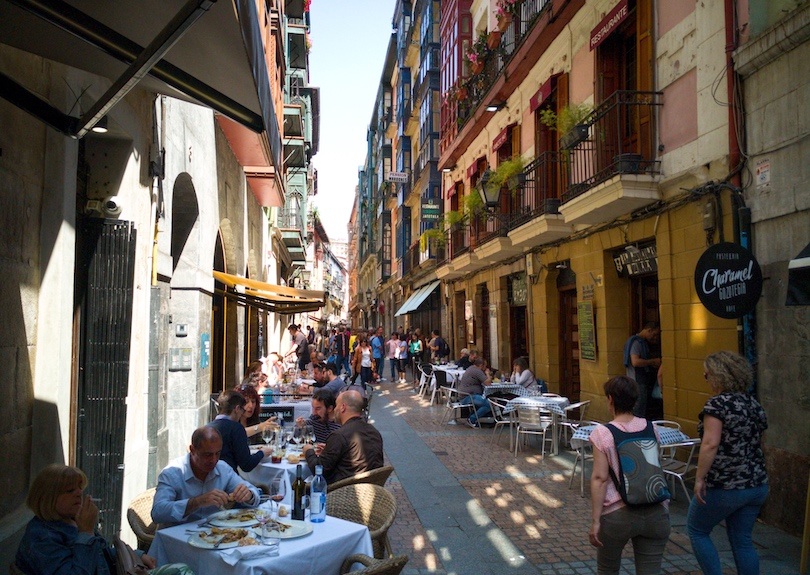
Celebrated as one of the most important architectural works of its time, the Guggenheim Museum now shines as Bilbao’s city symbol. Devoted to modern and contemporary art, this giant complex of interconnecting buildings presents a massive work of abstract sculpture that suggests a maritime theme with its simulation of ship outlines and shimmering fish scales.
Other places to go in Bilbao include the 14th century Gothic Cathedral of Santiago and the Basilica de Begoña. Built in 1909 and recently refurbished, the Alhondiga is a multipurpose complex housing a library, restaurants and a rooftop swimming pool with a glass floor.
15. Salamanca
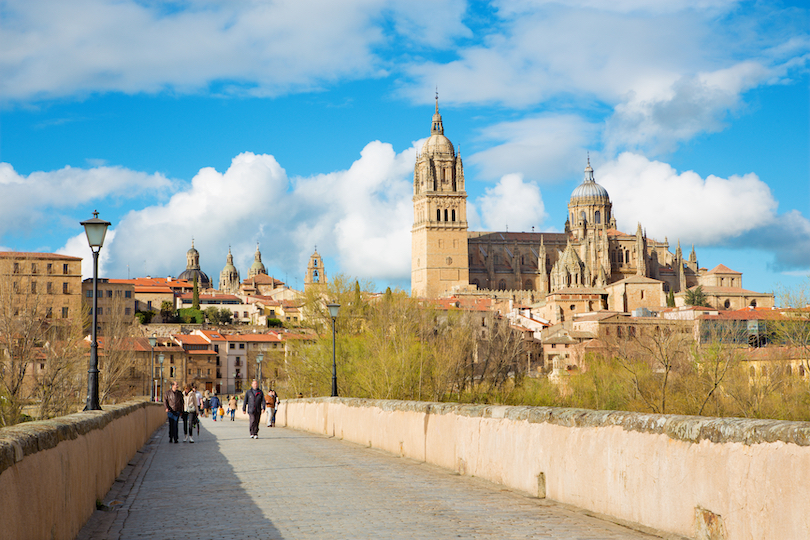
The capital and largest city of the province of the same name, Salamanca lies on the banks of the Tormes River on Spain’s Northern Plateau. Widely considered to be one of the most beautiful Renaissance cities in the whole of Europe, its historic center is full of architectural treasures and incredible monuments that date back centuries.
Life in the city revolves around the busy and bustling Plaza Mayor , which is lined by cafes, bars and restaurants. The expansive and elegant square looks particularly magical at night when its majestic buildings are lit up.
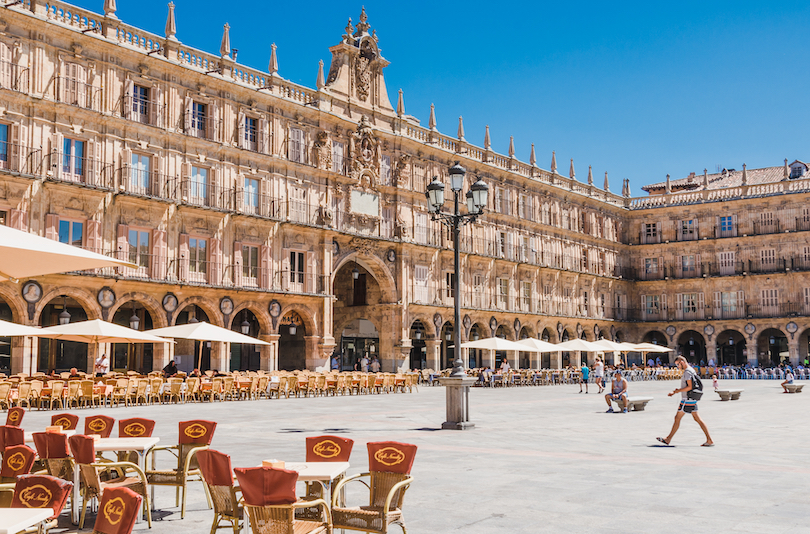
Nearby, you can find other stunning places to see such as the New and Old Cathedrals, both of which exhibit exquisite architecture. Like the rest of the city, they are built out of sandstone. It is these warm hues that lend Salamanca its nickname – La Dorada , or ‘Golden City’.
While history is all around, Salamanca has a vivacious and youthful feel thanks to its large student population. Remarkably, the University of Salamanca was founded in 1218 and is one of the oldest higher education institutions in Europe.
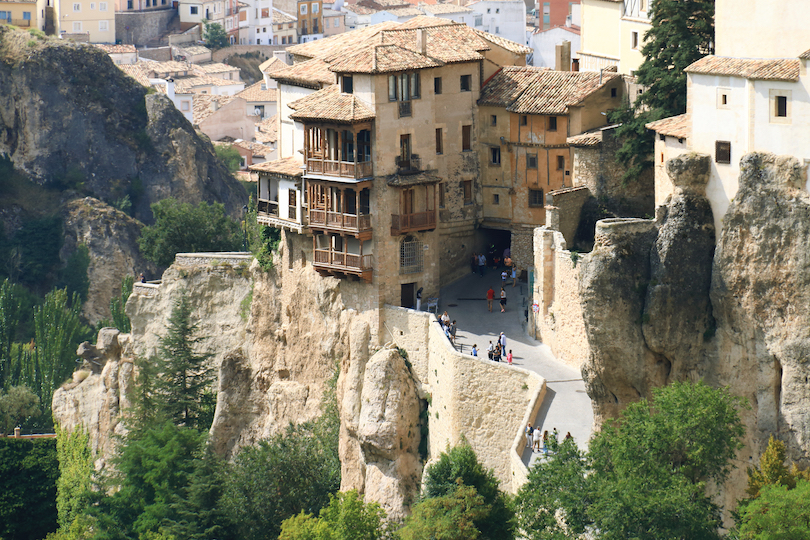
One of the most popular cities to visit in the Castilla La Mancha region of Spain, Cuenca is located in a precarious position at the point where two deep river gorges meet. Its strategic setting saw it fought over, conquered and ruled by both the Muslims and Christians, with Napoleon himself leaving his mark in the early 1800s.
This makes it fascinating to explore; lots of centuries-old churches, a cathedral, and a castle can be found hidden away among the meandering streets of its medieval old town. While its beautiful buildings are painted in warm hues, vivid colors and daring designs coat the walls of its numerous modern art galleries and museums.
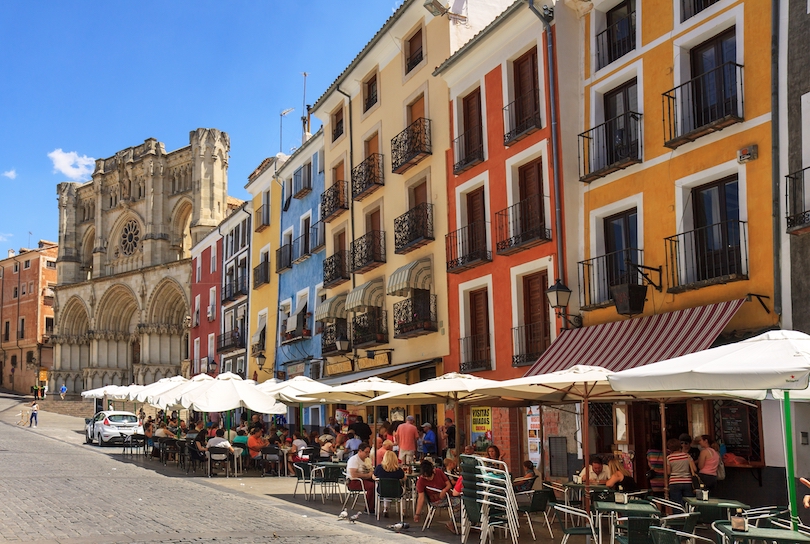
The charming city is particularly noted for its casas colgadas – or hanging houses – which are built over the side of the clifftop upon which Cuenca is perched. Besides being phenomenal feats of engineering, these astounding edifices make for some fantastic photos and are best viewed from the bridge of San Pablo.
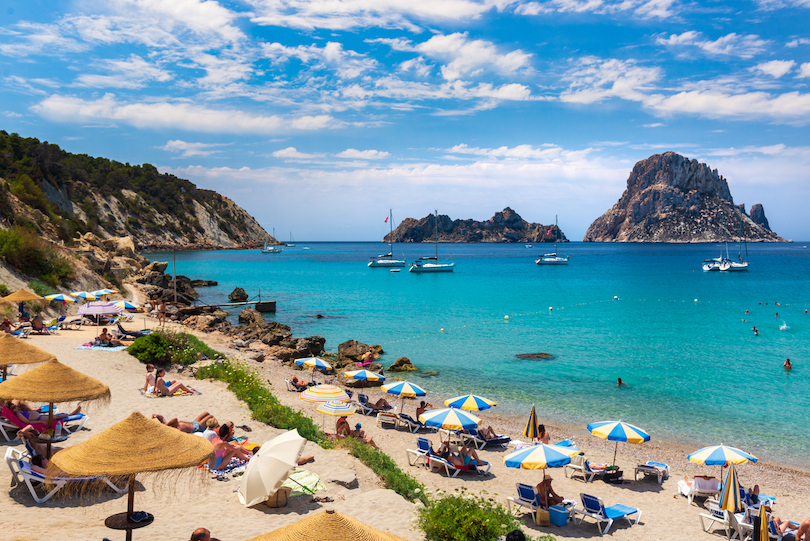
The third largest of the Balearic Islands, Ibiza is located off the east coast of Spain, surrounded by the sparkling waters of the Mediterranean . While it is famous for its pounding nightlife and summer club scene which attract world-renowned DJs to its shores, the island actually has many other different sides.
Quite rocky and rugged, Ibiza is lined by beautiful bays and beaches; this, coupled with its warm, sunny and dry climate, makes it a great beach holiday destination . The largest city on the island, Ibiza Town boasts a majestic walled old town perched atop of a hill overlooking the sea.
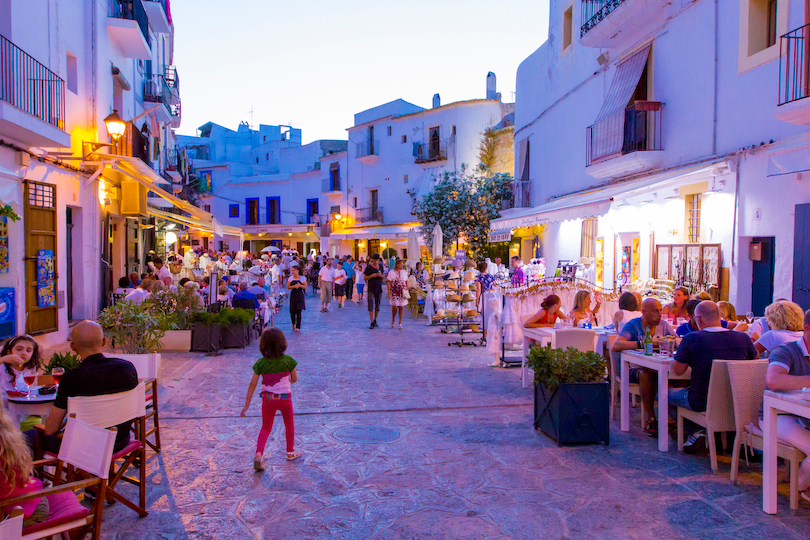
While you can certainly find relaxing rural retreats and sleepy, seaside villages on the island, many people visit Ibiza for its incredible party scene and exhilarating electronic dance sets. In summer, its heaving clubs stay open through the night until dawn, when the sun finally rises over the sea.
12. Segovia
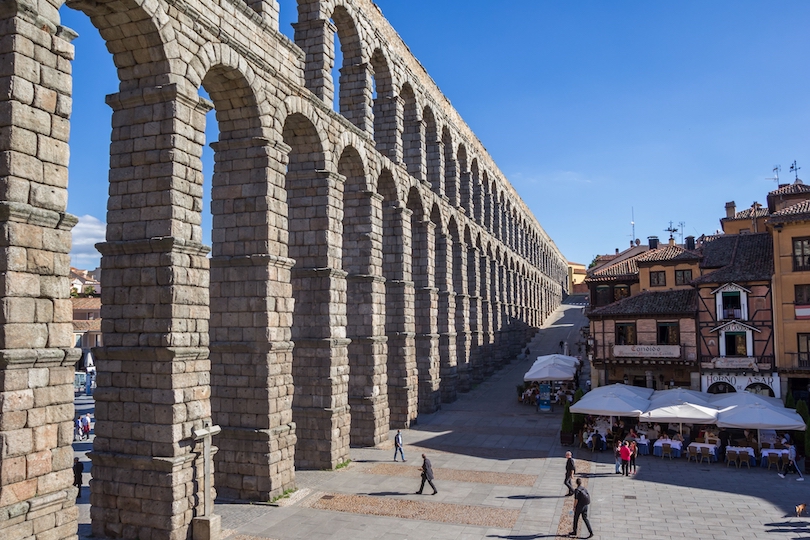
The capital and largest city of the province of the same name, Segovia is set in a scenic spot with the Sierra de Guadarrama mountains rising in the distance. Its sun-kissed streets straddle the Eresma River on Spain’s Inner Plateau with Valladolid and Madrid lying not far away.
Segovia is famed for its historical sights . Within its walled Old Town you can find the Aqueduct of Segovia , which was built around 100 AD by the Romans. While this engineering marvel acts as the city’s symbol, other astonishing sights, such as a grand and gorgeous Gothic cathedral and numerous churches, convents and monasteries, can be found nearby.
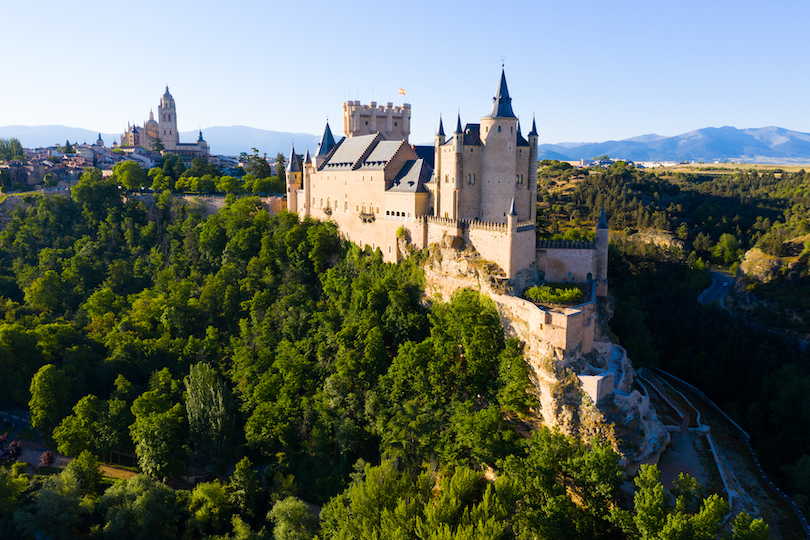
The other main attraction is the elegant Alcazar of Segovia , set atop a rocky outcrop overlooking the city. Said to have inspired Walt Disney’s Sleeping Beauty Castle, the medieval castle and palace features lots of fine architecture and was once one of the favorite royal residences of the Kings of Castille.
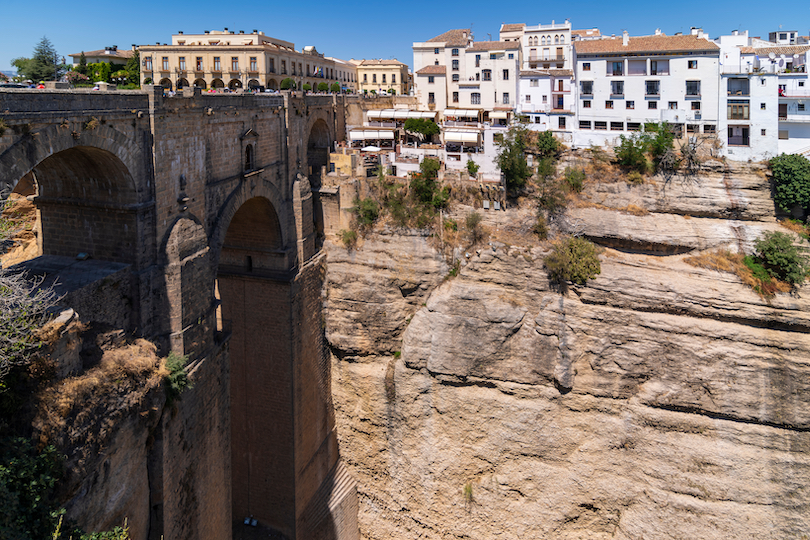
Located in one of the most spectacular settings imaginable, Ronda, in the south of Spain, straddles the steep El Tajo gorge , overlooking the valleys and hills that lie before it.
Spanning the breadth of the gorge is Puente Nuevo, the city’s main landmark built in 1793. The impressive bridge connects the more modern El Mercadillo part of town with El Ciudad , the old Moorish quarter, which is home to marvelous churches, elegant palaces and pretty gardens. The town is considered to be the cradle of modern Spanish bullfighting; its neoclassical ring is the oldest such building in the country.
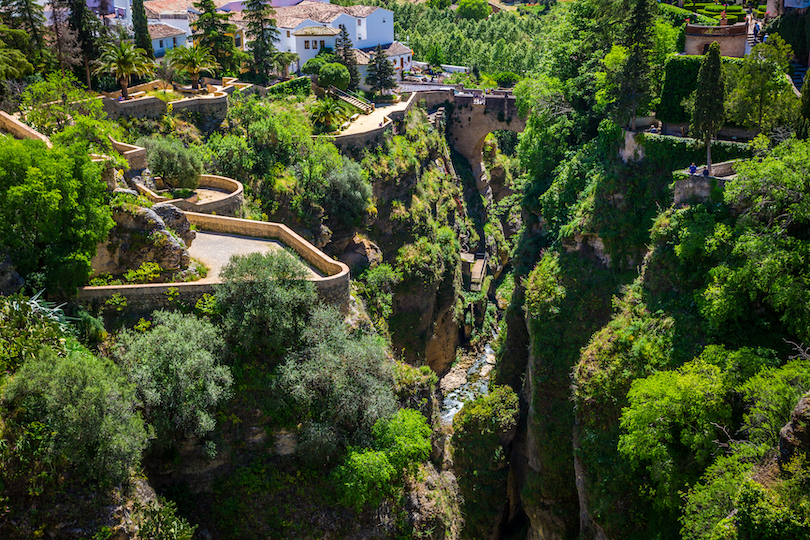
Due to its rich cultural heritage and history as well as its dramatic clifftop setting, Ronda has long drawn writers and poets alike to its ancient streets.
While Ernest Hemingway, James Joyce and Rainer Maria Rilke all visited at one time or another, Ronda now attracts lots of tourists and is one of the most popular and picturesque towns to visit in Andalusia .
10. Santiago de Compostela
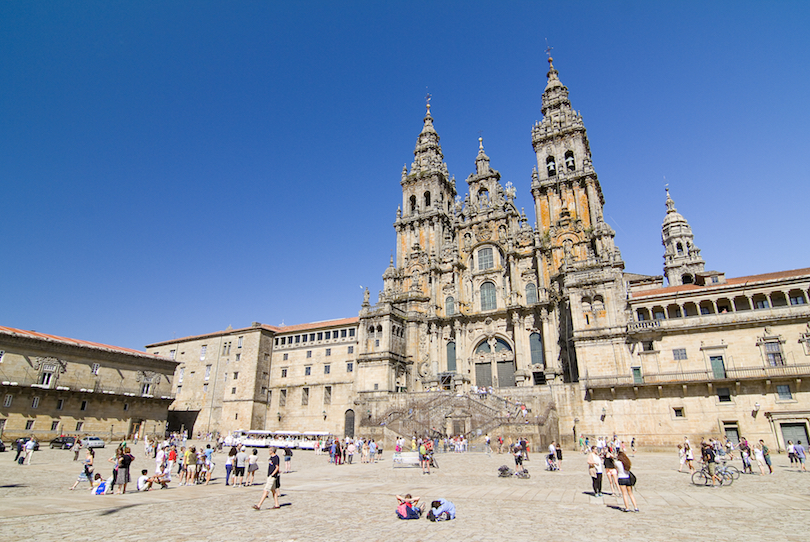
The capital city of the Galicia region in northwestern Spain, Santiago de Compostela is famous as the final destination of the traditional pilgrimage known as Camino de Santiago. Also called the Way of St. James, this pilgrimage dates back to Medieval times and is important to many because it is believed that Santiago de Compostela is where St. James , an Apostle of Jesus Christ, is buried. Today, the city attracts thousands of visitors every year for both its religious tradition and history.
The arriving point for most pilgrims is the main square, Praza do Obradoiro . Situated in the heart of the city, this bustling plaza is the scene of many important landmarks , particularly the Santiago Cathedral where the tomb of St. James is located. Other historic buildings here are GelmÌrez Palace, Rajoy Palace, Catholic Kings Hostal and San Jeronimo College.
The Pilgrimage Museum is a good place to learn all about the history and significance of the Camino de Santiago pilgrimage while the Museum of the Galician People showcases the culture and history of the region.
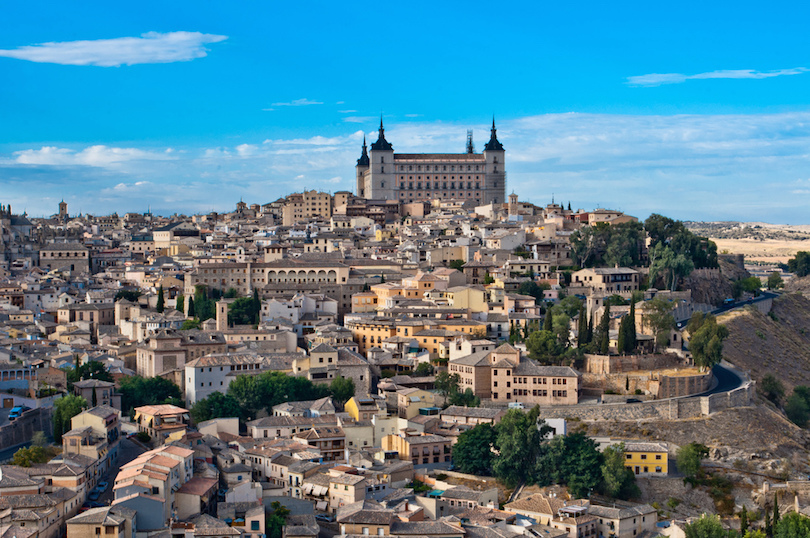
Perched on a mountaintop in central Spain, Toledo served as the Spanish capital until the 16th century. Because it was inhabited by Jews, Christians and Muslims for many centuries, the city is sometimes called the “City of Three Cultures.” Today, Toledo is a popular destination for its wealth of historic art and architecture that dates back to the Roman Empire .
The best thing to do in Toledo is to get lost amid the medieval streets and admire the old architecture that includes stunning churches, synagogues and mosques as well as a remarkable old Roman fortress.
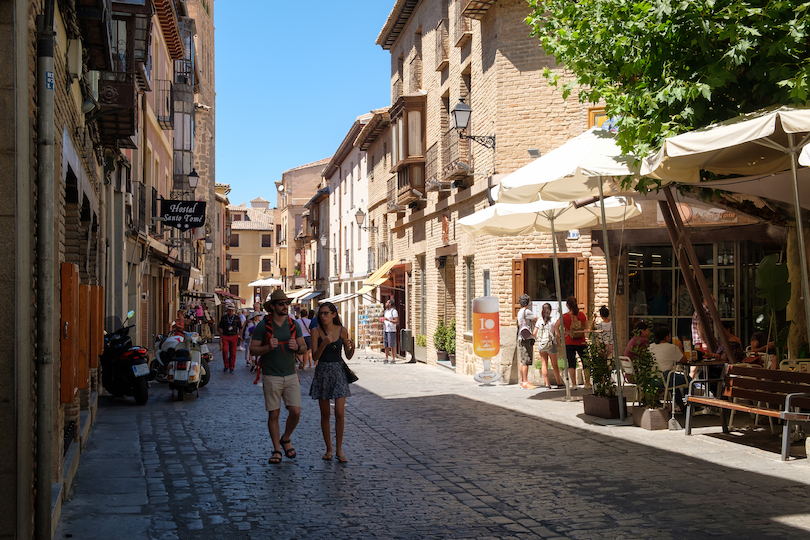
The site of many historic events, the Zordocover plaza is well worth a visit as well as the many nearby shops. Charming cafes offer a break to relax, people-watch and sample local specialties like Mazapan , a sweet treat made with almonds and pine nuts. In the evenings, local bars offer pre-dinner drinks and tapas.
Once the home of Spain’s great painter, El Greco , Toledo features a vibrant arts scene. The city is teeming in museums and art galleries while the Cathedral of Toledo has an impressive art collection of works by masters like Goya, Ralphael and Titian. A great number of El Greco’s pieces can be seen throughout many of the city’s churches and landmarks.

Cordoba is the capital of the province of the same name in the Andalusian region of southern Spain. While Cordoba is characterized by its small town charm, this mid-size city offers all the historic and cultural attractions of a bustling metropolis.
One of the oldest towns in Europe, the historic quarter of Cordoba is a maze of tiny medieval streets, plazas and whitewashed courtyards all situated around the star attraction, the Mezquita . Initially built as a mosque, the Mezquita is now a glorious cathedral retaining most of its original architecture. Its forest of columns topped with Islamic-style red and white striped arches serves as a reminder of the glory and importance Córdoba held in medieval times. Outside the Mezquita is a beautiful orange grove perfect for relaxing.
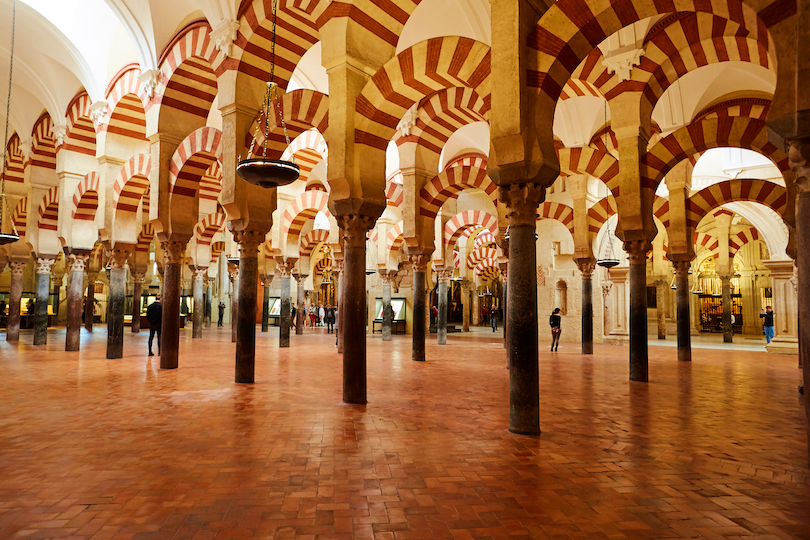
Other places of interest include the Fortress of the Christian Monarchs, the Street of Flowers, and the Old Jewish Quarter with its charming patios and souvenir shops. Once a Roman city, Cordoba also features many Roman structures including its old walls, gates, bridge, an amphitheater and mausoleum.
Throughout the city are various plazas offering a range of museums, theaters, restaurants, hotels and bars. Plaza de las Tendillas is the main square with a vibrant shopping scene while the Plaza del Port is associated with Cervantes’s Don Quixote.
Cordoba is buzzing in the month of May with three lively festivals that include the May Crosses Festival, the Patios Festival and the Codoba Fair. During these events, the city’s plazas and courtyards are all decorated while various contests, flamenco dancing, traditional food and drink all fill the streets.
7. San Sebastian
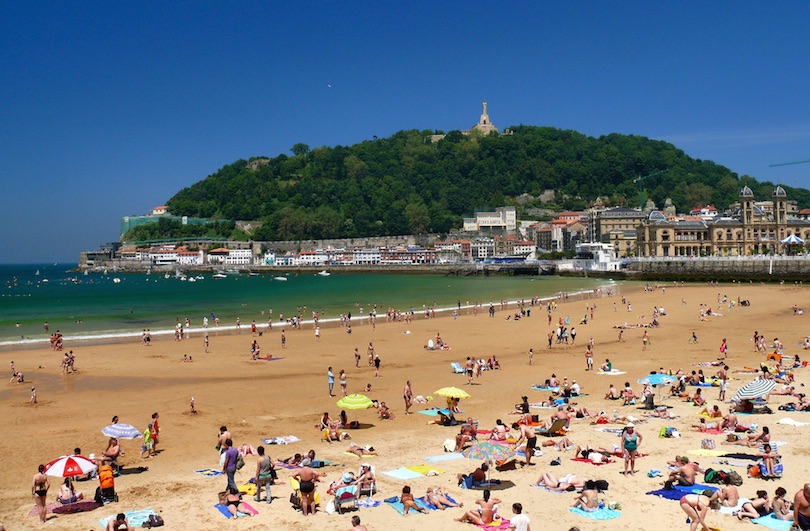
San Sebastian is the capital of the Gipuzko province, located in the Basque country of North Spain off the coast of the Bay of Biscay. This beautiful seaside city is well-loved for its excellent beaches and outstanding culinary tradition.
Although it is divided into several districts, San Sebastian is a small, cozy city crammed with restaurants, pintxo bars, designer shops and an enclosed mall. The Old Town features many historic buildings reconstructed in the 19th century after the city was nearly destroyed during the Napoleonic Wars.
San Sebastian boasts some of the best beaches in Europe with the most popular of these being Playa de la Concha , which offers sunbathing and water activities like swimming, kayaking and water skiing. Playa de la Zurriola attracts many surfers and provides surf board and body board rentals.
Overlooking the city are two lofty hills, Monte Urgell and Mount Igueldo, which offer hiking, funicular rides, amusement parks, remarkable statues and fantastic views.
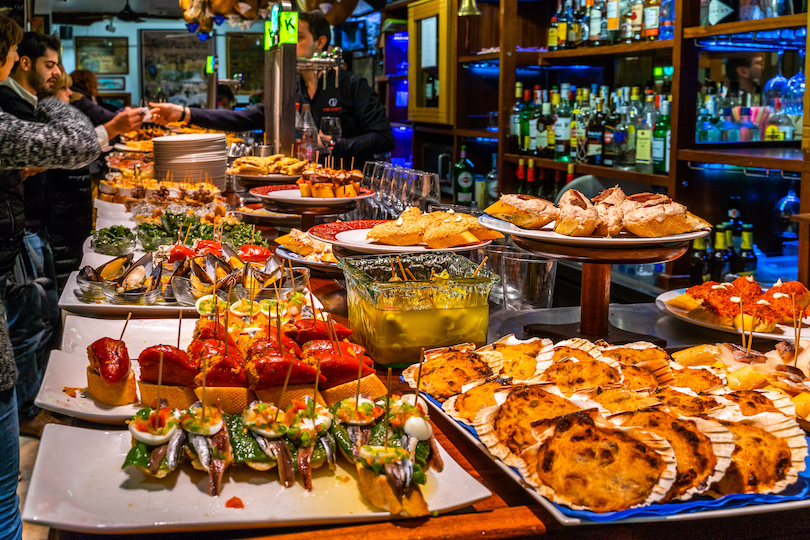
San Sebastian is widely appreciated in Spain for its pintxos . Pintxos are appetizers, which are prepared in a wide variety of fresh vegetables, meats and seafood. Many of the bars in the city feature buffets displaying a range of these pintxos. The local tradition is to go from one bar to the next, sampling one or two pintxos with a drink of wine or beer.
A number of festivals and events take place in the city throughout the year. Drawing the most crowds are the San Sebastian Film Festival and the Jazz Festival.
6. Valencia

One of the largest and most important cities in Spain , Valencia is located in the eastern part of the country in the region of Valencia. After several years of major construction and renovation, Valencia today is famous for its Fallas Festival and the City of Arts and Sciences architectural masterpiece.
Valencia is stuffed with restored historic buildings that include stunning churches, old monasteries such as San Miguel de los Reyes and the site of an ancient silk trade center known today as the Silk Exchange Market.
See also: Where to Stay in Valencia
After redirecting the Turia River, the city constructed its most impressive attraction , a massive cultural and entertainment complex known as the City of Arts and Science. Contained within this complex are several buildings such as a science museum, planetarium, aquarium, arts museum and an IMAX theater that are each artistic marvels in and of themselves. Also included in the old Turia riverbed are beautiful gardens, athletic parks and artificial lakes.
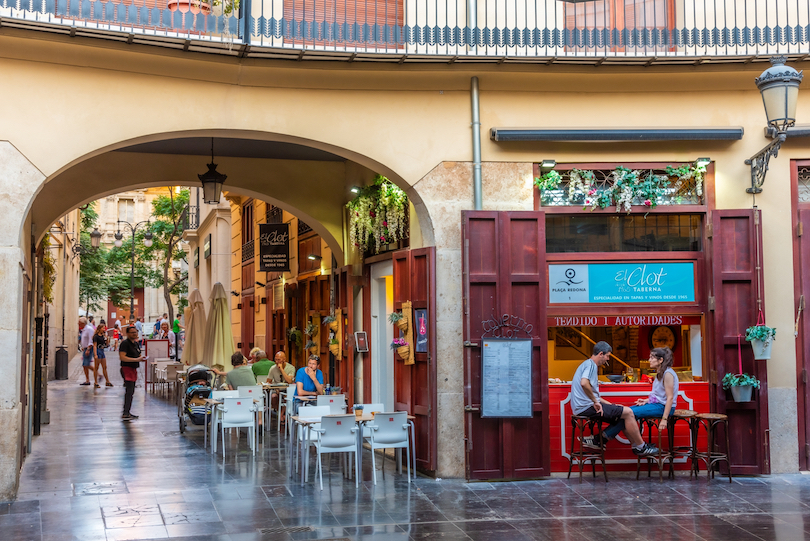
One of Valencia’s most popular neighborhoods is the Barri del Carme with its colorful mix of architecture, diverse ethnic groups, trendy shops and outdoor cafes.
Every March, Valencia hosts the Fallas Festival where each neighborhood displays papier-mâché figures of all sizes and colors for a whole week. At the end of the week, the “fallas” are ceremoniously burned, and the communities party into the night. However, March isn’t the only time to party in Valencia. Every night, the city vibrates with lively bars and nightclubs in every neighborhood.
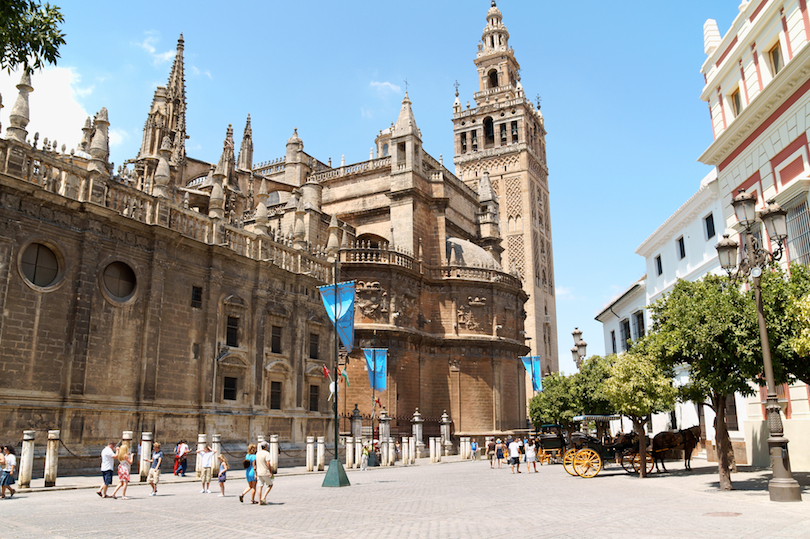
Exceptional tourist attractions , lively festivals and buzzing nightlife all make Seville the top destination in Southern Spain. As the capital city of Andalusia, Seville is also the region’s financial and cultural capital.
Seville is home to many beautiful and important historic landmarks, chief of which is the grand Cathedral of Seville , where it is believed that Christopher Columbus is buried. Other significant buildings include the Real Alcazar , an extravagant Moorish palace with luxurious gardens and a room where Christopher Columbus’s voyage to the New World was planned.
See also: Where to Stay in Seville
The city is also home to the largest wooden structure in the world, the Metropol Parasol, a giant umbrella-shaped structure housing the main market.
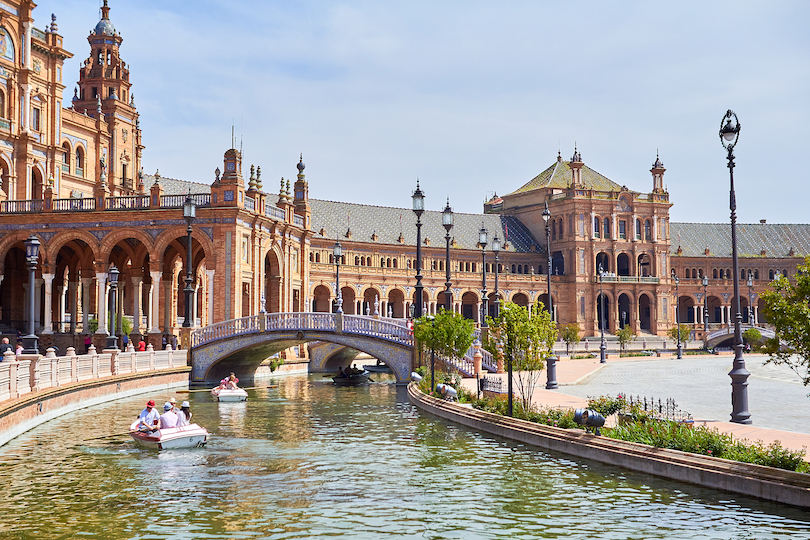
As the region’s cultural capital, Seville offers numerous museums, art galleries and entertainment venues. When the sun goes down, the nightlife scene lights up in Seville’s neighborhoods with their bars, nightclubs and flamenco dance halls.
Every year, Seville hosts its April Fair, one of Spain’s most celebrated events, where the city’s streets turn into one giant party involving centuries-old customs, traditional costumes, flamenco dancing, bullfights and plenty of local food and drink.
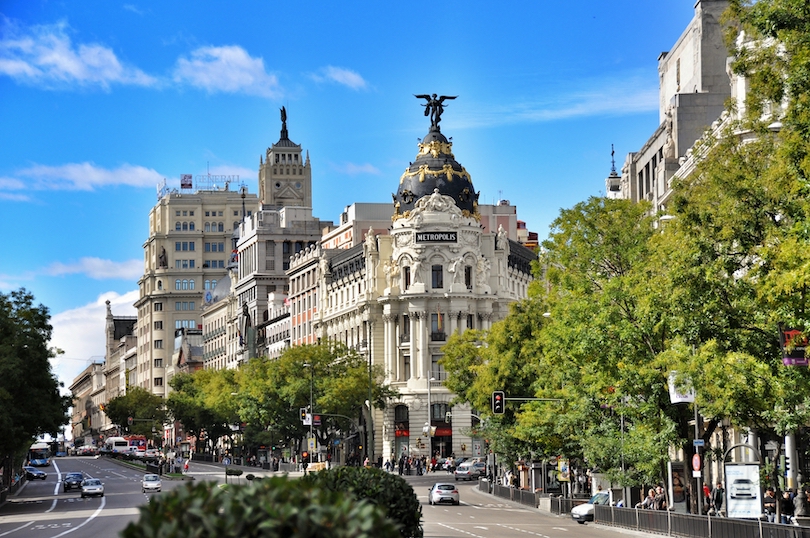
Spain’s capital and largest city, Madrid, is widely known for its sizzling nightlife scene. Home to a number of universities, the city constitutes a diversity of ethnic groups, making it one of Europe’s most colorful cosmopolitan cities.
Madrid is a beautiful city mixed with old and new architecture. The capital is comprised of several neighborhoods offering their own unique character and attractions ranging from historic quarters to older crowd communities, university areas, multicultural districts and party scenes.
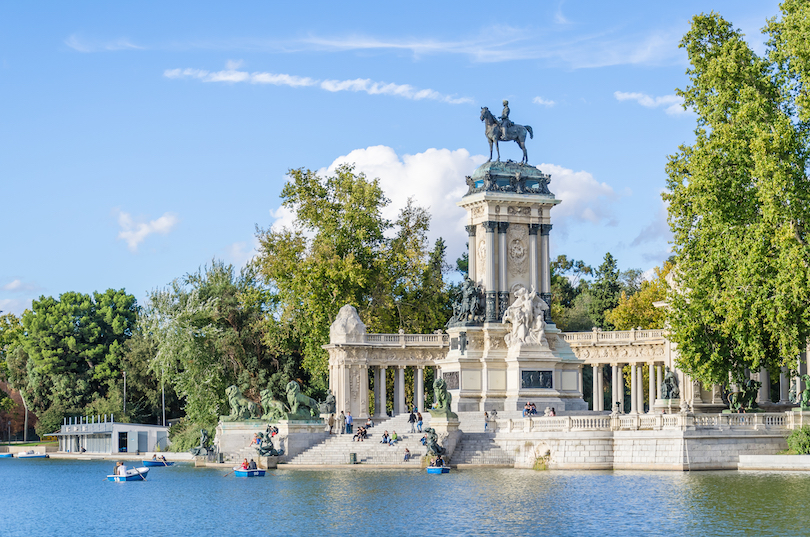
The heart of the city is Puerta del Sol , a large plaza serving as the scene of festivals, important gatherings and street performers as well as a hub for the public transportation network. Another important square is Plaza Mayor , known for its many souvenir shops, cafes and the lively San Miguel Market.
Located within the city center are most of Madrid’s most popular tourist attractions such as the Royal Palace , the residence of Spain’s monarch, and a plethora of glorious churches and historic landmarks. Madrid offers many things to see and do from beautiful parks and zoos to football matches, museums, art galleries and concerts.
3. Mallorca
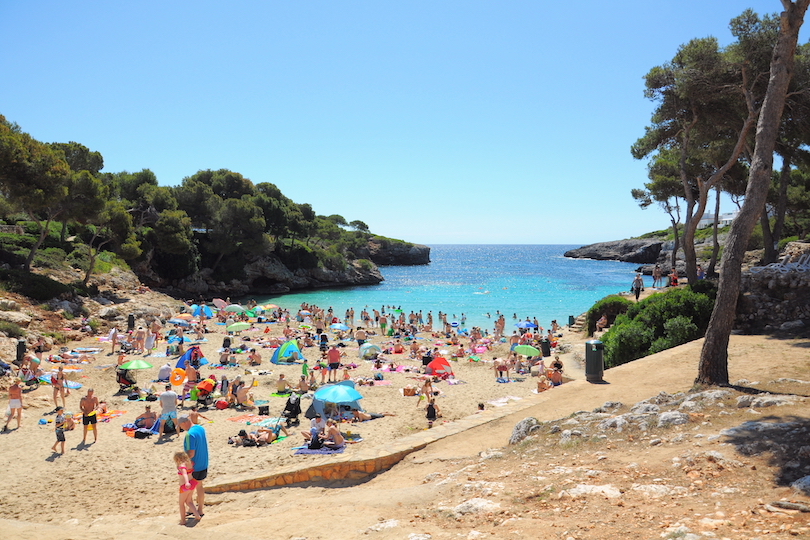
The largest of Spain’s Balearic Islands, Mallorca is surrounded by the sparkling waters of the Mediterranean, with jagged cliffs, secluded coves, and beautiful beaches lining its shores. Long a popular tourist destination , the island is blessed with a warm and welcoming climate and plenty of incredible scenery.
While its mountainous interior is home to ancient hilltop monasteries and sleepy villages, Mallorca ‘s spectacular coastline is dotted with seaside towns and resorts. Sunbathing, swimming and watersports are all popular pastimes, with delicious local cuisine and seafood on offer wherever you go.
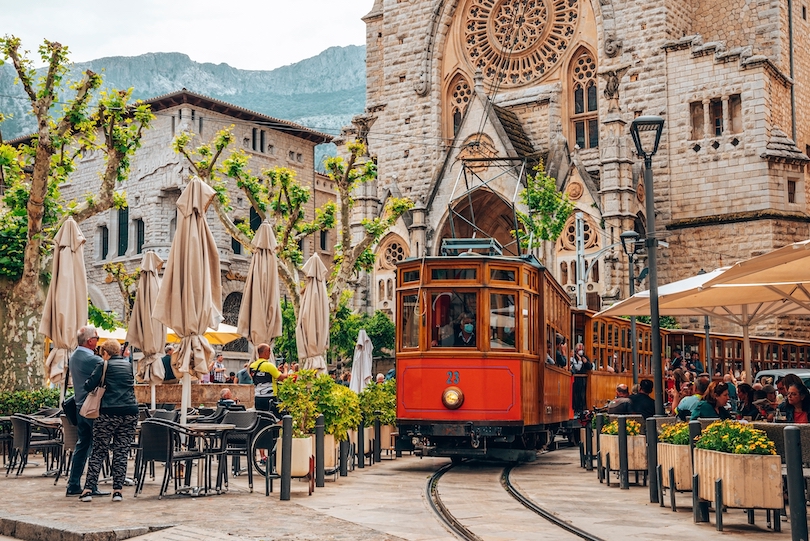
The island’s main city and capital is Palma de Mallorca . There is a beautiful old town for visitors to explore, with winding narrow streets and centuries-old buildings beneath its exquisite Gothic cathedral. The pretty town of Soller is also worth visiting for its scenic, secluded setting, as is the charming mountain village of Valldemossa.
2. Barcelona
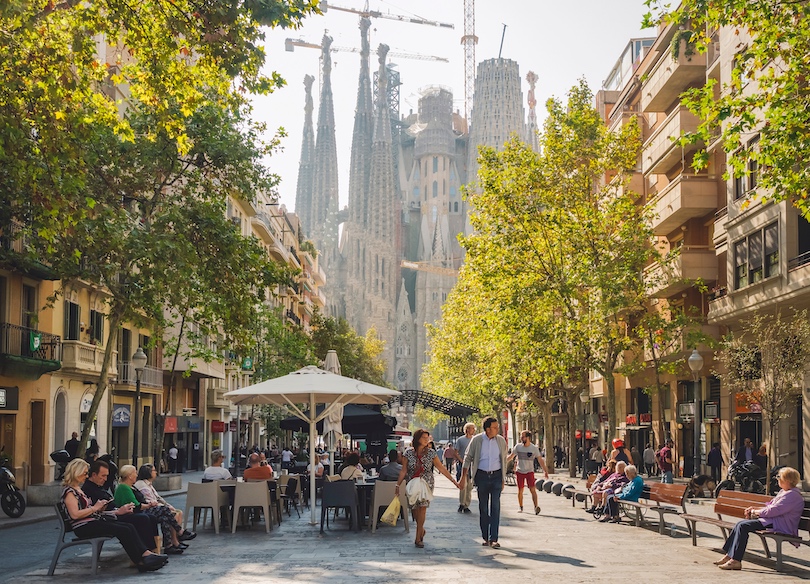
Located in northeastern Spain, Barcelona is one of the country’s top travel destinations because it offers everything tourists look for in a European city from historic architecture to lively shopping, vibrant culture and buzzing nightlife.
Ciutat Vella, the Old City, is Barcelona’s main attraction . Here, tourists will find the Gothic Quarter with its beautiful, old churches, Roman ruins and cobblestone streets lined with outdoor cafes and restaurants.
Surrounded by statues and fountains, La Placa Catalunya is a popular gathering spot and hub for local transportation services. Popular activities in Barcelona include strolling along La Rambla , a tree-lined pedestrian avenue, and sunbath on Barceloneta, one of the city’s most popular beaches.
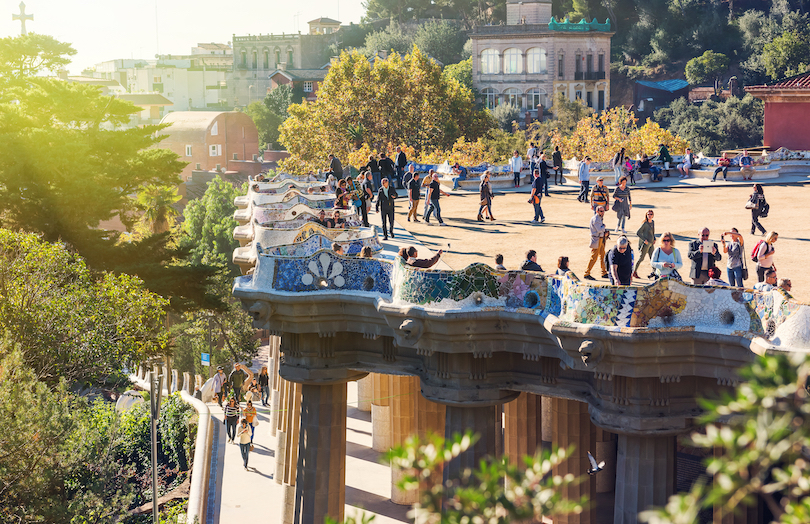
Unique to Barcelona are the architectural marvels of Spain’s famous architect, Antoni Gaudi, which include the Sagrada Familia and the Casa Batllo . Both of these extraordinary structures feature combinations of fascinating designs, shapes and colors.
As a major cultural center, Barcelona boasts a variety of museums , art galleries, theaters and flamenco shows. The city also hosts a number of festivals including the Monegros Desert Festival, one of Spain’s largest electronic music events. With its long love affair with sports, Barcelona is home to the largest football stadium in the world, Nou Camp.
Just outside of the city is one of Barcelona’s most visited sites , Montserrat. Accessed by hiking, train or cable car, Montserrat is the site of secret caves, an underground lake and the Black Madonna.
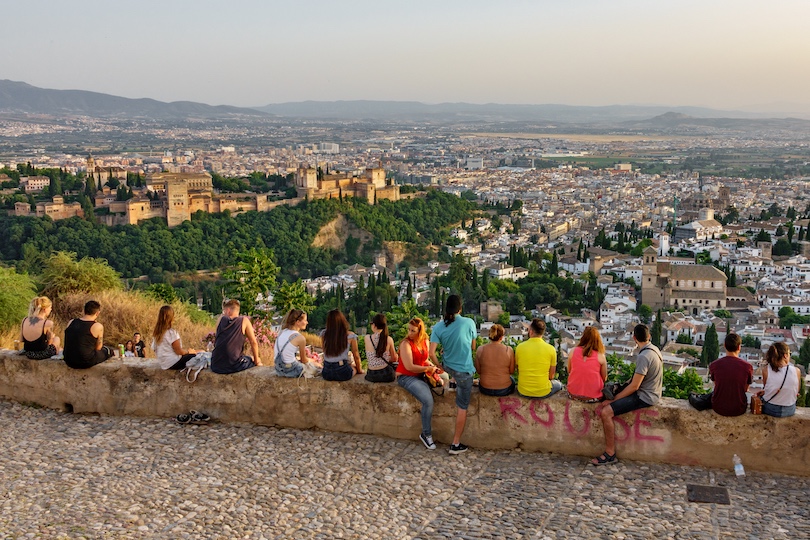
Located at the base of the Sierra Nevada mountains of southern Spain, Granada is the capital of the Granada province. A mid-sized city, Granada offers a perfect blend of spectacular attractions , traditional cultures and an animated nightlife. But most of all it is the home of the Alhambra , a pinnacle of Moorish art that encapsulates Andalusian history and is one of the great architectural sights of Europe.
Attesting to the city’s eventful history are its most notable landmarks, the 16th century Granada Cathedral with its magnificent domed ceiling, and the famous Alhambra, a grand Moorish palace with luxurious gardens and Arab baths.
Granada’s juxtaposing neighborhoods, Sacromonte and Albaicin , are the essence of the city’s culture. Noted for its Christian abbey, Sacromonte is where tourists come to see how gypsies have traditionally lived in various cave dwellings and to watch live dances of flamenco and zambra.
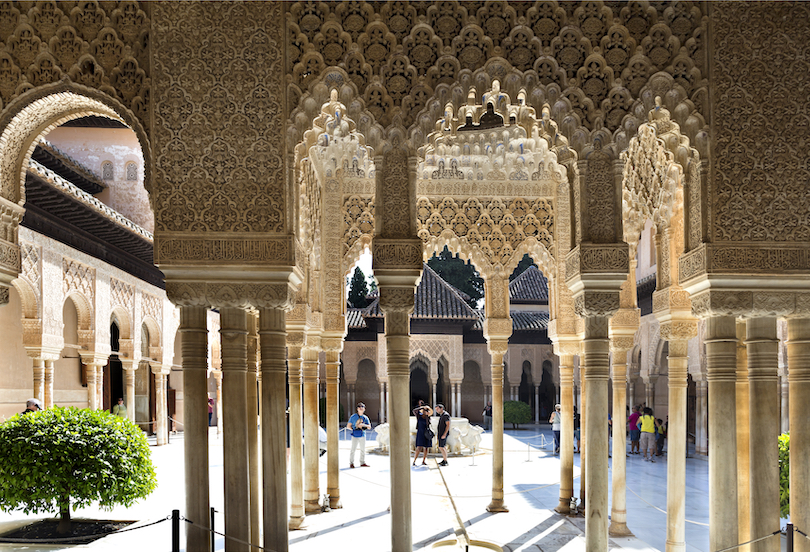
Albaicin, the Arabic Quarter, is the site of a hundred year-old Spice Market. Here among a setting of Moorish architecture, cobblestone streets and vivid bougainvillea, a medley of vendors sell colorful tapestries, wall hangings and exotic teas and spices.
Just outside the city, the Nevada Ski station offers a wide range of activities for all seasons from snow skiing and sledding to mountain climbing, horse riding and cable car rides.
In the evenings, locals roam from one bar to the next, sampling tapas and drinks before immersing themselves in the city’s entertainment choices.
Spain Travel Video
Share this post:.

14 Most Amazing Churches in Spain
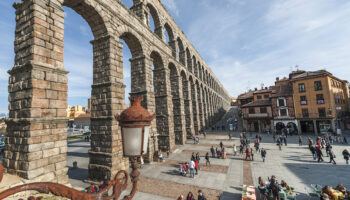
33 Top Attractions & Things to do in Spain
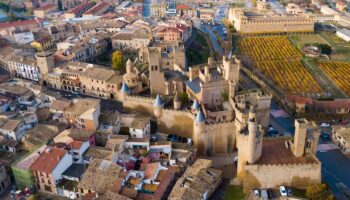
23 Most Beautiful Castles in Spain
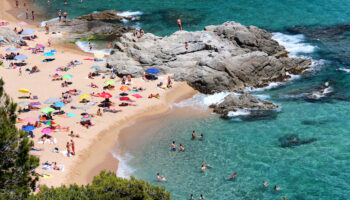
20 Best Beaches in Spain to Visit This Summer
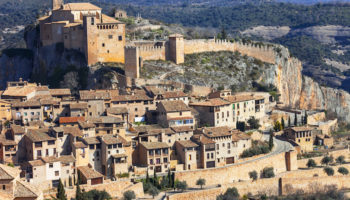
14 Most Enchanting Small Towns in Spain
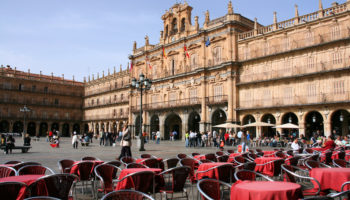
10 Most Underrated Destinations in Spain
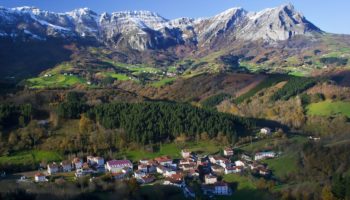
17 Most Beautiful Regions of Spain
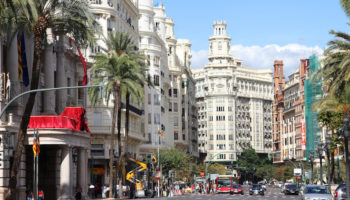
17 Best Cities to Visit in Spain
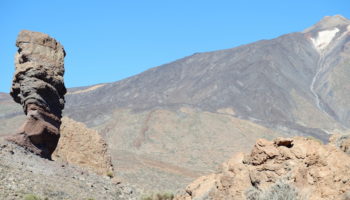
12 Most Beautiful National Parks in Spain
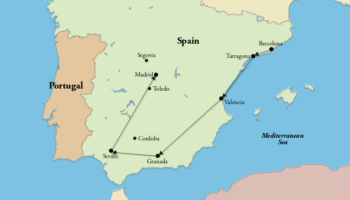
How To Spend 2 Weeks in Spain: DIY Itinerary
Reader interactions.
November 25, 2018 at 10:48 am
Spain is a really a nice country …. The Madrid zoo was fabulous.. The La Rambla in Barcelona was a fun street with lots of shopping places and small restaurants…but the best city in Spain is undoubtedly Seville! Seville is a really beautiful city with big fountains, beautiful churches, nice hotels, little restaurants, small and pleasant streets and beautiful flamenco dancers! I really enjoyed travelling in the tram there…. Most beautiful city I have ever visited!
November 15, 2018 at 1:09 am
I was robbed In Granada. The police were very cooperative. Spain is stunning, in general, the people are so lovely. Now at a villa on the Mediterranean Sea, it is winter .for me it is the sky, surf, sun and sand.
November 13, 2017 at 7:04 pm
Hello, I’m an American. Single woman who will travel alone. I have always loved Spain! I won’t be partying or anything like that, rather I want to see the beautiful cathedrals and historical landmarks. Is it safe to travel by myself taking certain precautions. San Sebastian is definitely on my list and I would love to see some of the smaller cities talked about here on this site.
September 19, 2017 at 7:07 am
I love Spain: specially Madrid, Toledo, Granada, Avila and Seville!
June 25, 2017 at 9:30 am
We just got back from Malaga, Spain….visited the city of Ronda while there…Malaga was beautiful but I found the shopping, and the food/drink was expensive. The City of Ronda was beyond beautiful and enjoyed it immensely. I can’t wait to go back, not sure where I will go next, but it will not be a bustling city…I’m sure Spain has some beautiful small towns that did not make the list that would be lovely to visit.
September 14, 2016 at 3:29 am
I was in Costa Daurada this summer near to Barcelona and it was really gorgeous location. Perfect for families ! We were staying in Salou and enjoy the cultural activities but also many sports activities for my childs, really nice place for holidays
September 10, 2016 at 3:20 am
Hi thanks for the advice. I’m on my way to Malaga soon and would like to tour Spain using the rail service. Any advice on how to get the best deals?
June 14, 2016 at 1:23 am
I loved Spain as a whole in general.If I had to pick the best then order would be Toledo , Seville, Granada, Barcelona,Cordoba,Madrid, Segovia.Loved Toledo n Seville the most.Only visited these places.San Sebastion ,Valencia ,Ibiza ,seville ,mallorca etc.etc. still on the list for next visit.
January 10, 2016 at 2:28 pm
I live in Madrid and I wouldn’t really recommend it for tourists, it’s a nice city and all but I prefer Barcelona with the beach and beautiful buildings and everything, or seville / valencia if you are interested in a city semester.
December 28, 2015 at 5:13 am
I’ve been there last summer, I would also add the city of Ronda to this list, amazing small town with a fantastic scenery.
October 31, 2015 at 5:53 pm
I’ve seen the temperature from Seville you’ve got, and I can completely assure that these are completely fake!! I don’t understand the fahrenheit measures, but we usually have 50-52 degrees in July and august. Or more. So, think about coming Seville in these months. Seville is more beautiful on April or November.

November 2, 2015 at 1:11 am
@Maria, I’ve been to Seville in August, and yes it was extremely warm! However I don’t think it ever gets warmer than 45. Good point though about avoiding Seville in the summer if you prefer milder weather.
August 1, 2015 at 2:05 pm
if I’m to make my own list,Mallorca, Sevilla and Madrid would make the top 3…..about the robbery,that can almost happen every where. Sorry about that and be more watchful next time.
March 4, 2015 at 11:46 am
Nice list. Only seen half of them. I guess it’s top 10 big cities because there are so many smaller cities that are really beautiful, historical and unique. Examples from the South: Cadiz, Ronda, Antequera. I’m not so familiar with all other regions. All parts of the country have their spots. Of the cities om the list personally I enjoy Granada, Sevilla and San Sebastian more than Barcelona but I agree that Barcelona is a must-place to see in so many ways. Also one more vote for Burgos! It’s epic and picturesque and it’s not a small place either, should be on the list. Saludos desde Finlandia!
March 3, 2015 at 8:54 am
Hi, I’m from Spain, I don’t agree with the order of the list. Barcelona is very nice but I don’t think that it’s the best. And my city isn’t in the list, it’s really nice and it’s got a lot of monuments like its cathedral and a great culture. I would like you to add Burgos on the list
June 10, 2014 at 2:01 am
Hi Global Nomads, you are obviously seasoned travelers. I agree, steer clear of places where they rob tourists. I went to Miami once and got robbed…. you can keep the USA, I’m not going back to America after that. Happy traveling .
May 14, 2014 at 8:53 am
I disagree completely with the order of this list. There is NO WAY that Barcelona’s the best place to visit. Galicia, Granada, Sevilla, are much better choices. I agree with Pep. La Alhambra is much more worth seeing than going to Barcelona.
October 1, 2013 at 2:06 pm
Seville and Madrid city center are more beautiful than Barcelona but they don’t spend so much money in hype. The most beautiful building in Spain is “La Alhambra”, Granada. It’s gorgeous. Other nice places: Salamanca, Segovia, Cáceres, Menorca, Altea, and Ronda.
July 28, 2013 at 4:46 pm
Live Spain and ant wait to see at least 4 of the above places, Barcelona was so nice had to go back twice.
June 16, 2013 at 12:57 pm
We tried Alicante, but got robbed in the bus station and did not feel like touring the country any further.
Leave a Reply Cancel reply
Your email address will not be published. Required fields are marked *
This site uses Akismet to reduce spam. Learn how your comment data is processed .


30 Best Things to Do in Spain + MAP
Home | Travel | Europe | Spain | 30 Best Things to Do in Spain + MAP
Spain is a country rich in history, culture, gastronomy, and beautiful landscapes. There are so many things to do in Spain , from visiting its small towns and wonderful beaches to exploring its vivid cities and landmarks.
If you want to know which tourist attractions in Spain you can’t miss, I’ll share the 30 best places and activities in this guide. Not all of them are so well known, but I can assure you that they’ll leave you speechless.
So, are you ready to discover the best places to visit in Spain ?

1. Alhambra of Granada, one of the best places to visit in Spain
Andalusia has a rich Muslim history that’s still present today, which has resulted in some of the best architecture in Spain . The best example of this is the Alhambra in Granada , one of the most famous places in Spain .
This palatial fortress is comprised of a series of Nasrid palaces adorned with white marble columns and muqarnas, which once housed sultans. Moreover, from here, you can see the Sierra Nevada Mountains and the entire city of Granada. Without a doubt, it’s a must-see in Spain , and my favorite part is the Generalife gardens and fountain. If you plan a trip to Southern Spain , you must visit it.
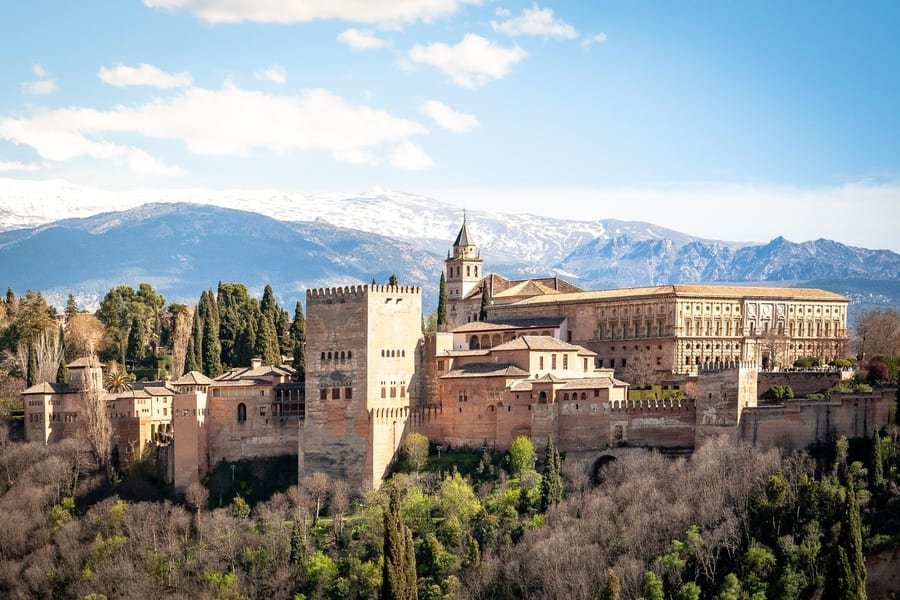
The Alhambra is wildly popular, so if you want full access to the Nasrid palaces, the Alcazaba, the Generalife gardens, and the Partal, I recommend buying your ticket months in advance ; especially during peak season when same-day tickets are impossible to get.
- Recommended accommodation : Hotel Casa Morisca , in the historic neighborhood of Albayzin, at the foot of the Alhambra, is the best option. You’ll have impressive views of the Alhambra and the Generalife, and easy access to the palaces .
2. Visit Seville, one of the best things to do in Spain
Seville is one of the best cities to visit in Spain . I recommend spending at least two days here so you can enjoy everything that Seville has to offer. For example, you’ll love La Giralda, a majestic, 800-year-old Almohad tower that crowns the city’s Cathedral.
Furthermore, the Plaza de España is one of the most iconic points of interest in Spain . Dating back to 1929, it was designed by architect Aníbal González for the Ibero-American Exhibition. You should also walk through the labyrinthine streets of the old Jewish quarter of Santa Cruz, visit the Alcázar Gardens, and try some local tapas.
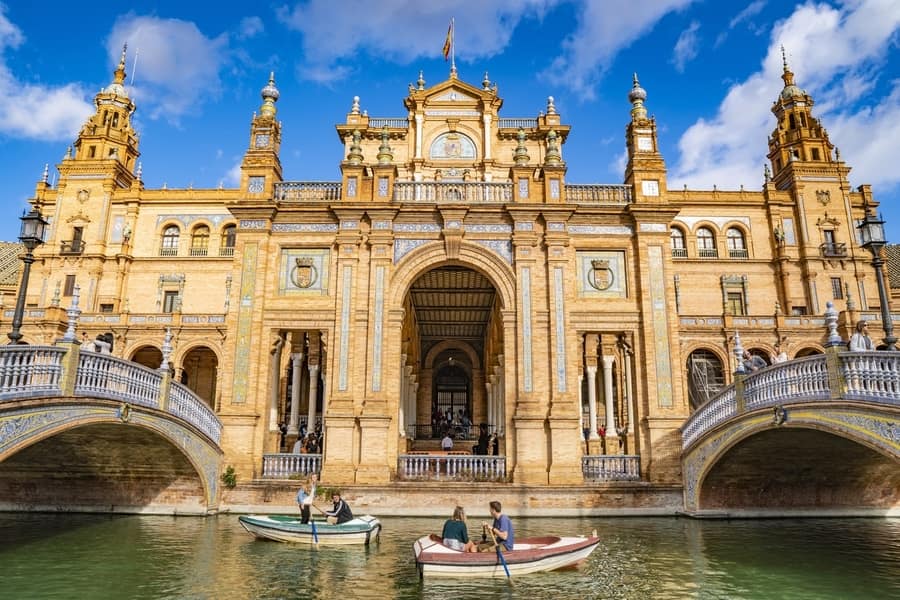
Seville is known as the birthplace of flamenco , and, as probably you already know, watching a flamenco show is one of the best activities in Spain . This Triana tablao flamenco show is, no doubt, the best way to experience this part of the Spanish culture, so make sure you book some time for this activity.
As you can see, there is a lot to do in Seville, so I recommend booking tickets to the Cathedral and La Giralda in advance . You may also like this river cruise along the Guadalquivir River, which goes past the Torre del Oro and Triana Bridge.
- Recommended accommodation : The Meliá Lebreros is located just 0.2 miles from the train station, 0.1 miles from the Nervión metro stop, and a few minutes’ walk from the city center .
3. Timanfaya National Park, a beautiful place in Spain you should see
With its gorgeous scenery, Timanfaya National Park is one of the most beautiful places in Spain , and visiting it is one of the best things to do in Lanzarote .
Walking among the volcanic landscape is like landing on the moon; the geomorphological structures formed from the eruptions of 1730, 1736, and 1824, resulting in one of the top tourist attractions in Spain . Moreover, the combination of red, orange, ochre, and black tones contrast brilliantly against the radiant blue sky. No doubt why this is one of the most popular national parks in Spain.
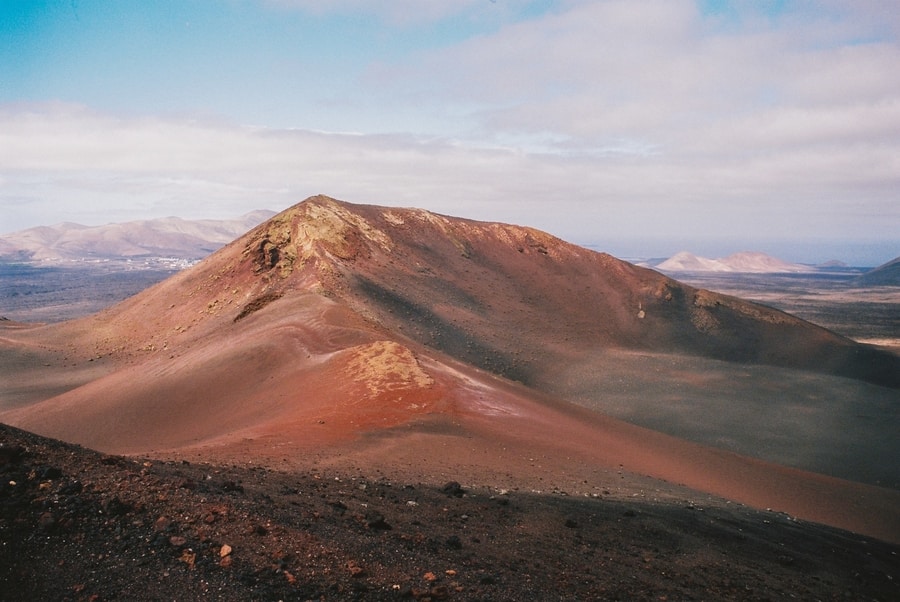
To see everything that this national park has to offer, I recommend this 1-day tour , which includes admission to the park. It’s an adventurous thing to do in Spain , and you’ll also see La Geria, El Golfo, Charco de Los Clicos, and many other places.
- Recommended accommodation : I definitely recommend the Hotelito del Golfo since it’s the only hotel in the natural park and one of the best places to stay in Lanzarote .
4. Hanging Houses of Cuenca, another famous place in Spain
The Hanging Houses of Cuenca , also known as the King’s Houses, are a series of homes built into a rocky ledge. The houses have large balconies overlooking the Huécar river gorge, making it one of the coolest places in Spain .

The best way to see this historic site in Spain is on a free walking tour with a local guide (it’s in Spanish). Moreover, if you have time, you can visit the Enchanted City and the Cuervo River , two natural wonders in Spain ’s Cuenca province.
- Recommended accommodation : I highly recommend the world-renowned Parador de Cuenca , considered one of the most beautiful paradores in Spain . You’ll have spectacular views since it hangs off the cliff, right in front of the Hanging Houses .
5. See the architecture of Gaudí in Barcelona
If there is a Spanish landmark you must see during your trip, it’s the Sagrada Familia . This famous church in Barcelona is Antoni Gaudí’s modernist masterpiece and an example of the best architecture in Spain .
The cathedral has been under construction for over 100 years, yet it remains one of the top places of interest in Barcelona and all of Spain. The line to get in can last for hours, but it’s well worth going inside, so I recommend buying a skip-the-line ticket in advance.

While you’re in Barcelona, be sure to check out another Gaudí masterpiece: Park Güell . Another must-see in Spain , this huge architectural garden is full of native flora, undulating pathways, and colorful mosaics. If you want to avoid the line to get in, purchase this ticket in advance, or book this free guided tour with an expert who will tell you all about this World Heritage Site.
Finally, Barcelona is one of the best cities in Spain and has so much to offer, so you can also do this free tour to see some other important monuments in the historic city center. If you prefer to explore on your own, we have a complete guide on things to do in Barcelona .
- Recommended accommodation : The Ayre Hotel Rosellón is right in front of the Sagrada Familia, and you can see it from the hotel’s rooftop terrace, so I plan to stay there during my next trip. Another high-quality accommodation in the city is the W Barcelona , which boasts spectacular views of the sea .
6. Prado Museum & El Retiro Park, Madrid
As we continue this list of things to do in Spain , we move to the capital city of Madrid. In our guide on things to do in Madrid , you will find that this city has it all: recreation, great food, culture, and incredible museums. In fact, the Prado Museum in Madrid is Spain’s most popular museum, with three million annual visitors.
Not only is it one of the most recognized museums in the world, but the Prado also has famous works like Goya’s Black Paintings and Velázquez’s Las Meninas , and loads of galleries that you can get lost in. The museum often has long lines, so I recommend getting your ticket in advance. Also, if you want to dedicate your day to the arts, be sure to check out the Reina Sofía Museum , which is just a few minutes’ walk away.

That said, the Prado Museum is right next to El Retiro Park , another top attraction in Spain ’s capital city. This World Heritage Site is one of the largest parks in Madrid and once belonged to the Spanish monarchy. As such, it’s a lovely place with a big lake, lush gardens, historic monuments like the Alfonso XII Monument, the Fountain of the Fallen Angel, and the Crystal Palace. Without a doubt, this whimsical park is one of the best places to visit in Spain .
- Recommended accommodation : The Radisson Blu Hotel, Madrid Prado is in Madrid’s Art Triangle, close to the Prado, El Retiro, Reina Sofía, the Thyssen Museum, and the Barrio de las Letras .
7. Aqueduct of Segovia, a historical Spanish landmark you can’t miss
The Aqueduct of Segovia is one of the most important historical sites in Spain and an impressive feat of Roman engineering. Its construction dates back to the beginning of the 2 nd century, to transport water from the Sierra mountains to Segovia (although the legends attribute this to the devil himself).
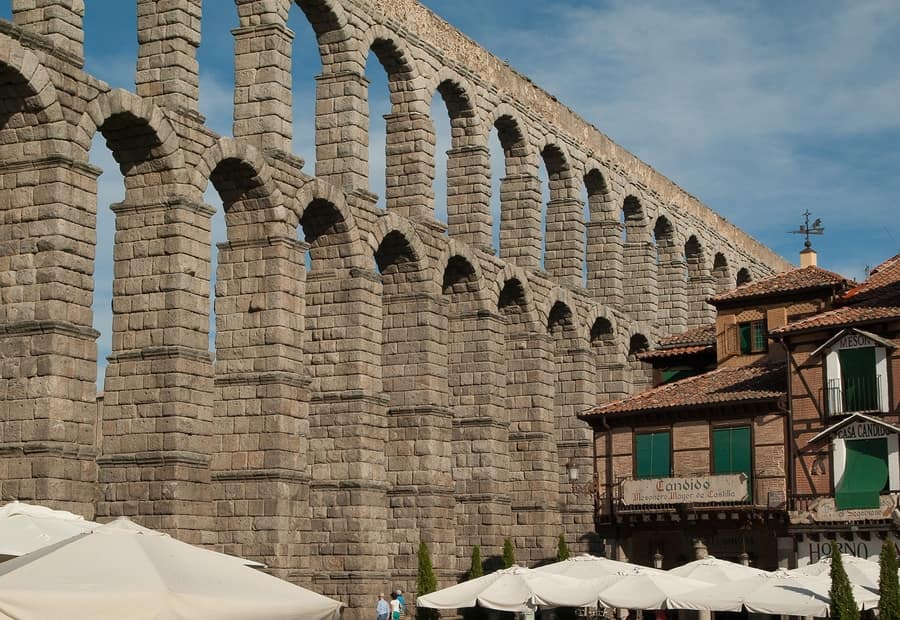
In addition to the aqueduct, Segovia is a beautiful city with some of the best sightseeing in Spain . During your time here, I recommend taking this guided tour of the Segovia Cathedral and eating a roasted suckling pig at the Mesón de Cándido, a restaurant located beneath the aqueduct.
- Recommended accommodation : The Real Segovia by Recordis Hotels is in the heart of the city, at the Plaza de las Sirenas, and is the best place you can stay in Segovia .
8. See the Lakes of Covadonga & Picos de Europa, a cool thing to do in Spain
Next, we go further north to the Lakes of Covadonga and the Picos de Europa , two beautiful places in Spain that you must visit at least once in your life.
Covadonga was the first capital of the ancient Kingdom of Asturias and is one of the most charming places in Spain , thanks to its religious sanctuary. From there, you can make the ascent towards the Lakes of Covadonga, which offer impressive views of the expansive landscape and, of course, a few Asturian cows along the way.
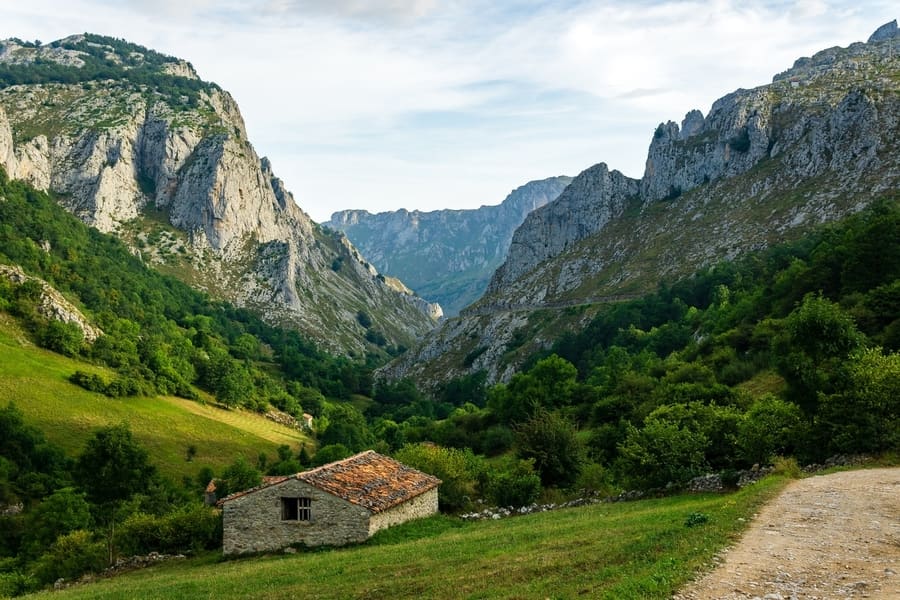
If you don’t want to drive to the lakes on your own, you can take this excursion from Cangas de Onís, which will take you past the Picos de Europa National Park , one of Spain’s wildest natural treasures.
- Recommended accommodation : The Arcea Gran Hotel Pelayo , with views of Covadonga Cathedral, is a lovely hotel where you can go hiking, cycling, and canoeing .
9. Molinos de la Mancha, another popular place to visit in Spain
If you like literature, surely you know Don Quixote . That means you’ll love visiting the famous Molinos de la Mancha , another cultural point of interest in Spain .
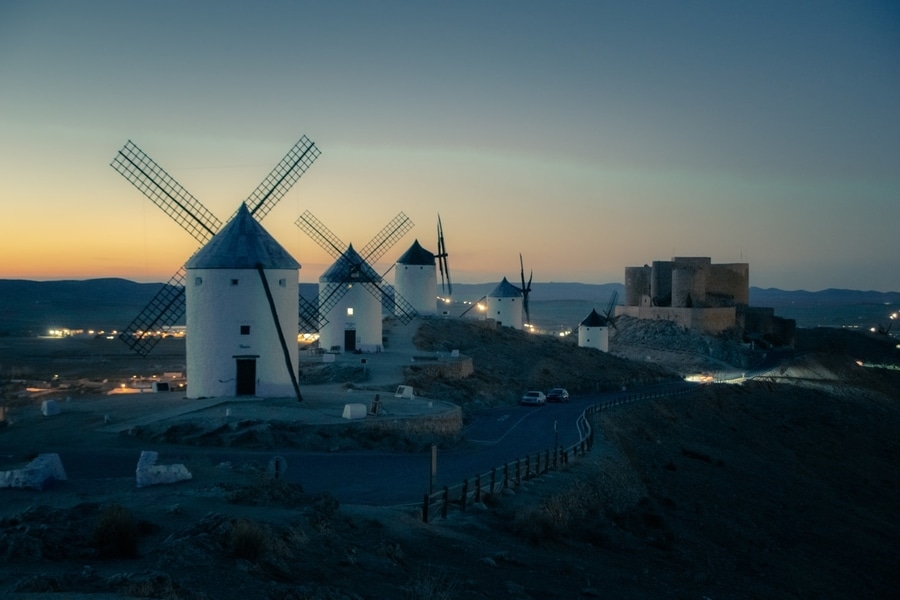
There are a few ways to get there, but I recommend the Molinos de Consuegra so you can see these charming 19 th -century windmills. Not only are these striking white windmills a beautiful addition to the Spanish countryside, but they’re a wonderful reminder of the pivotal works by Cervantes.
- Recommended accommodation : El Patio de los Jazmines is a lovely rural hotel recognized by the government’s Junta de Castilla-La Mancha and is perfect for getting lost among the old mills in the countryside .
10. Teide National Park, Tenerife, an incredible attraction in Spain’s Canary Islands
Teide National Park is another must-see in Spain since it has the highest peak in all the Canary Islands, and all of Spain.
It has also been declared a UNESCO World Heritage Site, so you can bet that it offers some of the best views in Spain . We have a guide on how to climb Mount Teide , so if you’d like to do the climb but have doubts, be sure to read it. My suggestion is to take the cable car , then climb the 12,200 feet to the crater summit.

If you prefer to do the climb with a guide, check out one of the best Teide tours . In any case, I think it’s an incredible thing to do in Spain that you should do!
- Recommended accommodation : The Parador de Las Cañadas del Teide , located over 6,500 feet above sea level, offers magnificent views of Mount Teide and the arid volcanic surroundings. It’s the perfect place to start (or end) your day in Teide National Park .
11. Visit the Roman Theater of Mérida, an unforgettable activity in Spain
Another great work left by the Romans is the Roman Theater of Mérida . Its construction was ordered by Agrippa, son-in-law of Augustus, between 16 and 15 B.C., and today, it’s one of the most important landmarks in Spain .
Over its 2,000 years of existence, the theater has become the architectural ruins that you’ll see today. Even so, it’s one of the most magnificent parts of the Archaeological Ensemble of Mérida and became a UNESCO World Heritage Site in 1993.
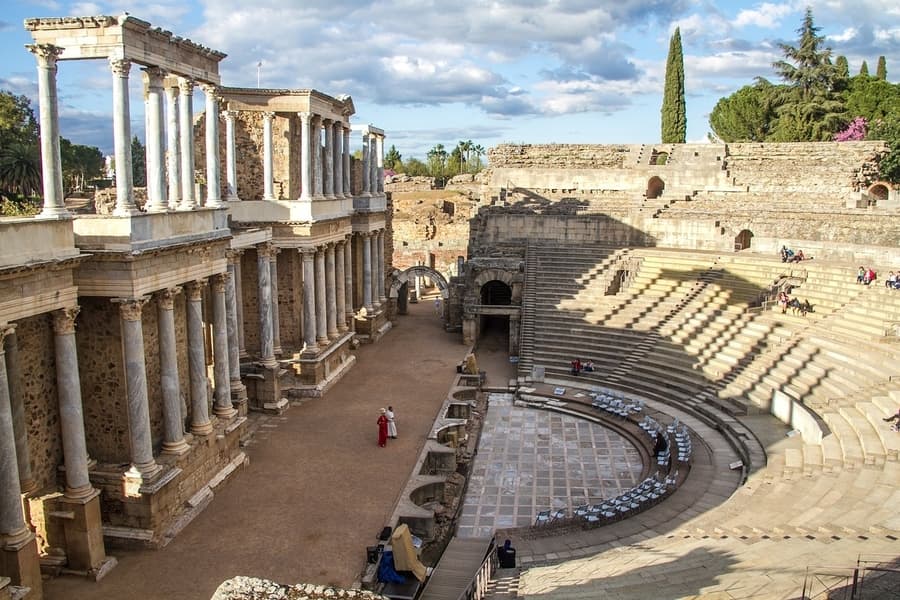
If you’d like to learn more about the history of Hispania and visit the Roman Theater and other ruins like the Moorish Alcazaba citadel, the Morerías Archaeological Zone, the Casa del Amphitheater, and the Roman Amphitheatre, I recommend this combined pass with a guide .
- Recommended accommodation : The Hotel Ilunion Mérida Palace is a restored 15th-century palace in the Plaza de España with a terrace pool and great views of the city .
12. Burgos Cathedral, another breathtaking place to visit in Spain
The Burgos Cathedral is a UNESCO World Heritage Site and one of the most beautiful churches in the country, so it’s a must-see in Spain .
Its construction began 800 years ago, in 1221, following the French Gothic style. Throughout history, it has undergone various restoration efforts that have kept it alive and given it some unique design details. Two standout features are the two exterior towers and the splendid Gothic-Plateresque dome. Inside, you can’t miss the Altarpiece, the Constable’s Chapel, and the Golden Staircase.
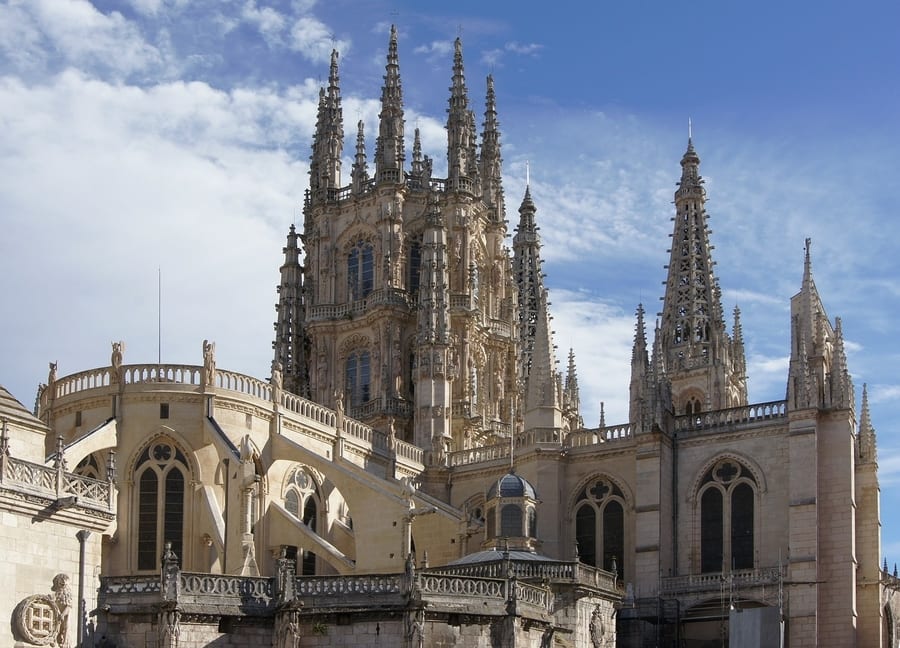
If you want to discover all the secrets of this architectural marvel, I recommend taking this guided tour of the cathedral.
- Recommended accommodation : The Crisol Mesón del Cid is one of the best hotels in Burgos, with a central location that makes it easy to explore the narrow historic streets .
13. See the City of Arts and Sciences, Valencia, an enjoyable thing to do in Spain with kids
The City of Arts and Sciences in Valencia is a cultural and entertainment complex and one of the best tourist attractions in Spain .
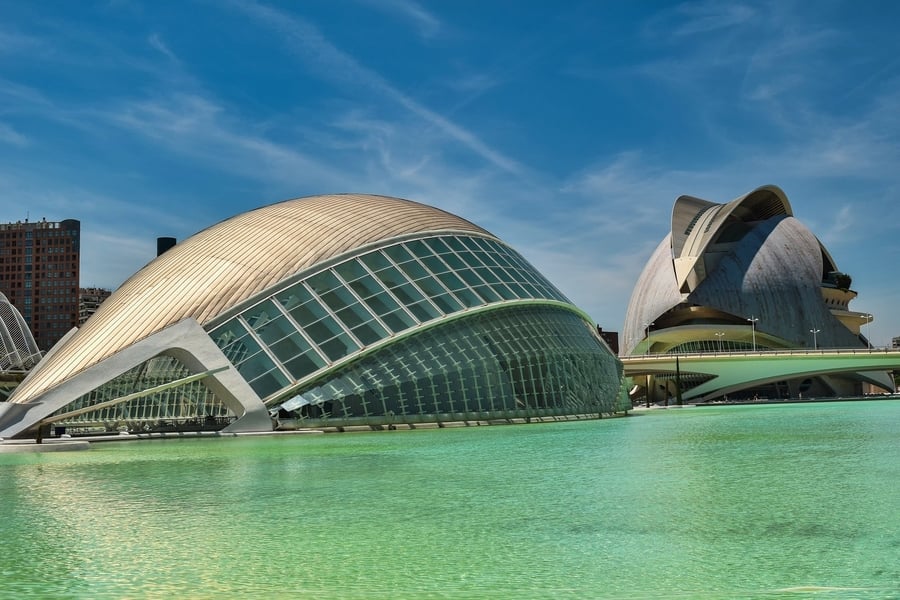
The complex was designed by the famous architects Santiago Calatrava and Félix Candela and houses some of the best activities in Spain that you can do as a family. Among them are L’Oceanogràfic, the largest aquarium in Europe; L’Hemisfèric, a planetarium and the largest laser projection room in Spain; and a three-story science museum. If you get the full ticket , you’ll gain access to all the interactive exhibits and gallery spaces, so it’s worth it.
- Recommended accommodation : The Ilunion Aqua 4 is in front of the City of Arts and Sciences and has a 9 th -floor Michelin star restaurant with panoramic views .
14. Great Mosque of Córdoba, one of the most famous attractions in Spain
The Great Mosque of Córdoba is one of the most historic landmarks in Spain and a monument you must see to believe. Don’t be fooled by the name; it’s officially known as the Cathedral of Our Lady of the Assumption.
Along with the Alhambra, the Mosque of Córdoba is the most important monument of Andalusian architecture. It was declared a Site of Cultural Interest as part of Córdoba’s historic center and, in 2007, was selected by the public as one of the 12 Treasures of Spain. Moreover, it was awarded in a TripAdvisor contest as the best tourist destination in Europe and number six in the world.

As you can see, visiting the Great Mosque of Córdoba is one of the top things to do in Spain , and you can soak up all its history on this guided tour .
- Recommended accommodation : The Hesperia Córdoba is on the banks of the Guadalquivir River, granting you lovely views of the Mosque and the medieval Alcazar fortress .
15. Wall of Ávila, another Spanish landmark you must see
It’s impossible to visit Ávila and not see the majestic Wall of Ávila . This UNESCO World Heritage Site is one of the most important monuments in Spain that you should see at least once.
The wall has a perimeter of 1.5 miles and covers an area of 81.5 acres. Its 88 medieval towers reach a height of nearly 40 feet, making it one of the most incredible attractions in Spain . This impressive wall was completed between the 11 th and 14 th centuries and they’re the most complete fortifications in the country. Also, the wall’s nine gates were finished at different times, so they each reflect a different style.
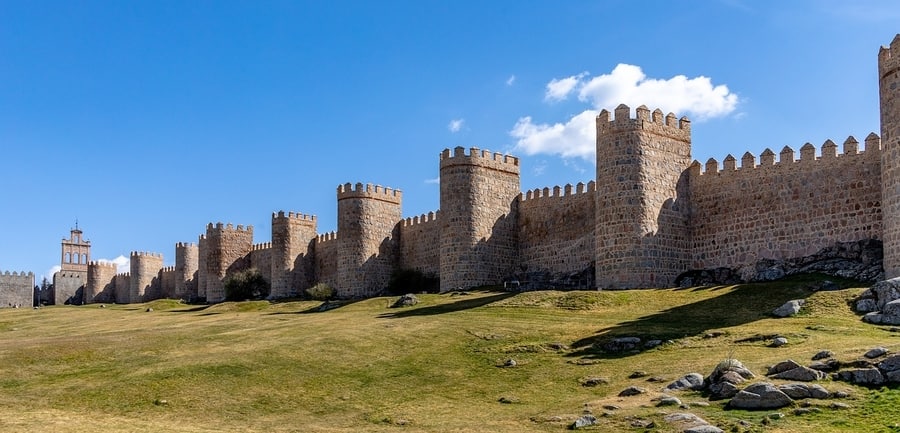
It’s worth seeing this marvel, and you can learn more about it and other monuments in Ávila’s historic center on this free tour .
- Recommended accommodation : The Palacio de la Velada is an impressive 16th-century palace with luxurious rooms, and it’s right in front of the Ávila Cathedral. The hotel also has an on-site restaurant that serves typical food from the region .
16. Balearic Islands, an unforgettable place to visit in Spain with friends
If you’re looking for the best place to visit in Spain in summer , the Balearic Islands are one of your best options. These islands are comprised of Mallorca, Menorca, Cabrera, Ibiza, and Formentera; and other islets, such as Dragonera, Conejera or S’Espalmador.
The Balearic Islands have some of the most beautiful landscapes and beaches in Spain. There’s a reason why it’s the third most-visited autonomous community in Spain, attracting both national and international tourists.
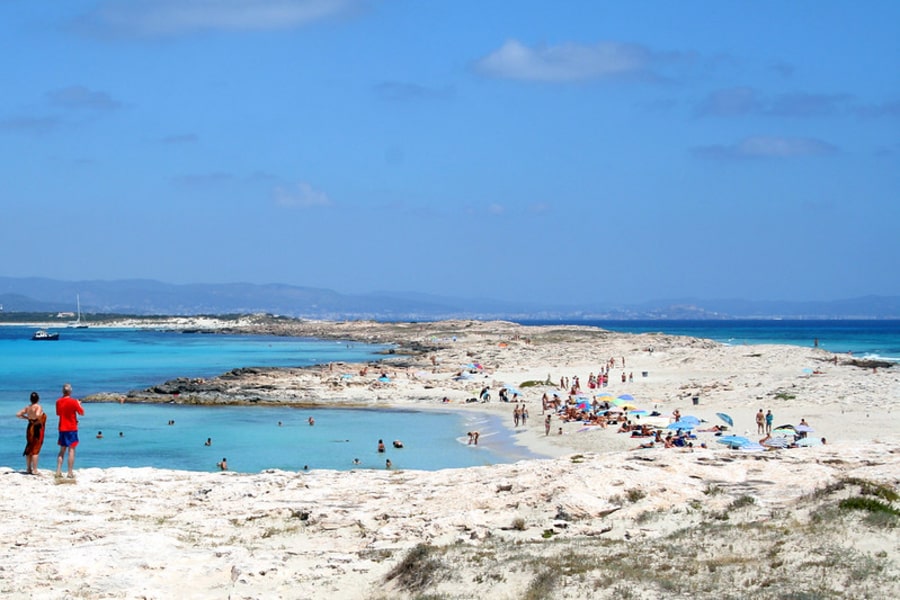
The most populous city here is the capital of Palma de Mallorca . If you go here, I suggest taking this free tour to learn more about its history. Also, this dolphin-watching tour in Palma de Mallorca is one of the best things to do in Spain with family .
Another island I recommend you see is Menorca , which is known for its lovely beaches, coves, and remains of the Talayotic Culture. Take a walk around the citadel, visit Mount Toro and the Mola Fortress, go to Mahón, or take a boat ride to discover the best coves.
Finally, Ibiza is known for its party atmosphere, but it has much more than that, so I’ll tell you all about that later .
17. Go to the Guggenheim Museum Bilbao, something to do in Spain if it rains
Going to Bilbao is one of the best things to do in northern Spain , and it has one of the coolest cultural attractions, the Guggenheim Museum Bilbao .
Inaugurated in 1997, the museum is guarded by the Puppy , an impressive floral dog sculpture created by artist Jeff Koons. As for the design of the building, it’s the work of architect Frank Gehry and is one of the most representative examples of the avant-garde aesthetic of the 20 th century.
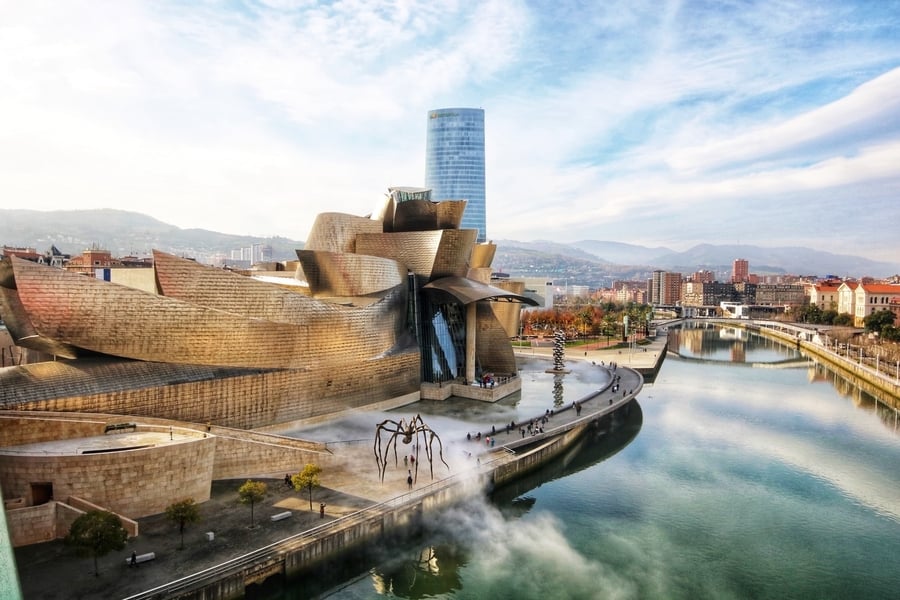
If you can, check out the museum at sunset when the play of light on the structure is beautiful. Inside, you’ll find 258,000ft² of space, 113,000 of which are intended for exhibitions. There are collections from local artists like Eduardo Chillida and international artists such as Mark Rothko and Yoko Ono . The museum also has a rotating roster of exhibits ranging from Chinese and Russian art to paintings and sculptures.
It’s best to buy tickets online since they’re cheaper and you’ll avoid unnecessary lines. Also, since you’ll be in Bilbao, take this free tour to learn all about this great historic center and attractions like the Arriaga Theatre, the Begoña Stairs, and the Santiago Cathedral.
- Recommended accommodation : The Hotel Carlton in Bilbao’s famous Plaza de Don Federico Moyúa is less than a 10-minute walk from the museum .
18. Toledo, one of the best cities to visit in Spain
Toledo is known as the City of Three Cultures and is another beautiful place to visit in Spain .
My number-one piece of advice is to not leave this city without seeing the Cathedral of Toledo , one of the most impressive churches in the world. It’s also worth visiting the Mirador del Valle, especially at sunset; the Alcantara Bridge; and the Monastery of San Juan, which is over 500 years old.
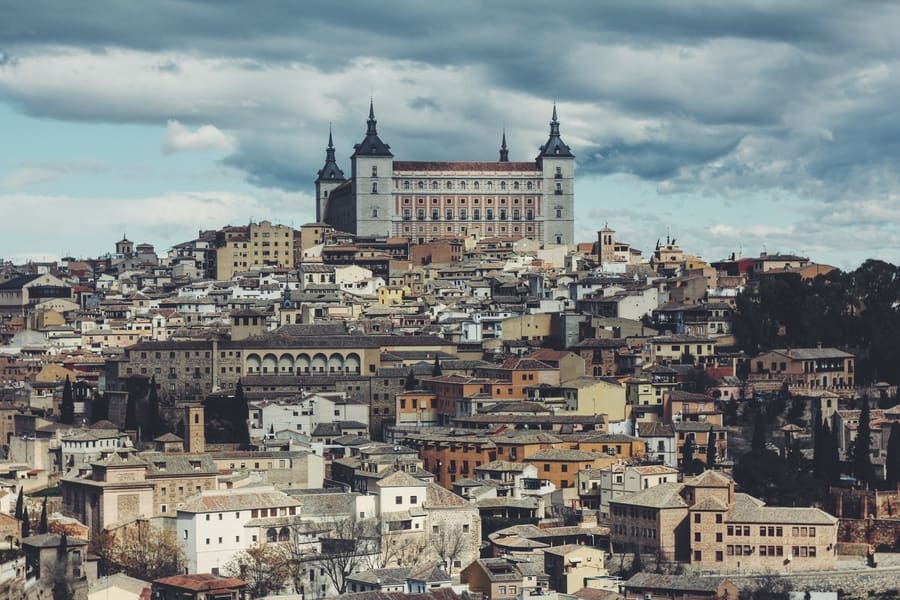
If you’d like to visit this city from top to bottom, I suggest getting the Toledo Card , which grants you skip-the-line admission to several monuments and a guided tour of the Cathedral .
- Recommended accommodation : The Eugenia de Montijo, Autograph Collection is named after the empress who owned this former palace, which has been converted into a luxury hotel. You won’t regret staying here !
19. Camino de Santiago, a popular thing to do in Spain
Without a doubt, one of the best activities in Spain is doing the Camino de Santiago, one of the best hikes in Spain . Some people do the route on foot, while others go by bike or even run. Whichever method you choose, I promise you it will be a unique experience.
The Camino de Santiago will transport you to some of the most beautiful places in Spain like the tomb of Santiago el Mayor, located in the Santiago de Compostela Cathedral .

This route has its roots as a medieval Christian pilgrimage that started from the western Pyrenees. Today, the Camino de Santiago refers to the modern-day routes, such as the Camino Francés and Camino Portugués. As you travel along the route, you’ll meet many other pilgrims making the trek, as well as some of the most spectacular landscapes in the country.
Once you’ve fulfilled your mission and have arrived in Santiago de Compostela, you can receive your official certificate of completion. I also recommend taking this guided tour of the Santiago de Compostela Cathedral and its museum.
- Recommended accommodation : After such a rigorous journey, the best thing you can do is indulge yourself and stay at the Parador de Santiago – Hostal Reis Catolicos . Here, you can lounge like a king in a four-poster bed and enjoy traditional Galician dishes and seafood .
20. Eat paella in Valencia, a typical thing to do in Spain
One of the best things about traveling to a new place is trying different foods, so if you’re going to Spain, you must try paella . You can get paella throughout Spain, but one of the best places to get this traditional dish is in Valencia since it originated there.
Paella is a rice dish, and its name comes from the shallow frying pan that the original Valencian paella was cooked in. Traditional paella valenciana consists of rice, bajoqueta and tavella green beans, rabbit, chicken, and garrofó , a type of lima bean. The ingredients are cooked in olive oil, chicken broth, and saffron, which gives the paella its distinctive yellow color.

This is said to be the original recipe, although you can find all kinds of variations, including paella de mariscos (seafood paella). If you want the very best paella in Spain, be sure to order it in Valencia. Some restaurants that are known for their delicious paella include Casa Carmela, Casa Roberto, La Pepica, La Riuà, and Restaurante Levante.
Sitting around a table with a huge skillet of paella is one of the best things to do in Spain with friends , so you won’t regret traveling to Valencia to experience it!
- Recommended accommodations : Zenit Valencia has a restaurant, bar, gym, sauna, and it’s a few blocks from Casa Roberto. Another good nearby option is Ilunion Aqua 4 next to the City of Arts & Sciences .
21. RondA & Caminito del Rey, two magnificent places to visit in Spain
German poet, Rainer Maria Rilke, called Ronda the city of his dreams, and it’s not hard to see why. Ronda is one of the most beautiful places in Spain , and the best way to discover this town is with this free guided tour . Among the famous monuments here, you’ll get to see the New Bridge, which spans the city’s canyon.
You’ll also walk along the Paseo de Ernest Hemingway on the cliffs of El Tajo, which has a sculpture honoring the American writer. Furthermore, you’ll see the iconic balconies of the hanging houses, which hover almost 500 feet over a canyon gorge.
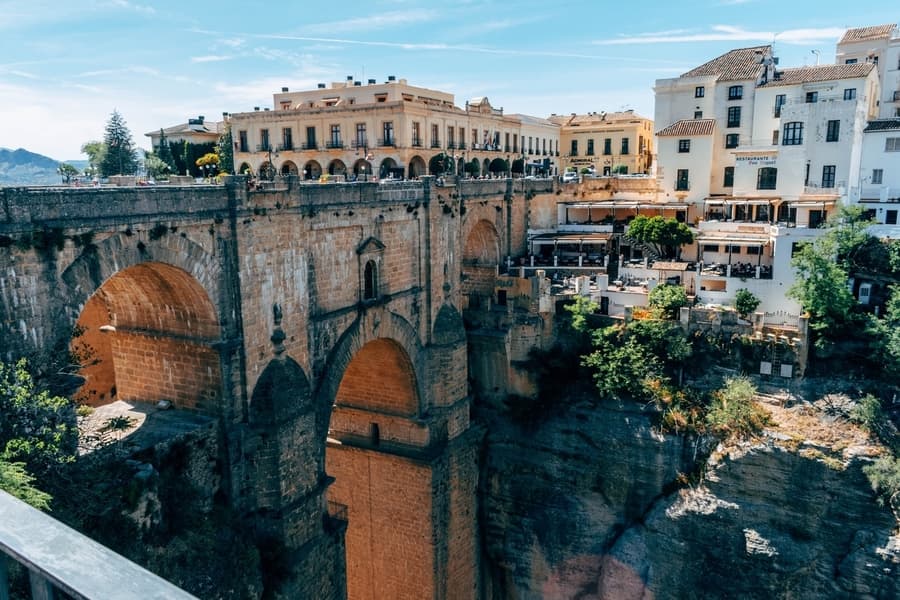
21. Ronda & Caminito del Rey, two magnificent places to visit in Spain
If you fancy something more active, nearby is the Caminito del Rey , one of the best hiking trails in Spain. You can do the route on your own, but if you don’t have much hiking experience, it’s better to do it with a guide . During the 3-hour excursion, you’ll be able to enjoy the beautiful landscape of cliffs, gorges, and tunnels.
- Recommended accommodation : To round out your visit to Ronda, I recommend the Parador de Ronda , located in the old town hall. You’ll have spectacular views of the gorge and the New Bridge .
22. Go to the oldest restaurant in the world in Madrid
Talking about food again, if you’re in Madrid, you must visit the oldest restaurant in the world , Sobrino de Botín . The restaurant was founded in 1725, and its cellar dates back to 1590.
Sobrino de Botín has an expansive history, especially among artists and creatives. Ernest Hemingway loved dining here, and he even featured the restaurant in one of his books. Also, the Spanish artist Francisco de Goya waited tables here before he got accepted into the Royal Academy of Fine Arts.
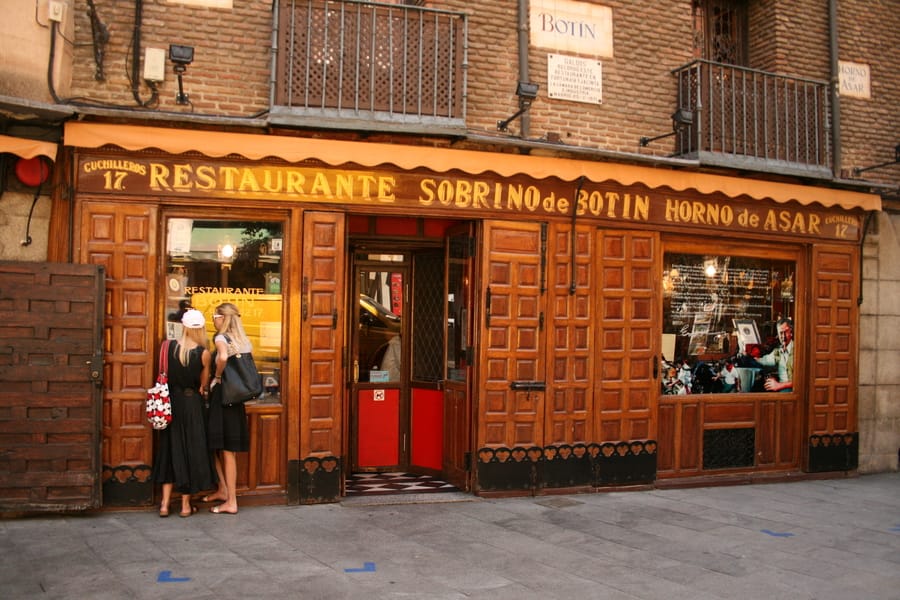
This tavern is one of the best places to visit in Spain because it’s like stepping back in time. The kitchen oven’s flame has been continuously burning all these years, and the menu consists of original recipes like cochinillo asado (roast suckling pig), cordero asado (roast lamb), and sopa de ajo (a garlicky soup with poached egg).
Moreover, Sobrino de Botín is very close to Plaza Mayor , another popular attraction in Spain ’s capital city. This is one of the city’s main squares and the former center of Old Madrid. It was built during the reign of Philip II, and a bronze statue of the King still stands at the center of the plaza. Throughout the day, you can find tourists and locals passing through, shopping at the stores, or eating at the cafes. Plaza Mayor is also the site of various events throughout the year, including a Christmas market.
- Recommend accommodations : The Radisson Blu Hotel, Madrid Prado is a beautiful hotel, or you can stay at the Pestana Plaza Mayor Madrid if you’d like to be closer to Plaza Mayor. The hotel has family rooms, a pet-friendly policy, and a spa, so you’ll be comfortable and close to several main attractions .
23. Santiago Bernabéu or Camp Nou, the perfect places to visit in Spain for soccer lovers
Soccer is one of the top activities in Spain , so if you’re a sports fan, there are two places I recommend you visit.
Santiago Bernabéu in Madrid is the famous home stadium for Real Madrid. With a capacity for over 81,000 people, it’s the second-largest stadium in Spain. If there is a game there during your stay, it’s worth going for the camaraderie and experience. Another option is this stadium tour to see the massive arena, exclusive areas for players, and memorabilia about the stadium’s history.

If you’re going to be in Barcelona, check out Camp Nou , the home stadium for FC Barcelona. It’s the biggest stadium in Spain and all of Europe, with seating for over 99,000 spectators. Besides hosting soccer games, Camp Nou is a popular venue for concerts and other events. It also has an on-site museum, so I recommend this tour , which takes you to the soccer pitch, the locker rooms, and the commentary box. You’ll also get to see videos, jerseys, and other items from FC Barcelona’s top players.
- Recommended accommodations : The H10 Tribeca is very close to Santiago Bernabéu and offers modern, sound-proof rooms with free Wi-Fi. If you want to stay near Camp Nou, NH Barcelona Stadium is a sustainable hotel with an on-site restaurant and views of Montjuïc .
24. San Lorenzo de El Escorial, one of the most spectacular tourist attractions in Spain
The Monastery of San Lorenzo de El Escorial is one of the most important landmarks in Spain , as it’s the best example of the country’s “Golden Age” ideology of the 16 th century.
This World Heritage Site is comprised of the Royal Palace of King Philip II, a convent, a library with thousands of ancient books, and royal burial sites for several former monarchs. The Pantheon of Kings contains the remains of over two dozen royals from the Habsburg and Bourbon dynasties.
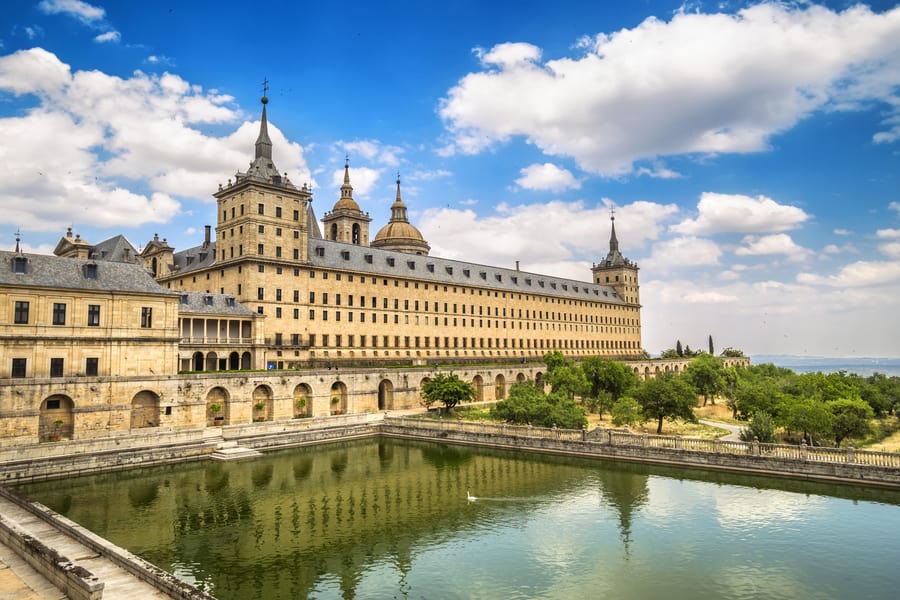
Throughout its history, El Escorial has served as a basilica, a hospital, a library, a monastery, a museum, a pantheon, and a school. It’s a must-see in Spain thanks to its lovely marble walls, gold-plated accents, and formal gardens.
If you want to know more about this impressive monastery, I recommend you take this excursion , which also takes you to the Valley of the Fallen, an important monument from Spain’s Civil War era.
- Recommended accommodation : If you can, stay at the Exe Victoria Palace , which overlooks the San Lorenzo de El Escorial, the Valmayor Reservoir, and the Sierra de Guadarrama. It also has a garden with an outdoor pool where you can lounge and beat the summer heat in Madrid .
25. Salamanca, a city with lots of fun things to do in Spain
Salamanca is a city with lots of cultural points of interest in Spain , like the New and Old Cathedrals, Plaza Mayor, and the Casa de las Conchas. It has been a UNESCO World Heritage Site since 1998 and is home to the country’s oldest university.
Moreover, Salamanca is known for its historical monuments, so if you don’t want to miss anything here, I recommend this free tour . It’ll take you past the Plaza del Corrillo, the impressive architecture of the New Cathedral , and the Episcopal Palace, which houses the History Museum of Salamanca . Your guide will also point out the hidden figures etched into the façade of the University of Salamanca , which was founded in 1218.
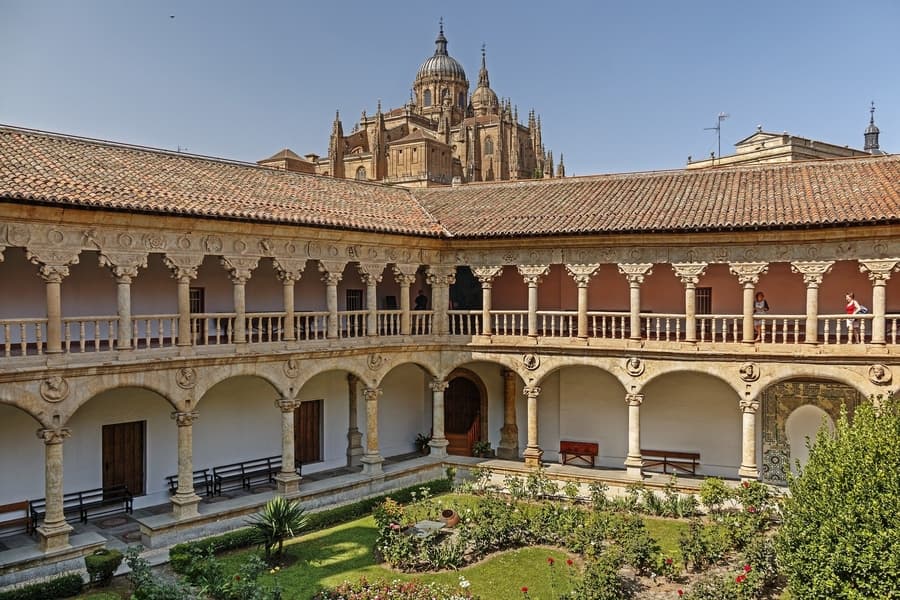
For me, Salamanca is the most beautiful place to visit in Spain ’s Castilla y León region, so it’s a city you must visit at least once!
- Recommended accommodation : Stay at the Fenix Gran Meliá hotel, one of the most romantic hotels in Spain. It’s located next to the Plaza de Colón and features classic English furnishings and décor .
26. Visit the beaches of the Canary Islands, something to do in Spain as a couple
If you’re looking for things to do in Spain in winter , I heartily recommend going to the Canary Islands . The Islands are one of my favorite tourist spots in Spain thanks to its year-round temperate climate, its landscapes, and of course, its beautiful beaches.
The average temperature in the Canary Islands is around 68°F, and it rarely rains, so it’s the perfect place to go in the winter. Among all the activities to do here, one of the best things is sightseeing and witnessing the volcanic surroundings of the islands.

When you’re planning your trip, you’ll have to decide which is the best island in the Canary Islands for you. It’s a tough choice, so here are my top suggestions for each island:
- Things to do in Tenerife : Whale tours, Mount Teide, Anaga National Park, and Benijo Beach
- Things to see in Gran Canaria : The beach and dunes of Maspalomas, Roque Nublo
- Things to see in Lanzarote : Timanfaya, Papagayo Beach, and the works of César Manrique
- Things to do in Fuerteventura : Corralejo Dunes and Cofete Beach
- Things to see in La Palma : Roque de Los Muchachos and Caldera de Taburiente
- Things to do in La Gomera : Laurisilva (laurel forest) in Garajonay Natural Park
- Things to do in El Hierro : This quieter island is perfect for scuba diving
Whichever island you choose, you won’t regret it! Without a doubt, the Canary Islands are one of the best places to visit in Spain , so don’t pass them up !
27. San Sebastián, another unique place to visit in Spain
San Sebastián is another lovely city to see in Spain, particularly for its charming La Concha Beach, one of the best beaches in Spain .
That said, the most-visited part of San Sebastián and what makes it one of the best places to visit in Spain is its Old Town ( Parte Vieja ). Here, you can visit the Plaza de la Constitución and its colorful buildings, as well as Alameda del Boulevard, the main artery that connects the Old Town to the newer Donostia district. This free tour will tell you more about the town’s history and development.
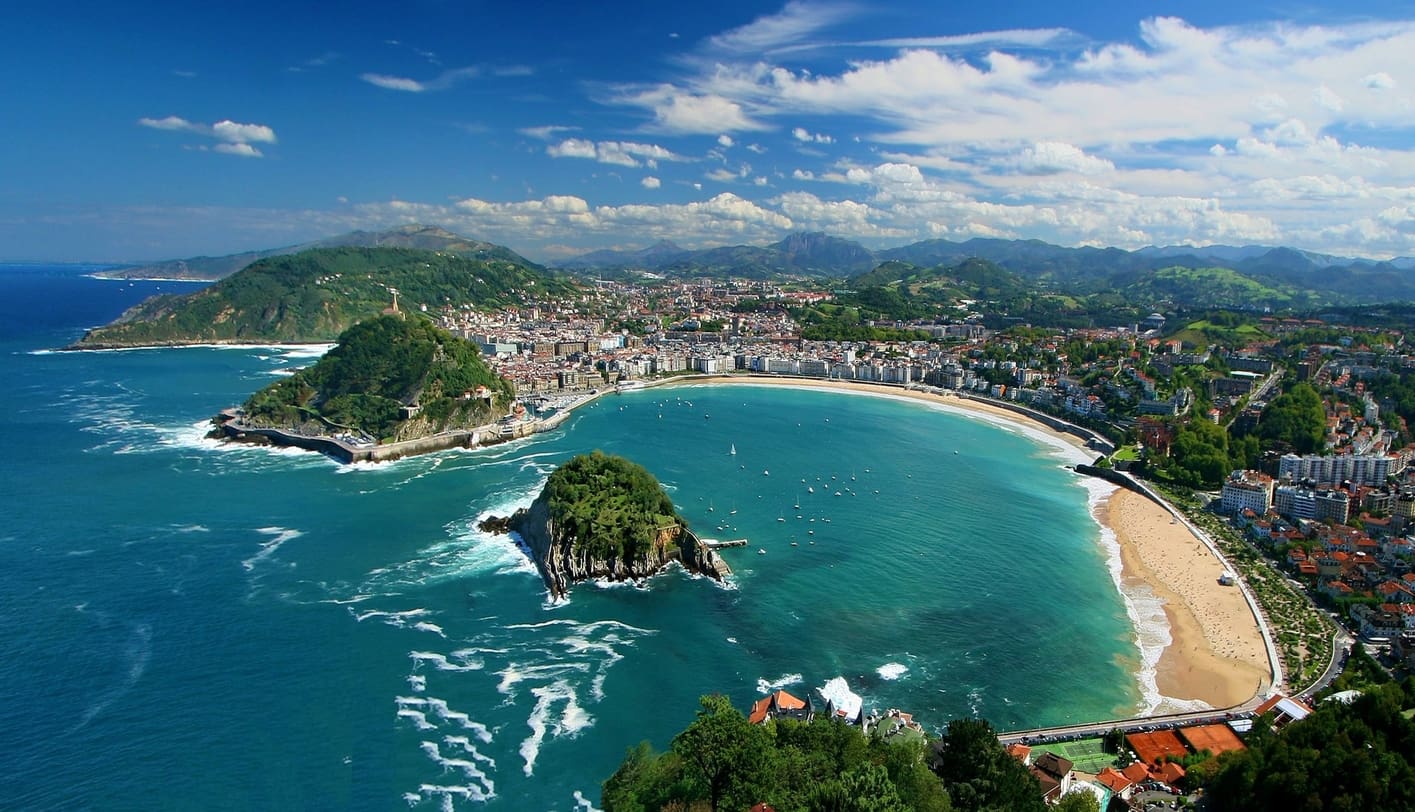
Another great part about San Sebastián is its gastronomy, as it has the best pintxos (tapas) in the country. It’s worth indulging in the specialties here, and you can try all the best pintxos on this food tour .
- Recommended accommodations : I suggest staying at the Zenit Convento San Martin , which is just 500 feet from La Concha Beach. The hotel also has an outdoor pool and terrace, which is perfect for lounging in the summertime .
28. Go skiing in the Pyrenees, a fun activity in Spain you should do
If you like sports and you’re visiting Spain during the winter, you must go skiing in the Pyrenees .
Within the Catalan Pyrenees , I recommend the Baqueria-Beret ski resort, which has a wide variety of slopes and off-trail runs. If this is where you choose to go, stay at the Hotel Val de Neu , which offers free ski storage, as well as rooms and suites with views of the slopes. There is also the luxury Sisley Spa, where you can indulge in massages, beauty treatments, a thermal circuit, and an outdoor hot tub. It’s the perfect thing to do in Spain after spending a few hours on the slopes.

Another option is La Molina , with over 44 skiable miles. La Molina opened its doors in 1943, making it the oldest ski resort in Catalonia, and it was also the first in Spain to install a ski lift. Today, the resort has 69 slopes, 12 ski schools, and 400 instructors. It’s one of the best places to visit in Spain with family , although you can also train here. If you choose to go here, purchase your ski pass in advance here .
Finally, in the Pyrenees of Huesca, you can go to the Celer, Astún, and Formigal ski resorts. If you prefer something further south, check out the slopes of the Sierra Nevada .
29. Wine tastings in La Rioja, another nice thing to do in Spain as a couple
Spain has the most cultivated vineyards in the world and, it’s number three worldwide in terms of wine production. So, you can imagine that doing a wine tasting in La Rioja is one of the best things to do in Spain .
I mention La Rioja because it’s the creme de la creme regarding Spanish vineyards. If you’d like to immerse yourself in this culture, I recommend this tour , which takes you through the Rioja Vega winery’s grounds and barrel room. You’ll learn about the origins of Spanish wine and, of course, enjoy a guided tasting.

Without a doubt, La Rioja is one of the best places to go in Spain as a couple , although it’s also lots of fun with friends.
- Recommended accommodation : For a dreamy visit, stay at the Hotel Marqués de Riscal in Elciego, within La Rioja’s Alavesa province. Most of the rooms have built-in window seats overlooking the valley. You’ll also have access to the hotel’s Vinothérapie Spa by Caudalie Marqués de Riscal, which offers grape-infused treatments. There is also an indoor pool, a hammam, a Finnish sauna, and a gym, making it one of the most charming hotels in Spain .
30. Party in Ibiza, an awesome thing to do in Spain with friends
Ibiza is known around the world for its party atmosphere, and while it’s true that its nightlife is quite the experience, there is a lot more to this place.
Many areas of Ibiza are recognized as UNESCO World Heritage Sites, so it’s one of the best islands to visit near Spain . Among these sites are the Renaissance walls of Old Town , the Ses Feixes Wetlands, and the remains of the first Phoenician settlement at Sa Caleta.
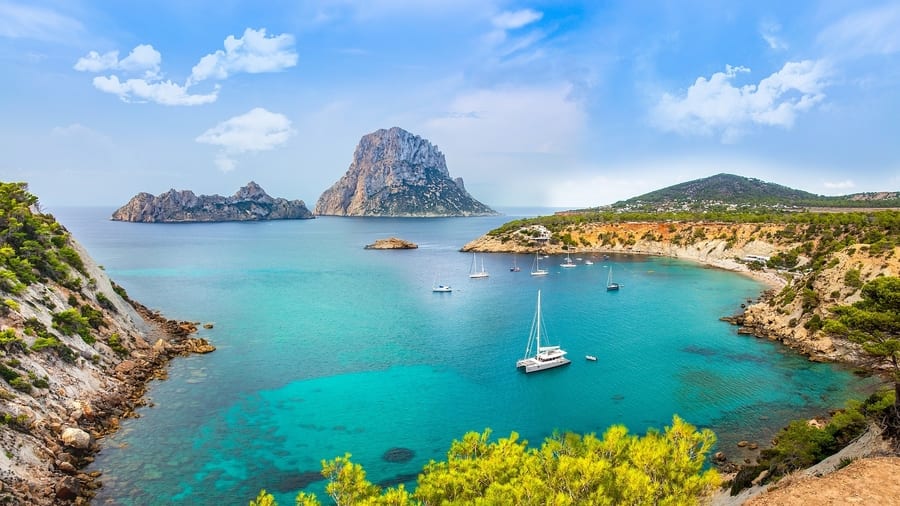
Another historic site is Dalt Vila , or High Town. It’s also worth visiting the scenic Punta d’es Moscarter on the northern tip of the island. You can learn more secrets about Ibiza’s Old Town and Dalt Vila on this free tour .
As you can see, Ibiza offers plenty of culture and history, so it’s one of the best holiday destinations in Spain if you’re looking for something different.
- Recommended accommodation : THB Los Molinos , located in Dalt Vila, is an adults-only hotel right on the beach. It has a sauna, hot tub, gym, and balcony rooms, as well as Balinese beds and a bar right next to the pool.
Spanish foods you must try
Trying some typical Spanish foods is undoubtedly one of the best things to do in Spain . Below are some of the must-try foods I recommend:
- Paella : As I mentioned, paella is a rice dish that originated in Valencia, and it’s traditionally made with special types of green beans, lima beans, chicken, rabbit, and saffron.
- Gazpacho : This chilled soup is typically made with tomato, cucumbers, onion, bell peppers, garlic, olive oil, wine vinegar, water, salt, and crusty bread. It’s most popular in southern Spain.
- Tortilla de patatas : Also known as a Spanish omelet, this dish is made with eggs, potatoes, and onions. It’s often served in smaller portions as a tapa .
- Patatas bravas : Forget French fries; patatas bravas are white potatoes fried in oil, then served with a spicy sauce. They’re often served as tapas , and they’re absolutely delicious.
- Sangria : This red wine mixed with chopped apples, berries, or stone fruits is a staple in Spain.
- Tapas : Tapas are small plates or appetizers that you typically eat with beer or wine. There are different varieties, but the most popular tapas include olives ( aceitunas ), meatballs ( albóndigas ), Russian salad ( ensaladilla rusa ), croquettes, patatas bravas , tortilla de patatas , fried cheese, fried squid rings ( calamares ), and sauteed prawns ( gambas ).
My advice is to come to this country hungry because sampling the traditional foods here is one of the most delicious activities in Spain !
How to get around Spain
Spain is great for road tripping and renting a car will help you see the places in Spain that I recommend here, as well as the surrounding areas. Besides, you can often rent a car in one town and drop it off at another, so it’s quite convenient.
If you want to find cheap car rentals , it’s best to read our guide first. In the past, we’ve mostly used DiscoverCars to get the best prices. Sometimes they’re up to three times cheaper than other websites, so I recommend to check them out.
Also, take into account that renting a car is not required in Spain since there are plenty of bus and train options if you don’t want to drive. To check the best bus/train/flights options in Spain we always use Omio .
And there you have the best things to do in Spain . If you’d like to tell me about your favorite tourist attractions in Spain , or you want to ask me any questions, don’t hesitate to leave me a comment. Until then, have a safe trip!

Ascen Aynat

Leave a Reply Cancel reply
Your email address will not be published. Required fields are marked *
This site is protected by reCAPTCHA and the Google Privacy Policy and Terms of Service apply.

Travel Safe
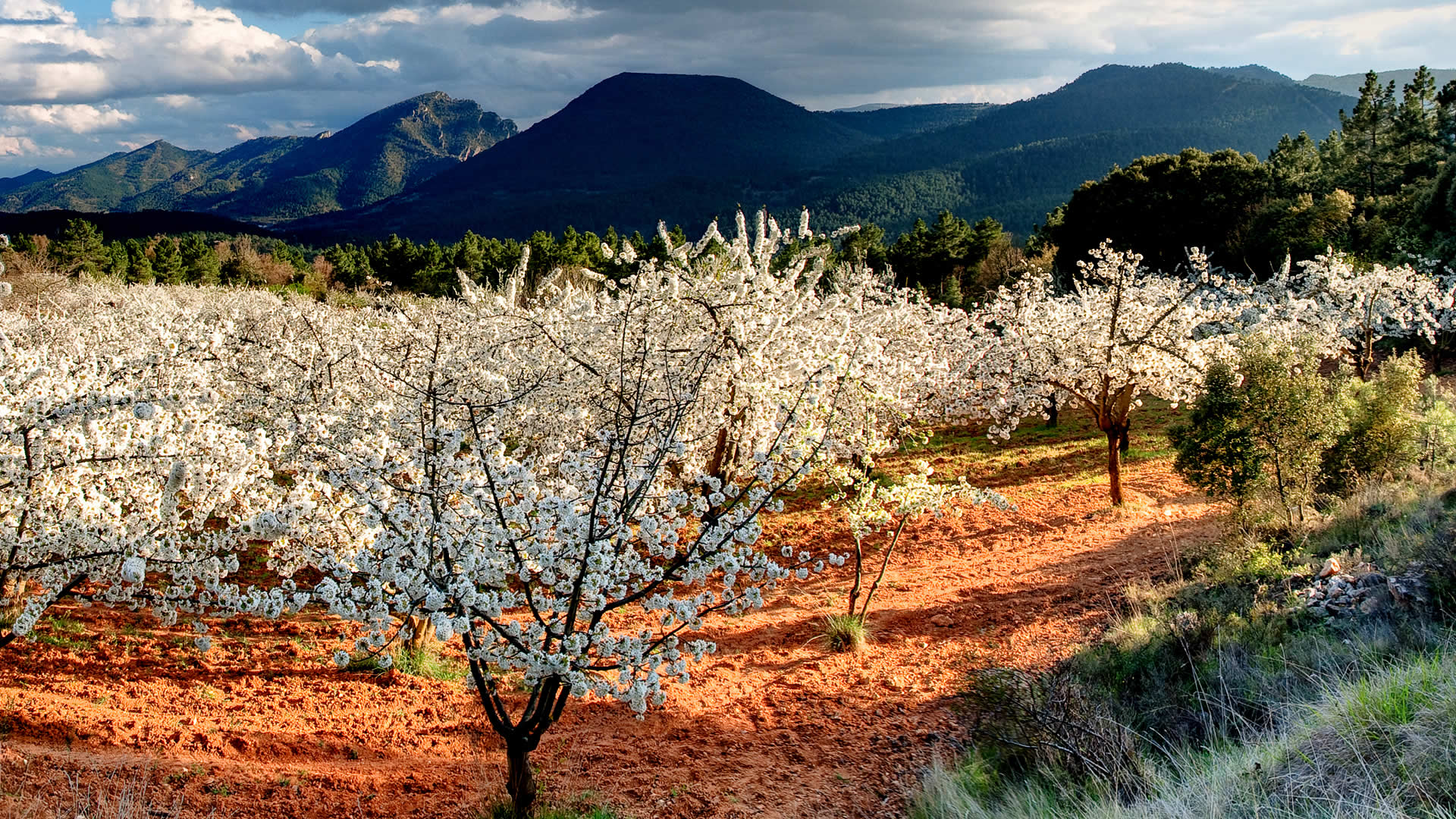
Spring time is here! Spain is filled with plans for you
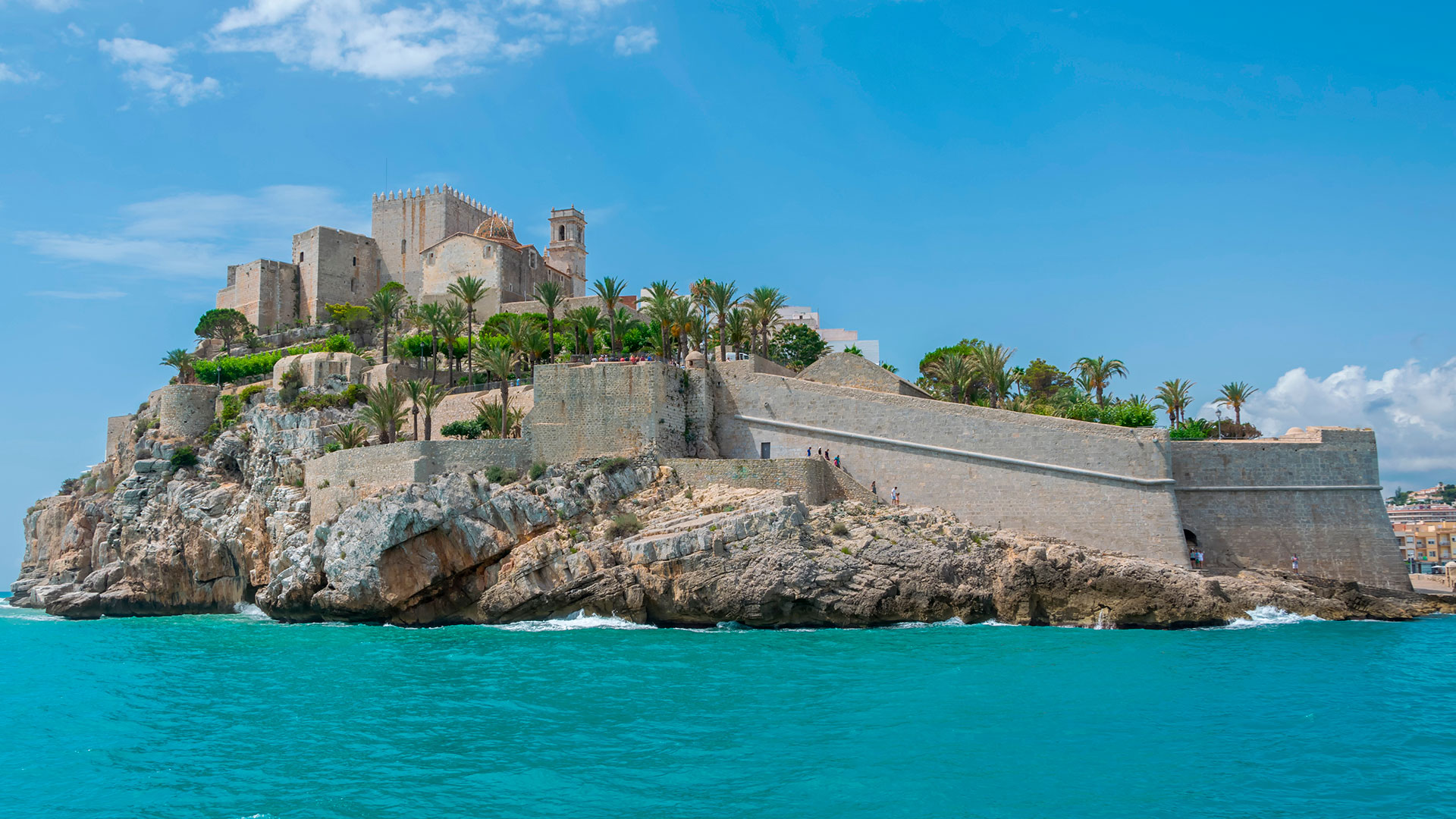
Visit fairytale castles in Spain's most beautiful towns

15 spectacular blossoms to experience up close
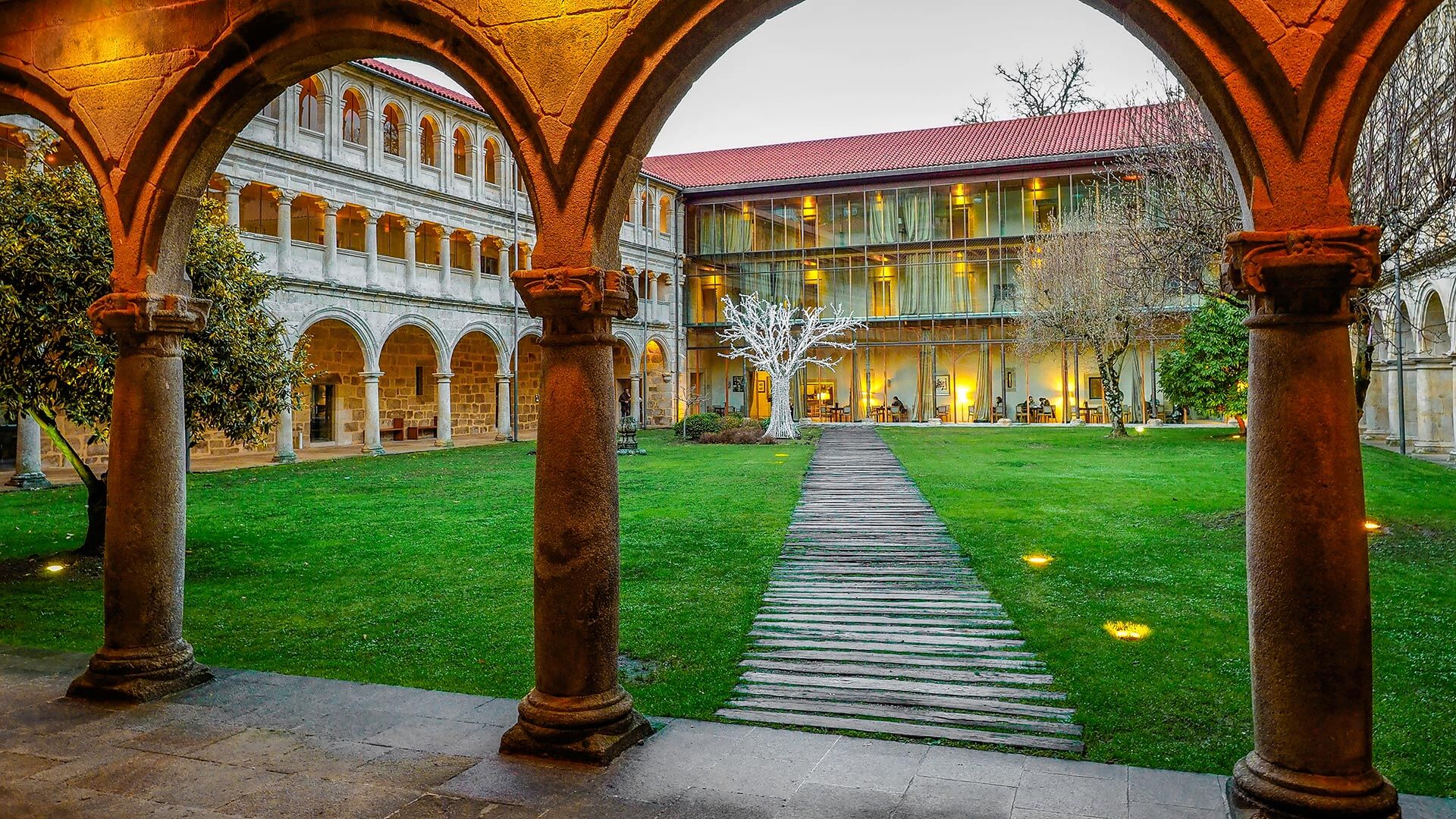
Route of the Monasteries in the Ribeira Sacra
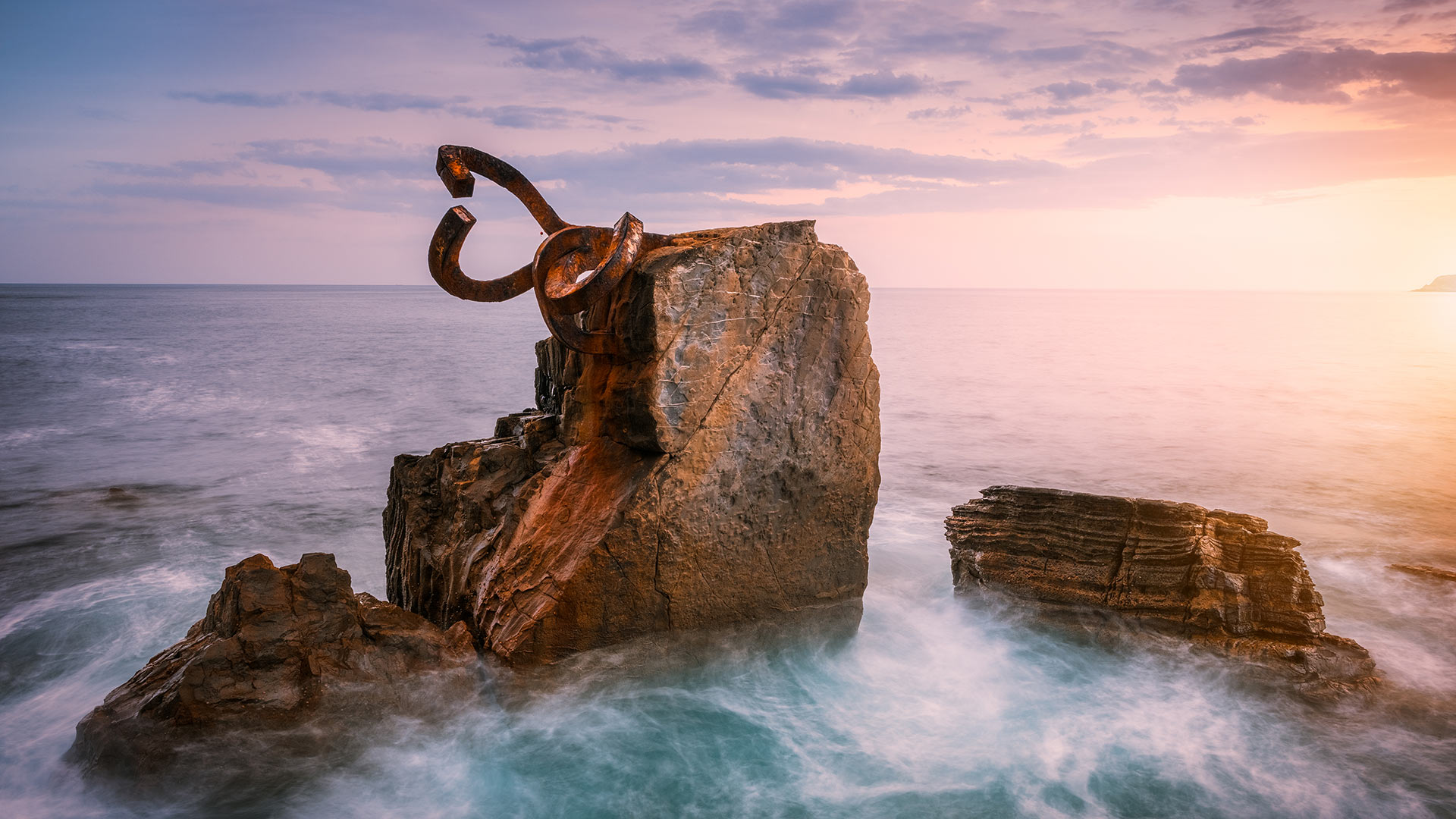
Chillida, 100 years of the universal Basque artist

Start the route with the best music festivals
Discover our destinations
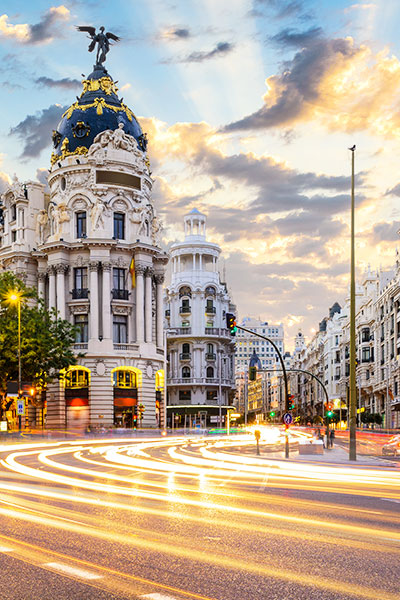
The capital city with a thousand options
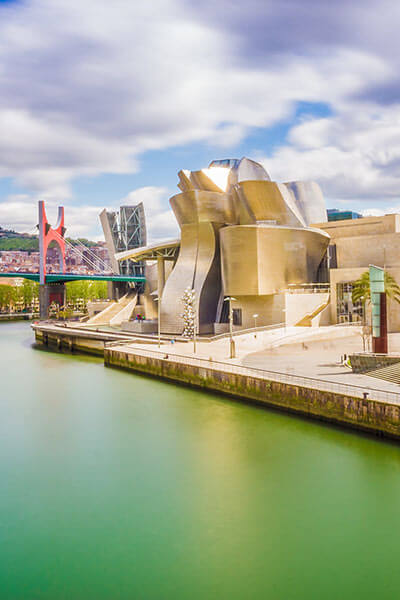
One of Spain’s most avant-garde cities
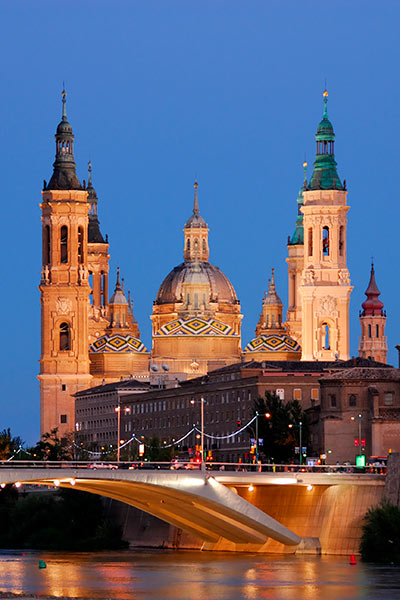
A great city with lots to discover
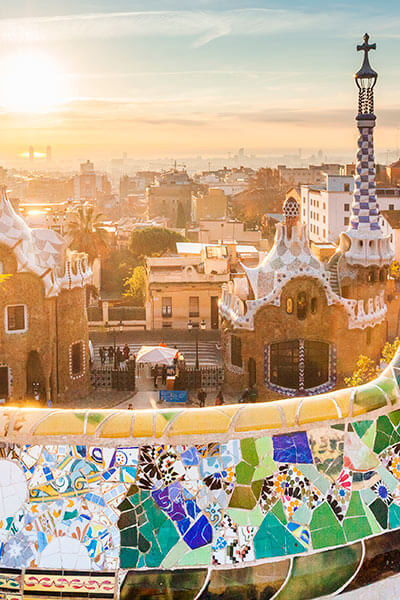
A cosmopolitan vibe
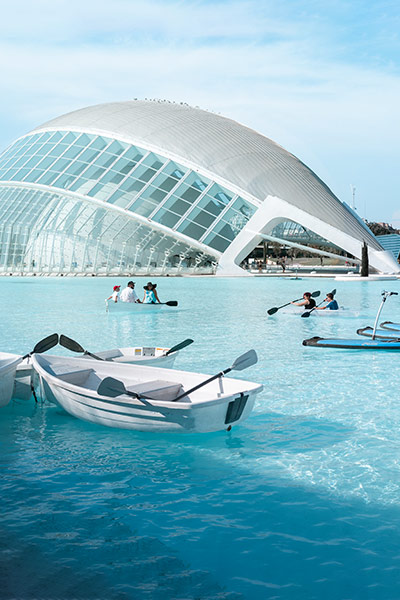
The essence of the Mediterranean
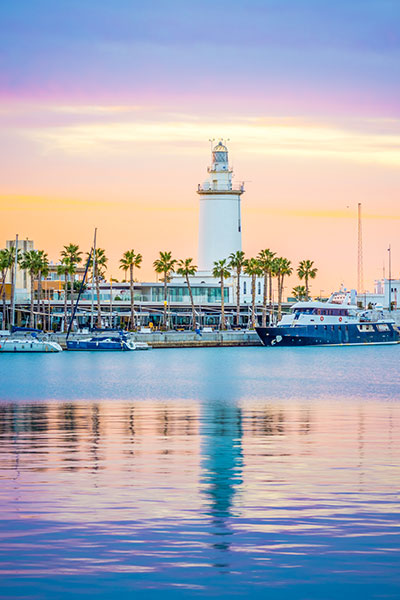
The capital of the Costa del Sol is reinventing itself
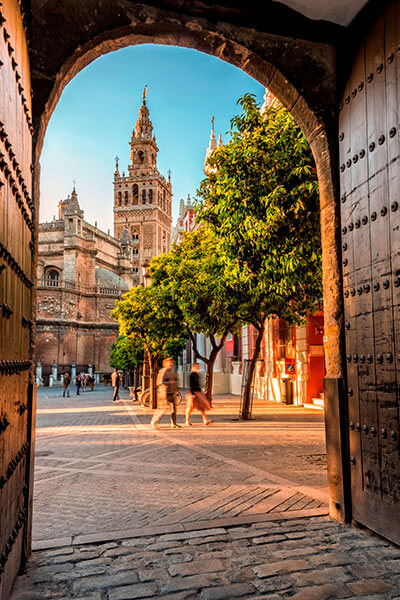
An inspiring destination
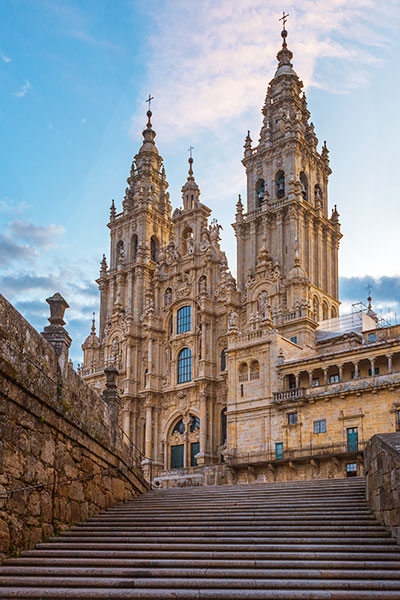
The final destination of St. James’ Way
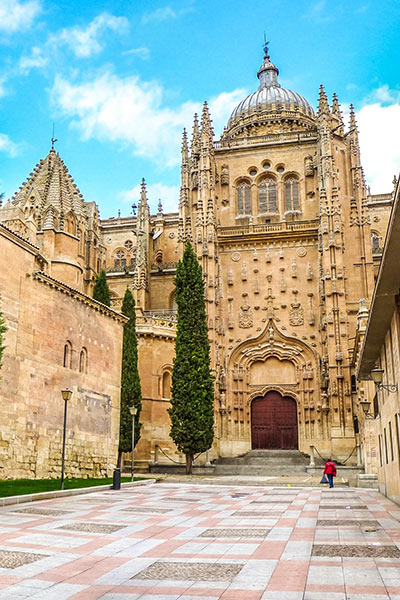
The Golden city of a thousand legends
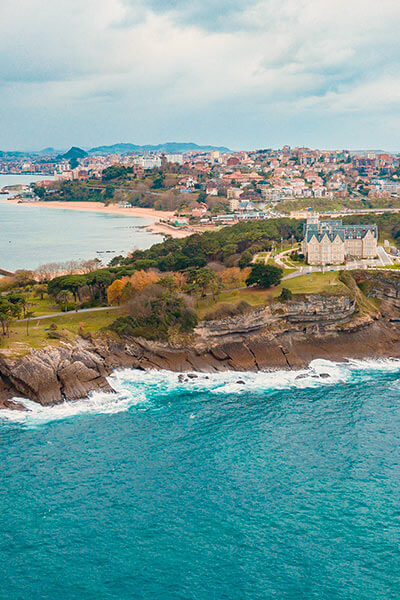
Ideal for a getaway
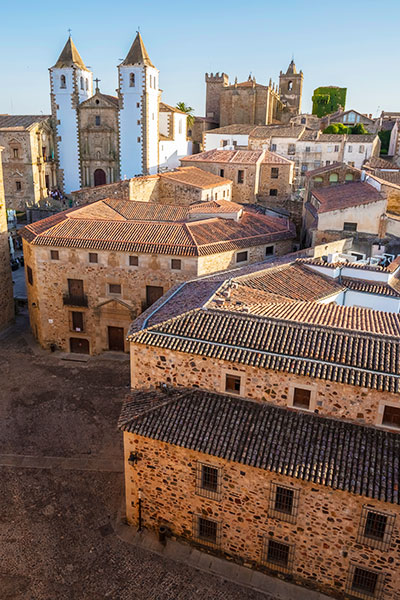
A picturesque medieval setting
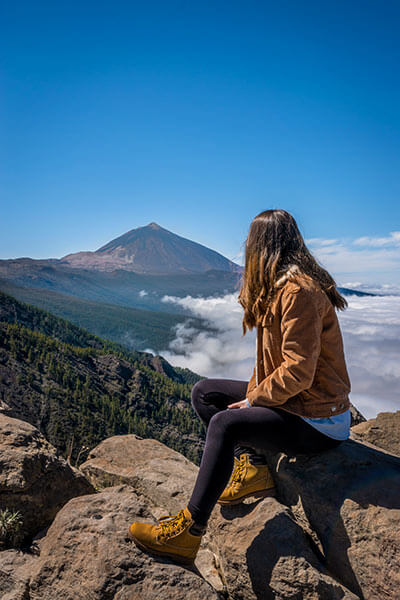
European sunshine capital
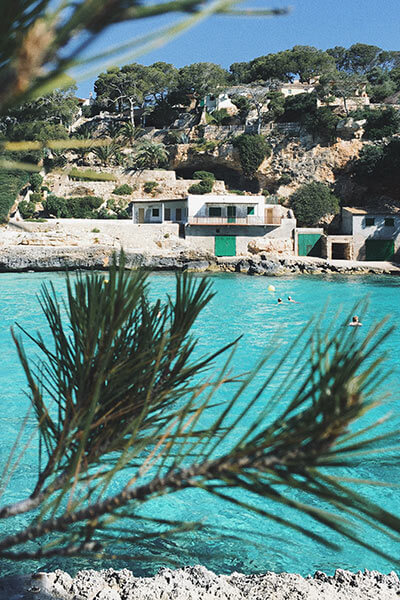
Idyllic coves, beautiful sunsets...
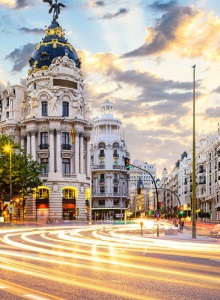
Santiago de Compostela

Canary Islands

Balearic Islands

Not to be missed
Choose the travel plan you like the most to make your stay in Spain unforgettable

Holiday ideas in Spain, depending on how and with whom you travel
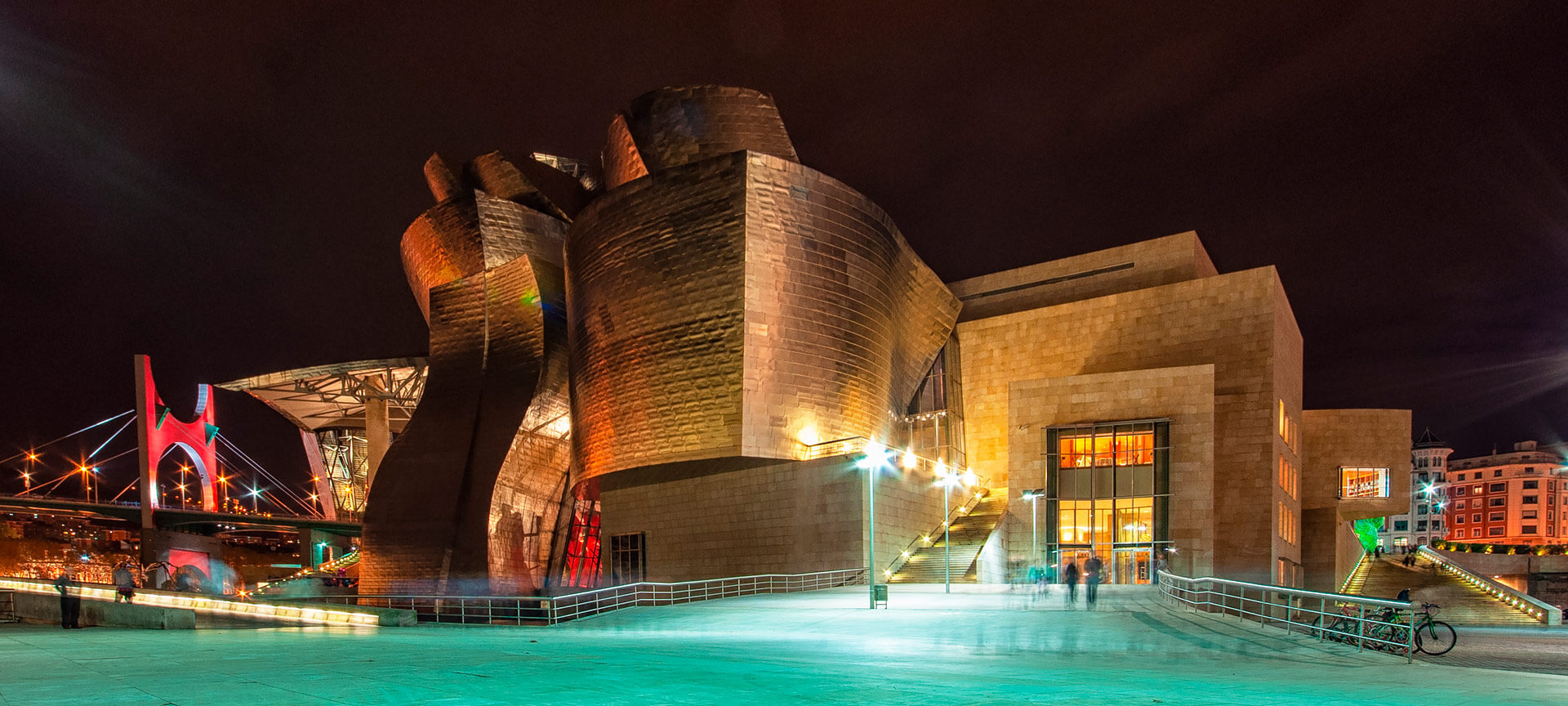
Museum Day is coming! Here are some ideas to make the most of it
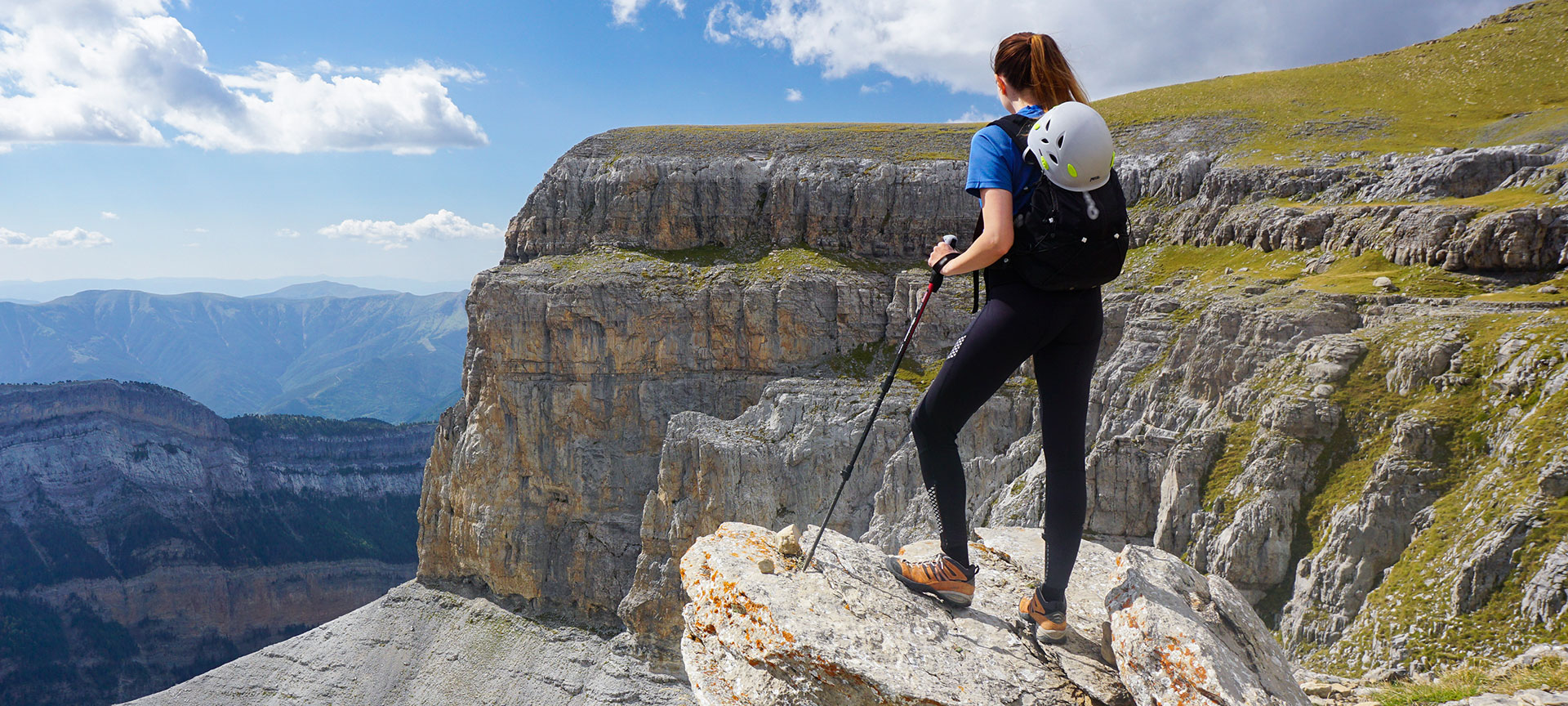
Sport and adventure
Come for a multi-adventure outing! Do you dare?
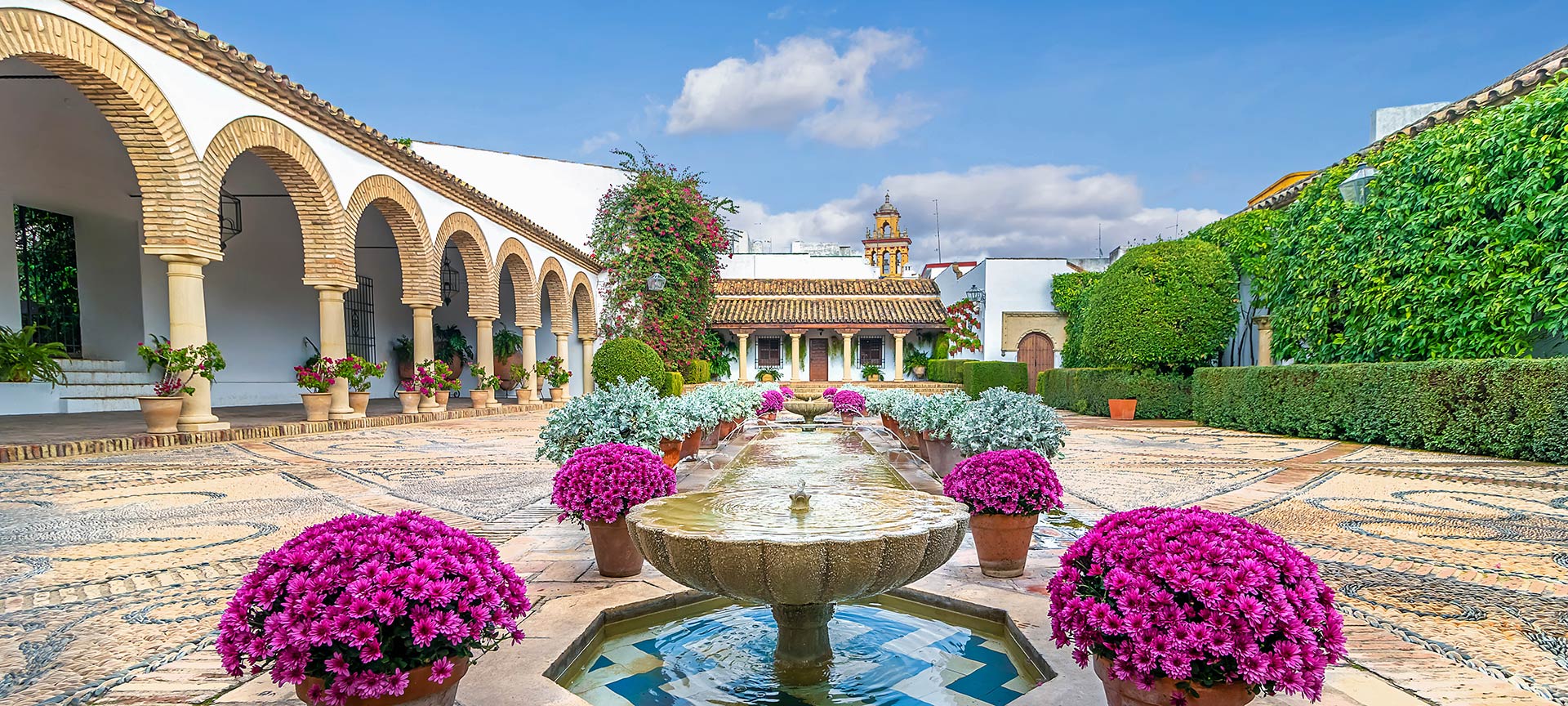
Urban tourism
Cordoba: the city with four visits to places considered as World Heritage sites, packed with festivals in May

Prepare a family getaway to the countryside

Other ideas for your trip
Do you want some more suggestions for your holidays?

Most popular spain.info TikTok videos

Our 10 most-liked photos on Instagram
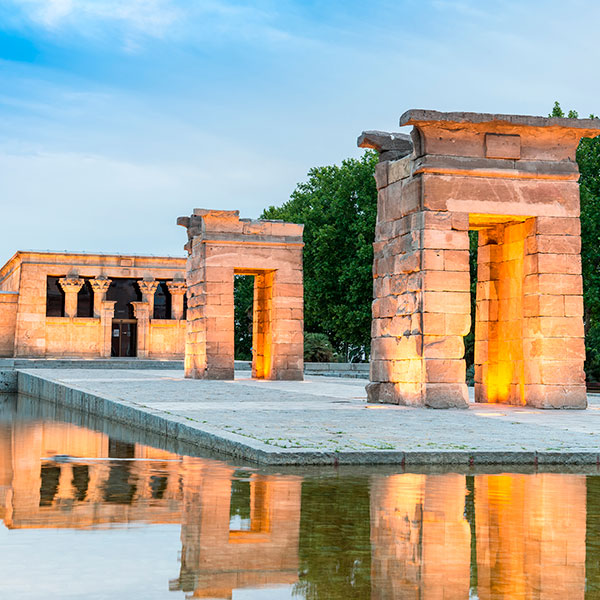
Rediscovering Madrid and Barcelona
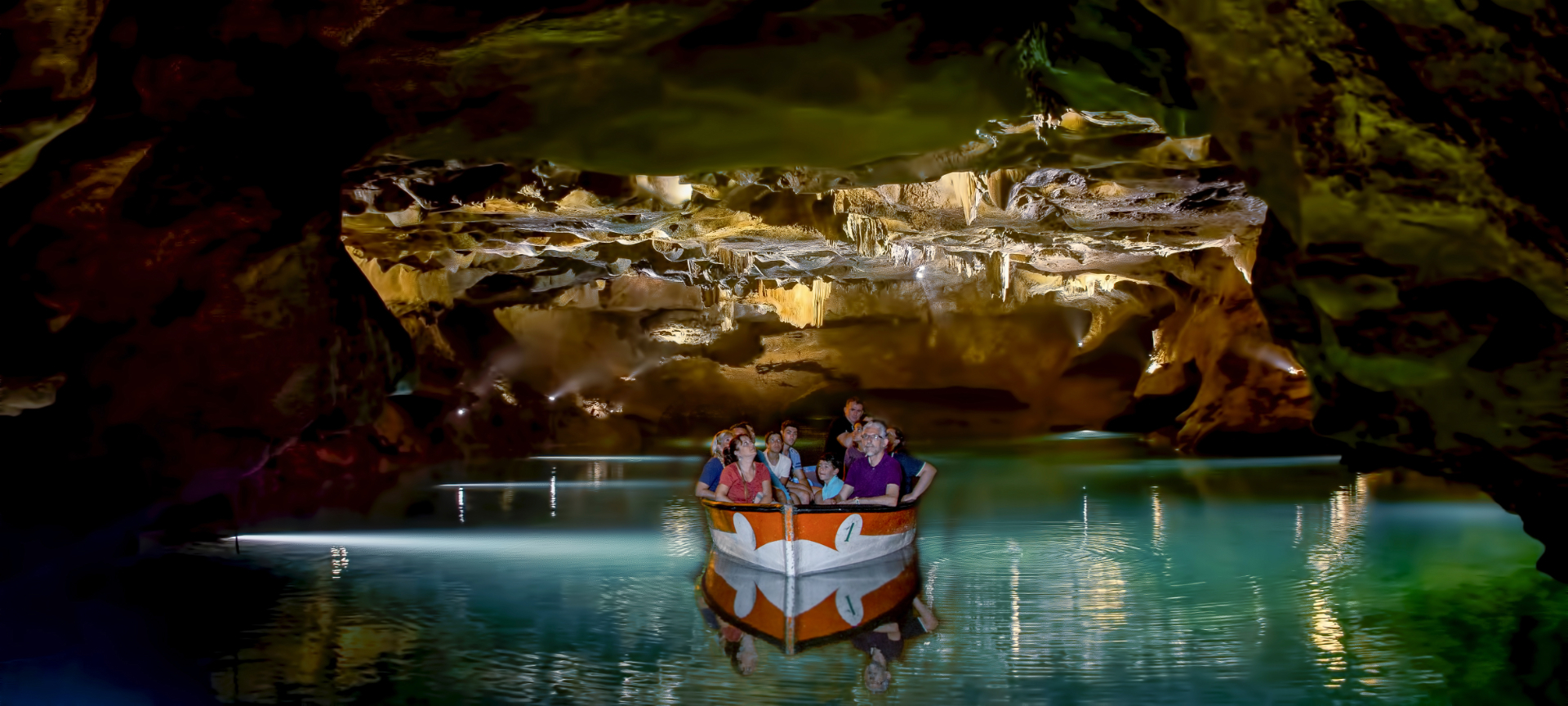
Magical natural places in Spain
Are you sure you want to delete this route?

Route planner
Create your own plan for your trip to Spain with a route to suit your requirements
Enjoy the best events
Exhibitions, festivals, festivities... Don't miss a thing!

16 March 2024 - 03 May 2024
Cherry Blossom Festival

22 April 2024 - 05 May 2024
Tennis: Madrid Open

03 May 2024 - 05 May 2024
International Comic Fair
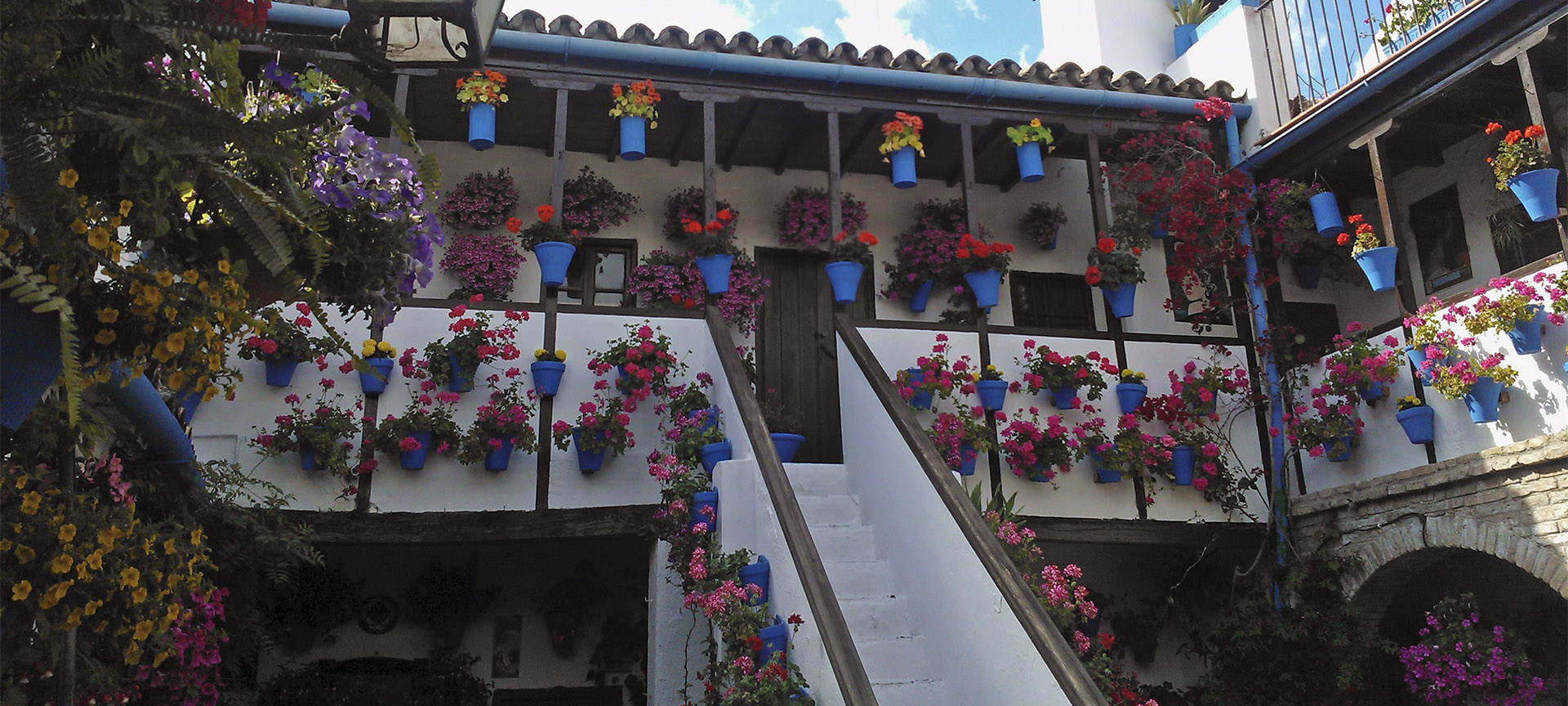
02 May 2024 - 12 May 2024
Festival of the Courtyards in Cordoba
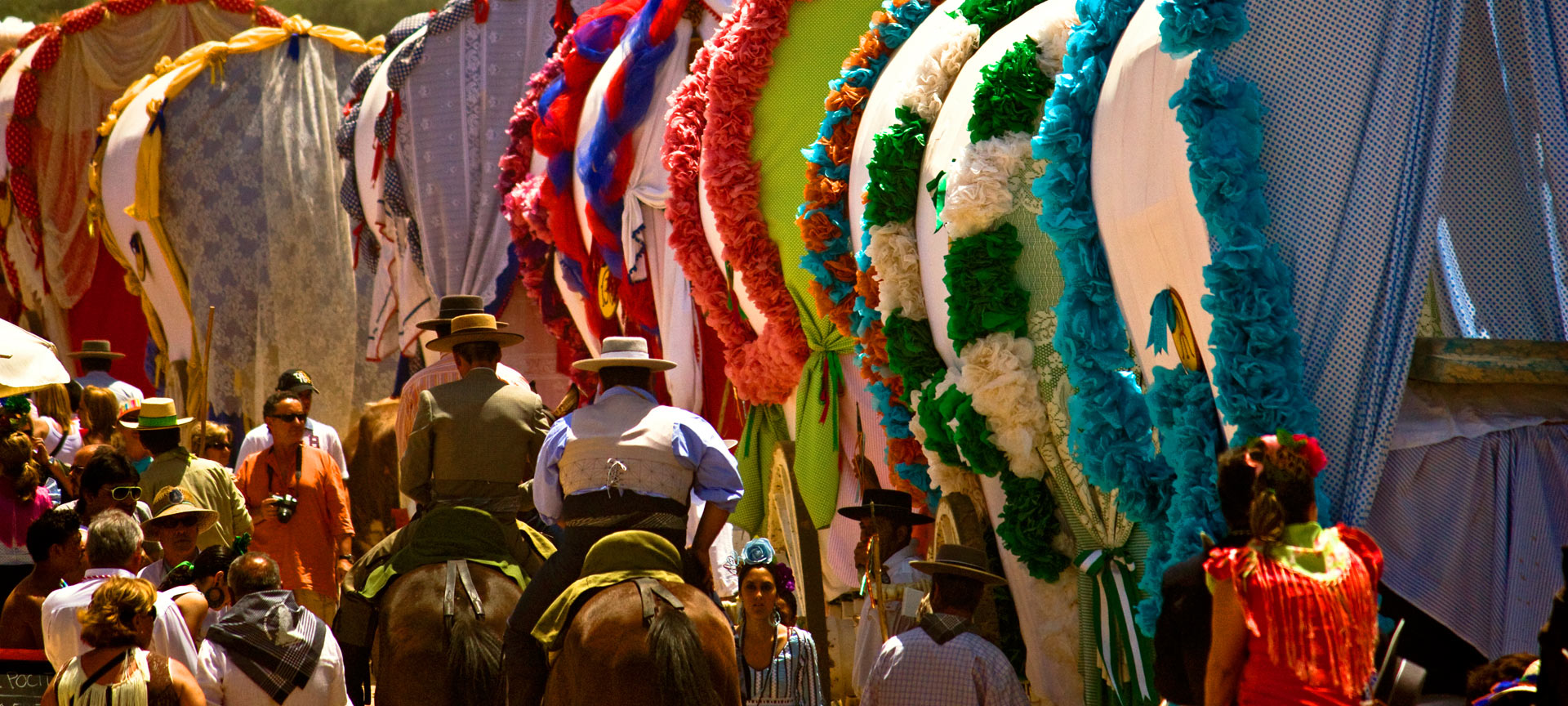
17 May 2024 - 20 May 2024
Pilgrimage of El Rocío
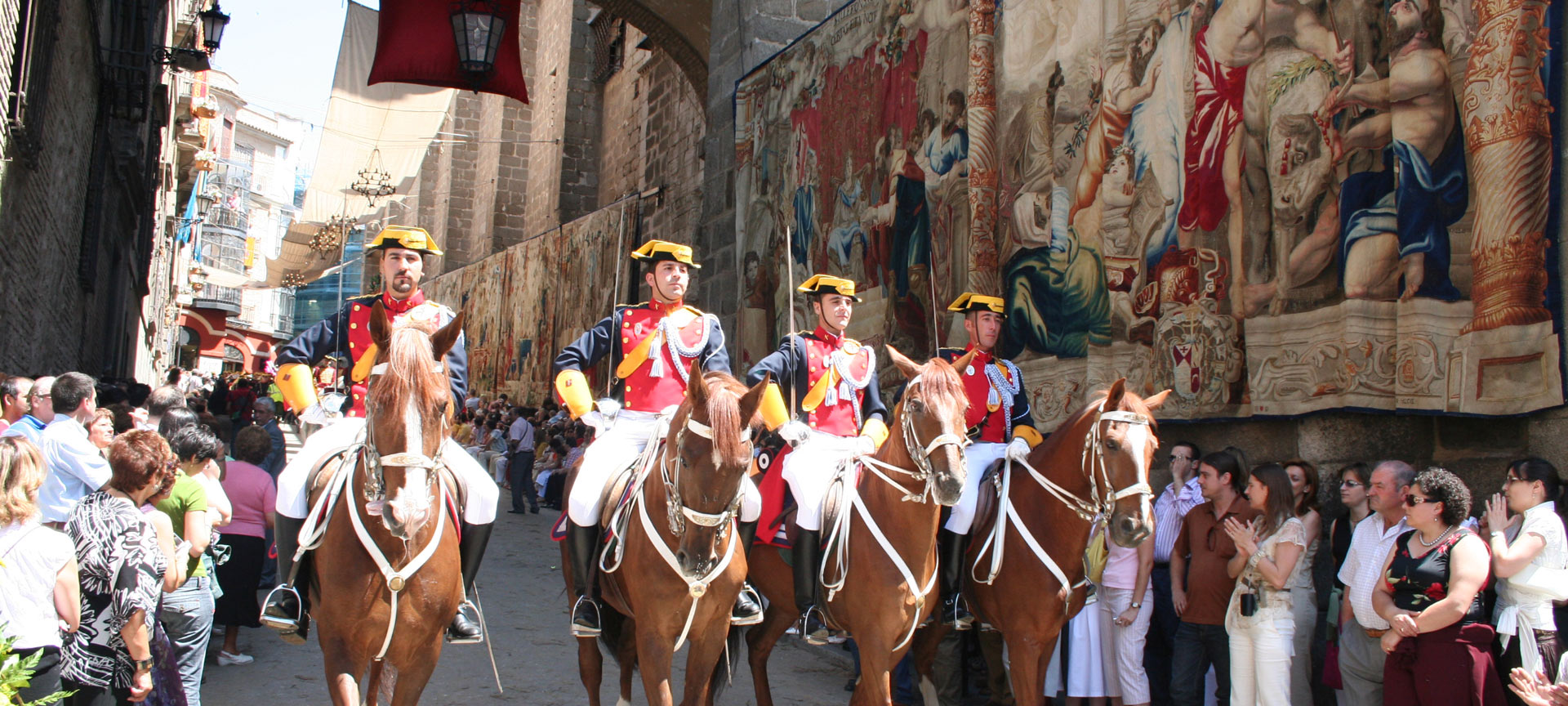
30 May 2024
Corpus Christi in Toledo
All the useful information you need.
Trip advice to get the most out of your holidays
The weather in Spain
Today in: Santiago de Compostela
How to get there
How to get around, practical information.

Book your experience
Thousands of activities thought out for you
#visitSpain
Share the best of Spain on our networks
The best ideas for travelling around Spain
Subscribe to receive monthly information with unique travel plans

JavaScript seems to be disabled in your browser. For the best experience on our site, be sure to turn on Javascript in your browser.

Recently added item(s) ×
You have no items in your shopping cart.
- Travel Videos
- Travel Maps
- Language Courses
- Inflatable Globes
Spain Road Maps | Detailed Travel Tourist Driving
Broaden your search for spain venture with spain road map, plan your itinerary, spain tourist road map, highlighting feature, find right choice, spain road maps, spain and portugal, road and shaded relief tourist map..
Item Code : FREY13483
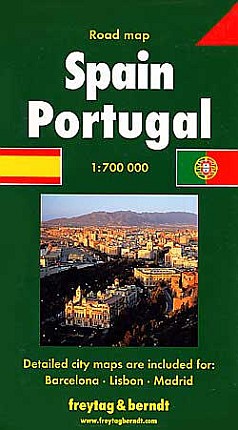
Item Code : HEMA13484
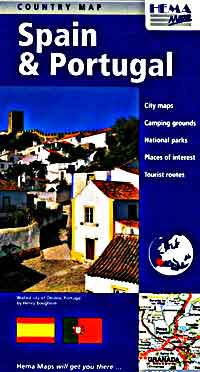
Spain and Portugal, Road and Physical Tourist Road Map.
Item Code : ROUG13485
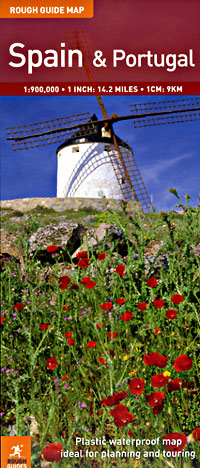
Item Code : KUMR13486
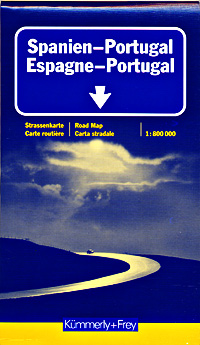
Item Code : HAMD13487

Spain Road and Shaded Relief Tourist Map.
Item Code : BORC13488
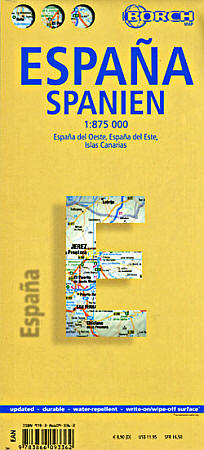
Item Code : GEOC13489

Spain and Portugal, Road and Physical Travel Reference Map.
Item Code : ITMB13493

Spain North, Rail and Road Physical and Travel Reference Map.
Item Code : ITMB13497

Scale 1:700,000. Size 27"x39". International Travel Maps edition.
Spain is the most visited travel destination in Europe, but no one has published a rail map of the country - until now. This map covers the northern half of the country from Barcelona to Santiago de Compostela and as far south as Madrid/Toledo.
Side 1 concentrated on the northeastern portion of Spain and Side 2 on the northwestern area and the far noth of Portugal. The emphasis is on train travel, but all roads and physical features are included, as well as museums, camping spots, and major attractions.
Spain and Portugal, Road and Topographic Tourist Map.
Item Code : REIS13494
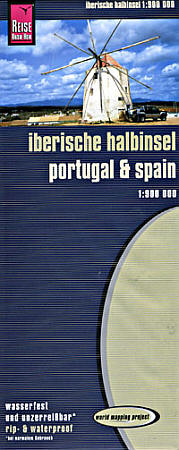
Spain and Portugal, Road and Tourist Map.
Item Code : MICH13495

Item Code : CART13496
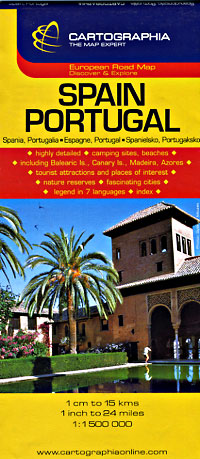
Spain and Portugal WALL Map.
Item Code : NATL13497
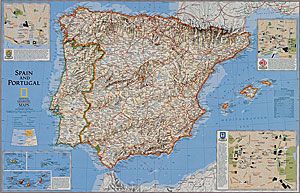
Andalucia and Costa Del Sol Road and Topographic Tourist Map.
Item Code : REIS13498

Aragon Region, Road and Shaded Relief Tourist Map, Spain.
Item Code : TELS13499
Balearic Isles, Road and Shaded Relief Tourist Map, Spain.
Item Code : HILD13500
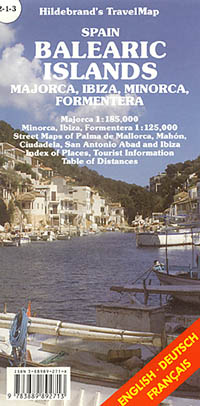
Catalonia (Catalunya) Comarques Region, Road and Shaded Relief Tourist Map, Spain.
Item Code : TELS13501
Cazorla National Park, Road and Shaded Relief Tourist Map, Spain.
Item Code : EVER13502
Costa Blanca, Road and Shaded Relief Tourist Map, Spain.
Item Code : BERN13504
Item Code : TELS13503
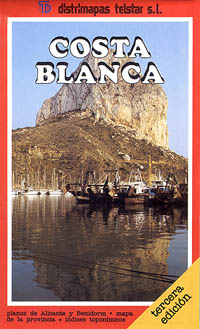
Items 1 - 20 of 48
- You're currently reading page 1
- Remove This Item
- Add to Cart Add to Cart Remove This Item
Taking the train in Spain - all you need to know

Apr 3, 2024 • 15 min read
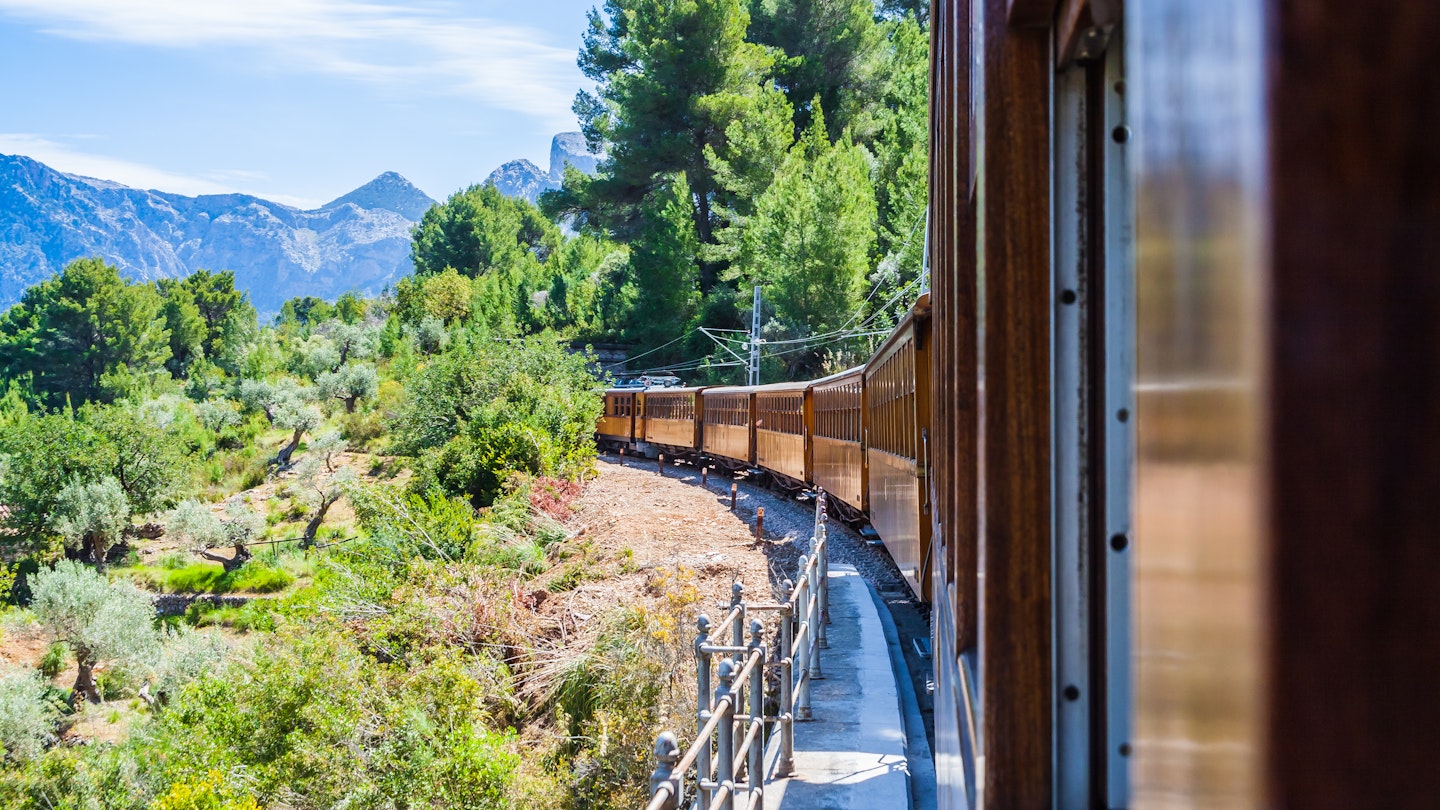
The vintage train from Sóller to Palma de Mallorca is one of the most scenic rail routes in Spain © Shutterstock
Spain boasts Europe’s longest high-speed rail network, second only to China globally, and its trains are exceptional and far-reaching. In one day, you could gawp at Gaudí’s architectural genius in Barcelona , be whisked by rail to Madrid ’s museums, and still arrive in Seville for a sunset flamenco show.
Not that it’s all A to B whirlwind rail routes. There are some outstanding scenic train journeys to slow down and enjoy the Spanish pace of life, whether trundling along the northern coast’s narrow-gauge tracks or meandering into the mountains. And with some new low-cost operators now on the scene, exploring Spain by train has never been more affordable.
With over a thousand stations and thousands more daily departures, getting around Spain by train is a straightforward joy rather than a stressful necessity. Seat reservations on most services guarantee uncrowded carriages, Rioja-serving cafe cars provide perfectly wine-paired panoramic views, and electric-powered trains make journeys even more sustainable. What’s not to love? Here’s everything you need to know to plan a train trip in Spain like a pro.

Train services are generally excellent in mainland Spain
You can traverse all four corners of Spain by train, usually on swift, reliable, well-maintained carriages. Few areas aren’t covered by at least a regional service. And where there are coverage gaps, buses will usually take you the final stretch to that pretty medieval village. While strikes can occur, they are rare, and minimum service levels are generally guaranteed. Compensation payments are offered for delays over one hour, which helps keep timetables on track.
Renfe is Spain’s national railway company, operating everything from non-stop regional capital connections to short-hop commuter services. Iryo and Ouigo provide low-cost competition on the main high-speed intercity lines, with the latter’s double-decker trains being a welcome addition.
While the numerous names for differing service and train types can be confusing, the trains in Spain can generally be divided into three categories:
- High-speed, mainly long-distance (larga distancia) services link many major cities, mainly via Madrid. These full-service trains can reach 310km/h (193mph) and include Renfe’s AVE (Alta Velocidad Española), its new no-frills Avlo counterpart, and Iryo and Ouigo. There’s an ever-growing network of high-speed routes , including the popular Barcelona–Madrid, Madrid–Seville, and Madrid–Valencia lines.
- Mid-distance services – although they can sometimes cover long distances and reach speeds of 250km/h (155mph) – make up the majority of other major routes. Renfe services these under names including Media Distancia, Avant and Alvia. Intercity and Regional Exprés services are somewhat slower but only call at major stations. Popular routes include Madrid– Toledo , Granada–Seville, and the Euromed coastal service between Barcelona and Alicante . Nearly all long and mid-distance services use sleek, modern carriages.
- Slower trains , including Regional, Proximidad, and Cercanías commuter services (Rodalies in Catalonia), complete the network. The older Cercanías AM trains, previously FEVE, mainly operate on the northern coast’s picturesque narrow-gauge tracks.
Nearly all large and medium-sized train stations are staffed and contain shops or cafes. High-speed train stations operate similarly to airports, with luggage security scanners and boarding gates. It’s advisable to arrive 20–30 minutes early, especially as boarding can close five minutes before departure. The bonus is you’ll have time to admire the stations. Some, like Toledo’s Mudejar-style ticket hall and art nouveau Bilbao Concordia , are attractions in their own right.
There are tourist trains and unique rail services too
In addition to standard train services, Spain has an exceptional selection of specialist rail routes known as “ tourist trains .” These range from seasonal, short routes, such as the scenic Tren dels Llacs in the Pre-Pyrenees, to indulgent, multiday sojourns like the luxury Transcantábrico train hotel. There are currently no standard domestic night trains.
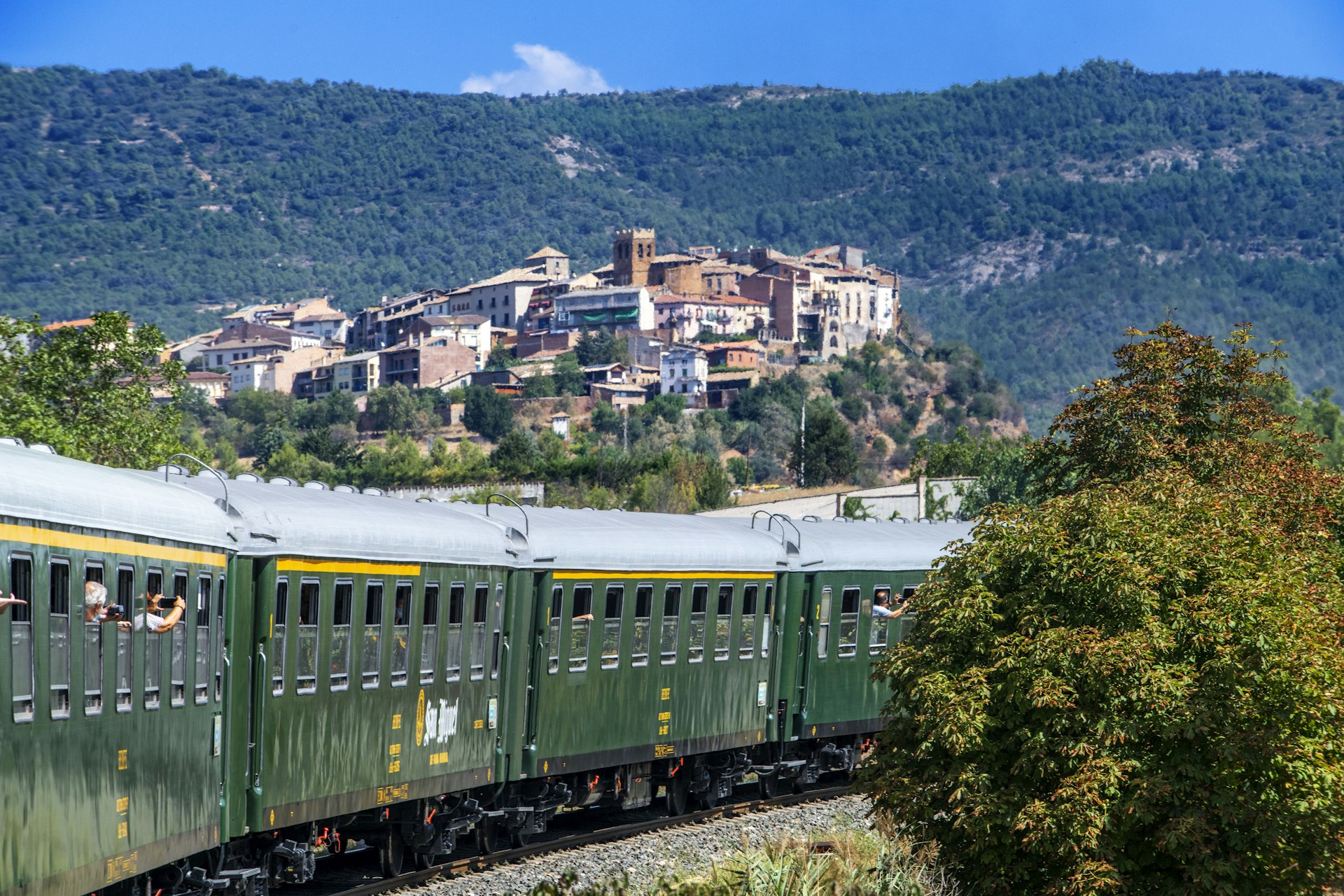
International and island rail routes are limited
Away from the mainland, the rail situation is starkly different. The Canary Islands have no train services, and only Mallorca in the Balearic Islands has limited rail connections . These consist of three short, modern lines and the vintage Sóller train.
Traveling to and from France by train is possible on France’s TGVs (from Paris) and Renfe’s International AVE services to Marseille and Lyon . Fares start from €29. You can also cross via Hendaye in the Basque Country or take the slower, scenic sleeper service via the Pyrenees . The Trenhotel (night service) between Madrid and Lisbon has been discontinued, leaving the Tren Celta between Vigo and Porto and the slow route to Lisbon via Badajoz as the only connections with Portugal . Work continues on improving the tracks to accommodate a direct, high-speed link between the two Iberian capitals.
Book ahead to save money and guarantee your seat
Spain’s rail operators all use dynamic pricing for high-speed and long-distance services. Therefore, early booking is advised, especially as seat reservations are mandatory. Advanced Avlo tickets between Madrid and Barcelona start from €7, with Ouigo and Iryo also offering competitive pricing on primary routes. A same-day ticket can sometimes cost more than 10 times more than booking in advance. Prices are less competitive on routes solely operated by Renfe.
When booking tickets online to or from major cities, use the dropdown city name followed by todos (all) to check for direct and affordable tickets from all stations. Provide the Passport or ID number of the photo document you’ll be traveling with, as tickets are personal. The second surname can be left blank – Spanish people take both their father's and mother’s surnames. Tickets can be printed, collected at self-service machines, or displayed as QR codes on mobile devices. Overall, Ouigo and Iryo's websites are easier to navigate than Renfe's, which can be glitchy. While most people would recommend using a third-party booking service – handy for comparing prices between all operators – direct reservations avoid booking fees.
Even short-distance, popular services with fixed fares (some mid-distance and regional trains) can fill up. I’ve previously struggled to get last-minute weekend tickets on the Madrid to Toledo route. Secure all tickets ahead if your vacation coincides with a major holiday such as Easter (Semana Santa) or Christmas, including around Three Kings Day on January 6.
Iryo and Ouigo release tickets many months ahead. Renfe’s tickets should be available at least 60 days ahead, but this isn’t always true. Check regularly in the months leading up to your departure and sign up for newsletters on the three websites to receive ticket availability and discount updates.
Occasionally, two single fares (ida) can be cheaper than a return (vuelta) . Reservations can also be made at station ticket machines (in English) or staffed desks. Larger stations may have separate sales points for particular types of tickets.
You’ll always be assigned a mandatory seat reservation. However, if you’d prefer to select your own to guarantee a window, you can change it for a nominal fee. Confusingly, Renfe’s website has this step after choosing a payment method.
Cercanías and Cercanías AM tickets can’t be purchased in advance and should be purchased at the ticket office, self-service machine, or onboard from the conductor when traveling from the tiniest unstaffed stations. This is the only time you’re allowed to board a train without a ticket.
If you wish to upgrade from basic class (básico) on high-speed routes, you can choose from Elige, Elige Confort and Prêmium on Renfe, or similar options on Iryo. Upgrades can include access to premium station lounges, at-seat food service, and more spacious seats. Solo travelers may want to upgrade to enjoy an individual seat in the 2+1 configured carriages. Ouigo allows these seats as a paid add-on without upgrading.

Discounts and offers: know your benefits and bring ID
Much noise was made about the launch of Spain’s fixed-price travel pass . Yet this system, established to offer discounted fares on repeat return trips, is primarily aimed at locals and commuters.
Renfe does offer a Spain Rail Pass for travelers , covering between four and ten journeys. However, depending on the routes you plan to take, pre-booking discounted, advanced fares can be cheaper. Some region-specific options exist, such as the better value three-day Galica Rail Pass .
Other discounts available on Renfe include:
- Small group discount when booking four or more travelers together.
- Seniors discount, up to 40%, for over 60s. However, this requires purchasing a card ( La Tarjeta Dorada ) in person before making the reservation. Advanced, discounted fares can be better value.
- Youth Discounts for under 25s with a European Youth Card or suitable International Student Card. A digital card can be purchased online by citizens of most countries.
- Babies travel for free, as do children, although the age cap varies between operators.
Considering an Interrail or Eurail pass? Check on any savings first. All high-speed trains in Spain require seat reservations, an additional cost not included in these passes. Avlo, Iryo, and Ouigo are likewise excluded, and these cheaper advanced tickets may be better value than using the pass, though there is less flexibility.
Money-saving tip: high-speed trains include a free local ticket
If you’re traveling on a high-speed AVE or long-distance service operated by Renfe or Iryo, Combinado Cercanías is included. This allows for free use of local Cercanías trains to reach your departure station and again on arrival. Scan the QR code at barriers, or use the PDF code to get a zero-priced ticket at Cercanías’ self-service machines.
Seat reservations ensure most train journeys don’t feel crowded
Traveling by train in Spain is so enjoyable because all long and mid-distance services require a seat reservation. With no congested corridors or jostling vestibules, these trains never feel crowded, even when full. However, some regional and Cercanías services can be packed, particularly around commuter hours and Friday and Sunday evenings. You might want to avoid peak times or, when available, pay for a regional service seat reservation.
Plan around major events and regional holidays during your trip, such as Semana Santa, when ticket demand and crammed suburban trains are common. Trains in Spain operate every day of the year, though some services may finish earlier on public holidays. If you’re traveling on weekends or during holidays, check onward public transport in advance as small, rural stations may have a reduced weekend bus service.
Train can be the fastest, most affordable transport method
Using the train in Spain can be quicker and cheaper than flying. For example, a flight from Madrid to Barcelona takes 1¼ hours compared with 2½ hours by high-speed rail. But once you factor in security checks, out-of-city airport transfers, and runway taxi times, the overall journey length by plane becomes longer.
Driving distances are considerable. The same journey by car will take closer to seven hours. It’s unquestionably worth renting a car if you’re planning a road trip , but generally, long-distance jaunts are best by rail.
Most train terminuses are connected to city buses and, in larger metropolises, commuter rail or metro systems. Barcelona-El Prat Airport and Madrid–Barajas Airport are on the train network. If you wish to visit smaller towns or villages that are not on the train network, consider other ways to get around Spain .

Onboard facilities differ between service types
All of Spain’s high-speed train services are spacious, comfortable, clean and well cared for. Carry-on luggage can be placed in overhead racks, while storage areas at either end of the carriage accommodate bulkier luggage. Popular services (especially on Friday and Sunday evenings) can quickly fill, and train staff will usually assist in rearranging suitcases to fit. Cercanías services can be more dated and crowded and often lack enough dedicated luggage space.
If you’re traveling by bicycle, check the luggage policies of Renfe and Iryo . In some instances, bikes must be disassembled or an additional fee paid.
The dining carts on Spain’s trains are typically stand-up, cafe-style rather than seated dining carriages. They’re good for stretching your legs or getting an alternative window view, but dining at your seat table is often more comfortable. A selection of hot meals, snacks and drinks – usually all of decent quality – are available, and certain ticket types offer pre-ordered meals served at your seat. Iryo has particularly impressive dining options .
On some routes, a trolley service may be provided in addition or as an alternative. Mid-distance and Avlo services have vending machines rather than dining carts. Bringing your own food and even alcohol onboard Renfe’s services isn’t a problem.
Complimentary (sometimes patchy) wi-fi is provided on Iryo and Renfe’s high-speed services, alongside entertainment portals accessible on your device. Ouigo charges per connection. Plug sockets (F-type) are available at seats on high-speed and mid-distance trains. Nearly all trains, except commuter services, have toilets.
Plan the perfect train trip with these scenic routes and tips
The most popular train routes for travelers in Spain are the high-speed connections that rocket between Seville, Madrid, Barcelona and Valencia. But riding the rails in Spain isn’t only about barrelling between urban sprawl. These are some of our favorite scenic rail routes worth planning into your trip.
- Santander to Oviedo : Cross the lush landscapes of Northern Spain on this slow, scenic rail route using Cercanías AM’s narrow-gauge tracks. This six-hour journey provides some of the expensive Transcantábrico Train’s panoramas for a bargain €16.55. There are no seat reservations, which is handy, as you can switch sides to marvel at both the sparkling Bay of Biscay and the mighty Cantabrian Mountains , Spain’s answer to the Dolomites.
- Barcelona to A Coruña : Once served by the discontinued sleeper Trenhotel, this is one of Spain’s longest rail routes, taking nearly 14 hours. The 9:05am Alvia departure can be affordable to cross seven of Spain’s autonomous communities. Pack snacks and pay for a window seat (ideally on the right) to see the full scope of Spain’s landscapes, from arid pastures and fertile farmlands to the verdant Galician Massif . Consider hopping off a few stops early in Ourense to use the town’s free-to-access thermal pools the following morning.
- Granada to Almería : Leaving the magnificent Moorish Alhambra behind, set off across western Andalucía towards the coastal city of Almería. It’s a showstopping three-hour journey traversing the foothills of the Sierra Nevada, snow-capped peaks looming beyond, before cutting through carpets of cork trees. Book a late afternoon departure for ethereal golden light, or take two single tickets to plan a lunch pause at Guadix, best known for its cave houses.
- Palma de Mallorca to Sóller: Step onboard the rickety, wooden carriage of Ferrocarril de Sóller , constructed in 1912, for a one-hour-long trundle from Mallorca's capital to the pretty port town of Sóller. En route, you’ll wend through the Tramuntana Mountains, unlit tunnels, and citrus groves close enough to touch. All seats are excellent, but you might want to stand in the open-air platforms between carriages.
- Zaragoza to Canfranc : A one-way ticket on this twice-a-day, 2½-hour regional train costs just €16.90, and you’ll get plenty of panoramas for your money, especially after Huesca when the tracks slowly climb up into the Pyrenees. Our resident rail expert, Tom Hall, calls it one of Europe’s best train routes , partly because the landmark Canfranc Station has recently been reborn as a grandiose hotel .

Station tips when traveling Spain by train
Most large cities have multiple train stations, so always confirm departure points. When traveling to dedicated AVE stations outside major cities, check the station’s distance from the city center and pre-plan your connecting travel. Some stations, such as Antequera ’s Santa Ana, can be as far as 15km (9 miles) from the Old Town.
Spain’s largest stations, such as Madrid Atocha and Barcelona Sants, can be confusing due to split-level and separated boarding areas for different services. Don’t be afraid to ask for help navigating the station. A quick flash of your ticket will soon have you pointed in the right direction.
All major stations have cafes and kiosks where you can pick up food, although preparing a train picnic from a delicatessen might be preferable. Still, a quick tapas in Atocha's Tropical Garden, even if the pond-residing turtles have now been rehomed, is a solid start to any journey. If you’re on a connecting service with time to explore beyond the station, most larger terminals have lockers or left luggage desks (consigna) .
Many stations are accessible, but there’s room for improvement on older services
Adif, the agency in charge of Spain’s rail infrastructure, provides in-station and boarding assistance for travelers with accessibility needs via the Acerca service, offered at 145 stations.
When booking tickets online, H seats – accessible spaces that can anchor a wheelchair – can be requested on the opening screen, and Acerca assistance can be requested later in the booking process. A minimum of 12–48 hours' notice is stipulated, depending on the operator. However, in larger stations, staffed service centers can usually provide support without pre-booking if you arrive and register at the desk ahead of travel. Check which facilities are available at each station on Adif’s website .
In addition to offering boarding support (many train types require a stair-climber lift, not just a ramp, while others like Avlo have level boarding), Acerca can provide technical aids for hearing and a guided sight service. Contact Adif Acerca for information on induction loop systems or to discuss alternative routes should your planned journey include a non-accessible station without in-person assistance. Tactile paving, step-free access, and elevators are installed at most major stations, and nearly every train has a conductor or staff member onboard who can assist.
On high-speed, long-distance, and most other services, wheelchair-accessible bathrooms are located in carriages with H seats. Ouigo trains have a call button on adapted seats to provide food and drink service, as the cafe is located on the top deck. Cercanías AM carriages have no H seats but offer a dedicated space for wheelchair users with tie-downs. However, many older, narrow-gauge trains lack accessible bathrooms.
Explore related stories
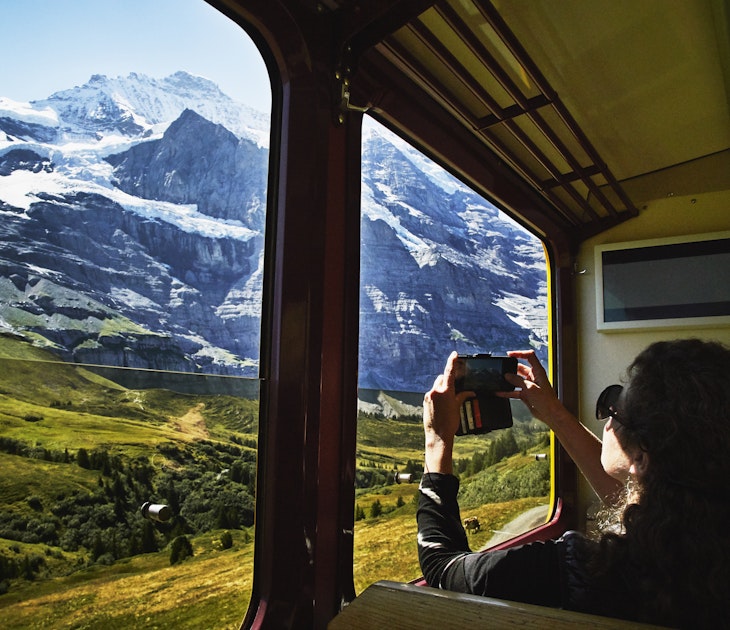
Sustainable Travel
Jan 16, 2024 • 8 min read
Rolling forests, saw-toothed mountains, bridges spanning river gorges - these European train rides put on quite a show.

Dec 25, 2023 • 11 min read

Dec 19, 2023 • 6 min read

Nov 1, 2023 • 4 min read

Oct 19, 2023 • 8 min read

Oct 6, 2023 • 8 min read

Jun 26, 2023 • 5 min read

Jun 18, 2023 • 6 min read

May 19, 2023 • 12 min read
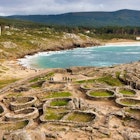
May 5, 2023 • 7 min read
Map of Spain
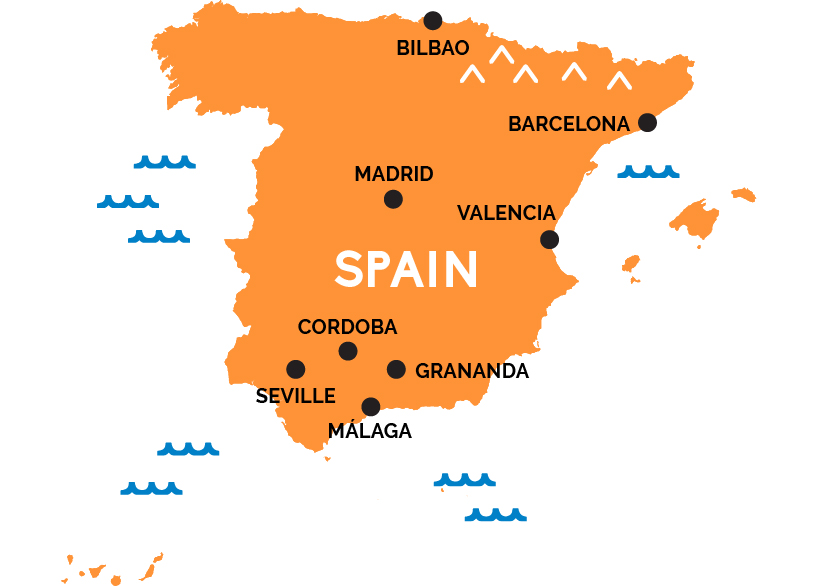
Welcome to the land of flamenco and tapas, siestas and bullfights, holy pilgrimage shrines and medieval Arabian pleasure palaces.
Spain’s capital, Madrid—packed with amazing museums—sits pretty much in the center of this large Mediterranean country across the Pyrenees from France, with high-speed rail connections to the nation’s far-flung cities. Most trains into Spain pass first through the northeastern border town of Irún (near San Sebastián, just east of Bilbao, capital of the northern Basque country), or through Barcelona, a beautiful and bohemian city at the eastern end of Spain’s southern, Mediterranean coast, and the capital of its own autonomous province, Catalunya (Catalonia).
Southwest down the coast from Barcelona is Valencia, capital of paella country, and, eventually, the famed beaches of the Costa del Sol and Costa de la Luz around Málaga. These beaches are in the southernmost Spanish province of Andalusia, the most Arab-inflected part of Spain. Andalusia’s great cities—Granada, Cordoba, and the regional capital of Seville—offer amazing architecture and rich cultural traditions, and the bars echo with flamenco music late into the night. In the northwestern province of Galicia, hanging above Portugal, is the pilgrimage capital of Santiago de Campostela. Off the southwestern coast lie the Balearic party islands of Ibiza, Minorca, Majorca, and Formentera. (The Spanish Canary Islands are in the Atlantic Ocean, off the coast of Morocco.)
Single Country Passes

Eurail Austria Pass

Eurail Benelux Pass

Eurail Bulgaria Pass

Eurail Croatia Pass

Eurail Czech Republic Pass

Eurail Denmark Pass

Eurail Finland Pass

Eurail France Pass

Eurail Germany Pass

Eurail Greece Pass

Eurail Hungary Pass

Eurail Ireland Pass

Eurail Italy Pass

Eurail Lithuania Pass

Eurail Macedonia Pass

Eurail Norway Pass

Eurail Poland Pass

Eurail Portugal Pass

Eurail Romania Pass

Eurail Scandinavia Pass

Eurail Slovakia Pass

Eurail Slovenia Pass

Eurail Spain Pass

Eurail Sweden Pass

Eurail Turkey Pass
Advertisement
Supported by
Fjords, Pharaohs or Koalas? Time to Plan for Your Next Eclipse.
If you can’t get enough of totality, or missed out this time, you’ll have three more chances in the next four years in destinations like Iceland, Spain, Egypt and Australia.
- Share full article

By Danielle Dowling
Are you still a little giddy from the magical moments of totality during Monday’s solar eclipse? Or did clouds swoop in to block your view? Maybe you just couldn’t make it to the path of totality this time. No matter what, the question now is “ Where and when will it happen again?”
“People who have never seen it before, the first words out of their mouth after the totality ends is ‘I’ve got to see another one, this is incredible, this is unbelievable.’ That is when you become addicted to these things and end up traveling no matter where the next one is,” said Joseph Rao, an eclipse chaser and guest lecturer at the Hayden Planetarium.
So, if like Mr. Rao, you’ve developed a raging case of umbraphilia — the love of eclipses — you’ll have three chances over the next four years to see the moon blot out the sun. The first, on Aug. 12, 2026, will start above Greenland, then strafe the west coast of Iceland and move along the Atlantic Ocean and over Spain. Almost a year later, on Aug. 2, 2027, another will skirt the Mediterranean coast of North Africa then cross Egypt and part of the Arabian Peninsula. The third, on July 22, 2028, will cut across Australia and the southern tip of New Zealand.
Future Eclipses
Eclipse chasers will have several more chances this decade to view a total solar eclipse .

Last week, as Victoria Sahami , the owner of Sirius Travel , was preparing to guide a group of tourists in Mazatlán, Mexico, for Monday’s big event, she was also planning for these other upcoming eclipses. Ms. Sahami joined the ranks of the eclipse-obsessed when she witnessed one in Venezuela in the 1990s. “Like many people, I was hooked. There was no going back,” she said.
Total solar eclipses happen fairly regularly — about every one to two years — in locations scattered around the world. “That’s the great thing about them: You wind up in places that you don’t normally go,” Ms. Sahami said.
A major spoiler is weather, which will be a big variable in the 2026 eclipse — one Greenland, Iceland and Spain will see.
“Iceland normally has a lot of cloud during that time of year,” said Paul Maley , who runs Ring of Fire Expeditions . “The data shows Spain to have the higher good-weather prospects of all three. However, the sun is low in the sky and the eclipse ends as the sun hits the horizon at sunset.”
Because of Iceland’s mercurial meteorology, Ring of Fire Expeditions is going all in on Spain, with a 10-day excursion on the mainland. Sirius Travel is offering not only a five-day trip to Majorca but also an eight-day tour around Iceland. It will be based in Reykjavik, and the itinerary will remain flexible on the day of the eclipse so the tour can easily pivot toward the location with the least cloud cover. Ms. Sahami recommends the trip for those who already have a few eclipses under their belt and would be happy just to take in the sights of Iceland if the weather doesn’t cooperate.
The 2027 eclipse, on the other hand, promises to be truly stellar: Luxor, Egypt — the site of numerous ancient temples as well as the Valleys of the Kings and Queens — sits right in the middle of the path of totality and will be bathed in darkness for a full 6 minutes 23 seconds. Weather-wise, it is what Ms. Sahami called “a slam dunk.” “You know you’re going to see it. You know that you’re not going to get any clouds,” she said.
But for all its potential, those considering Egypt should be aware that the State Department has a Level 3 “Reconsider Travel” warning for the country because of the risk of terrorism.
The 2028 eclipse will darken the skies over Sydney, Australia, for 3 minutes 49 seconds. It will be the first time the city has experienced a total solar eclipse since 1857. Ms. Sahami has her eyes on a trip based out of there, while Mr. Maley has chartered a cruise ship off the northwest coast of Australia. It will be winter there, he said, but that isn’t likely to mean bad eclipse-viewing weather.
If you want to see any (or all) of these eclipses, you should get started on planning and booking now, particularly if you want to sign up for a trip organized by a tour company. One of Sirius Travel’s excursions to Luxor is already full.
Scrutinize refund policies and look into insuring your trip. Several companies will fully refund your deposit if you cancel a year in advance. A lot can happen, Ms. Sahami said, “but if you think you’re going to go, why not?”
Follow New York Times Travel on Instagram and sign up for our weekly Travel Dispatch newsletter to get expert tips on traveling smarter and inspiration for your next vacation. Dreaming up a future getaway or just armchair traveling? Check out our 52 Places to Go in 2024 .
Already planning to see the next solar eclipse in 2026? What travelers need to know.
Umbraphiles feeling the post-eclipse blues should start checking the expiration date on their passports.
The next total solar eclipse is set to happen on Aug. 12, 2026, over Greenland, Iceland, Spain, Russia and a small part of Portugal, according to NASA .
In North America, only a partial eclipse will be visible, so if April’s event made you an eclipse chaser and you want to see totality, you’ll need to head overseas.
Here’s what you’ll need to know before packing your bags:
Do you need a passport or visa for the best destination?
The path of totality for the 2026 eclipse mostly goes through places Americans can travel visa-free with their passport, so long as they’re planning to stay for less than 90 days.
Spain, Portugal, Iceland and Greenland all allow visa-free tourist travel for U.S. passport holders.
Spain, Portugal and Iceland are also members of the Schengen Area, which allows for visa-free travel in much of Europe, meaning if you decide to make a multi-country trip out of your eclipse adventure, you won’t need to clear customs if you’re coming from much of the rest of Europe, either.
One major change for travelers to Europe from the U.S., however, is that electronic preauthorization will become a requirement beginning in mid-2025. The European Travel Information and Authorization System (ETIAS) requirement will apply to all four open countries in the path of totality.
Depending on the state of the Ukraine war, travel to Russia may or may not be an option for most Americans by 2026, so it’s unclear what the paperwork requirements will be by then.
Is it better to see it from the beach?
Beaches can be a great place to see the eclipse because there are few natural obstacles blocking observers’ views of the sky. The 2026 path of totality passes over beaches on Spain’s northern and southeastern coasts, as well as over islands in the Mediterranean Sea including Mallorca, Menorca and Ibiza. The eclipse will also pass over coastal areas in Greenland and Iceland, according to the National Solar Observatory .
Cruising Altitude: What it was like to see the eclipse from a plane
Will there be eclipse cruises or flights?
Almost certainly, although most operators have not announced specific plans yet.
Cruise lines will also offer more viewing opportunities. Princess Cruises “has created a bespoke itinerary aboard Sky Princess to position the ship near Spain on that date,” according to a spokesperson for the line. The cruise will open for bookings on Princess’s website on May 23.
Cunard Line has sailings on its Queen Mary 2 , Queen Victoria and Queen Anne vessels that will put passengers in prime spots to watch .
'The ship can move': Why you should watch next solar eclipses from a cruise ship
Holland America Line is also planning multiple sailings around the event, though details are still to be announced. “Guests have reacted positively to our 2024 eclipse cruises and with the next full eclipse in 2026 we plan to have three sailings in Europe that will align with the path of the eclipse,” Paul Grigsby, the line's vice president of Deployment & Itinerary Planning, previously told USA TODAY in an email.
If you missed Monday’s solar eclipse, it’s a long wait until the next
A total solar eclipse won’t pass through the contiguous united states again until 2044. but, the next one is in 2026, if you’re willing to travel overseas..

Tens of millions of Americans gawked at the skies in unison Monday, transfixed by the celestial spectacle of the decade. A total solar eclipse traced a path from Mexico to the Canadian Maritimes, crisscrossing states from Texas to Maine, before vanishing over the Atlantic.
2024 total solar eclipse

Experiencing eclipses can be addictive, leaving skywatchers hungry for the next opportunity. And there are many people yearning for another chance because either clouds blocked their view or they were unable to travel into the path.
But, unless you’re willing to travel great distances, it’s going to be awhile before the next total solar eclipse within the contiguous United States. Not until Aug. 23, 2044, to be exact. But if you’re willing to travel to some far-flung locations, the wait could much shorter.
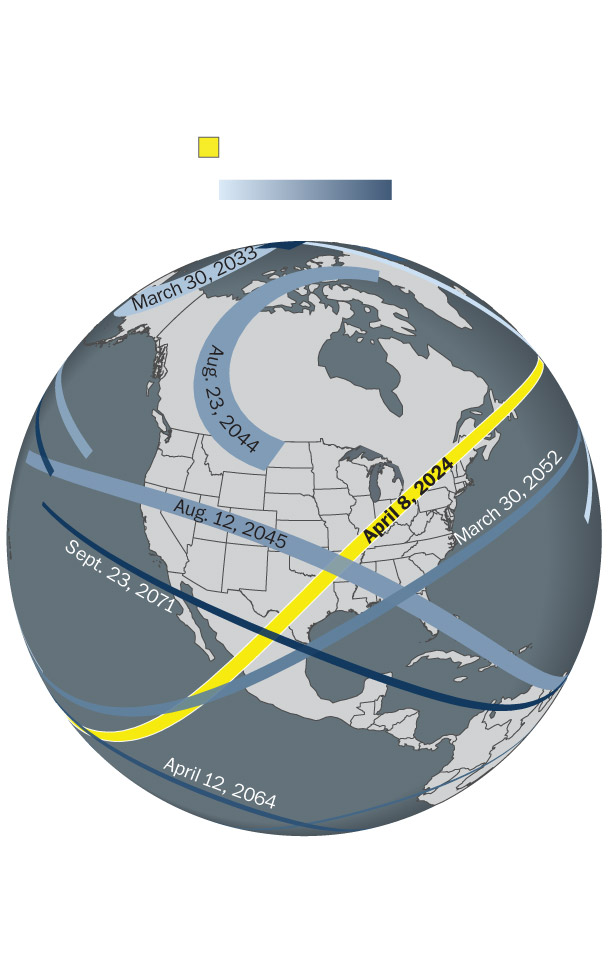
Total eclipses over the next 50 years
This year’s eclipse
CARSON TERBUSH / THE WASHINGTON POST

The next total solar eclipses outside the United States
If you’re willing to exit the United States, your next opportunity to bask in the moon’s shadow will come on Aug. 12, 2026 . A total solar eclipse will begin over remote extreme northern Russia, then pass near the North Pole before tracking southeastward over eastern Greenland, clipping western Iceland and eventually concluding over the Iberian Peninsula.
It will be the first total solar eclipse visible in Iceland since 1954, and the last until June 26, 2196. Then it will sweep through northern Spain, sneaking in between Madrid and Barcelona before ending as a spectacular sunset eclipse for the island of Palma. (I’ll be renting a house in Zaragoza)
Conveniently, the August weather will likely cooperate — Spain’s weather tends to be particularly dry, with a 70 to 80 percent chance of sunshine. Even more important is the Perseid meteor shower, which will be in full swing during the eclipse. It’s possible that a few Perseid “fireballs,” or especially-bright shooting stars, will streak across the sky during totality.
After that, there’s a total solar eclipse on Aug. 2, 2027 that passes over the Strait of Gibraltar, then swings through northern Algeria, Tunisia, Libya and Egypt before passing over the western Arabian Peninsula. Totality will be visible from western Saudi Arabia and Yemen. The shadow will cross the Gulf of Aden and swing over northern Tunisia. It will be a particularly long-lasting eclipse, with over 6 minutes 22 seconds of totality on the banks of the Nile River in Egypt near Luxor. (I’m planning to travel to this one, too.)
Then there’s one in Australia in 2028 on July 22 . Flying into Alice Springs would be a good option, then driving north through the Northern Territory. (I’ll be staying in Tennant Creek. By now, you’ve probably figured out that I’m a full-fledged umbraphile, or solar eclipse addict and chaser. Umbraphile literally translates to “lover of the shadow.”)
The next total solar eclipses within the United States
The next total solar eclipse in the United States will occur in northwest Alaska on March 30, 2033 . Eastern Russia will see it too. Nome, on Alaska’s Seward Peninsula, is on the centerline and slated to receive two and a half minutes of totality. (Nome is home to the Iditarod’s finish line.) Utqiagvik, formerly known as Barrow — the nation’s northernmost town — is also extremely close to the centerline, and will get 2 minutes 35 seconds of totality. Unfortunately, Alaskan weather is notoriously capricious during the month of March, and it’s not impossible that the entire viewing area would be clouded over.
In the Lower 48, the next eclipse comes on Aug. 23, 2044 . During that eclipse, totality will commence in the high Arctic, then trace a C-shaped path through Greenland, northwestern Nunavut, the Northwest Territories and along the British Columbia-Alberta border in Canada. Calgary is in the path. Then the shadow sweeps into Montana, North Dakota and far northwest South Dakota at sunset.
If you’re looking for a cross-country eclipse, you hardly have to wait a year after that — one is coming on Aug. 12, 2045 . The shadow sweeps from California to Florida, where totality will last just over six minutes. Totality then passes over the Bahamas, Hispaniola and northeastern South America.
So sure, stateside, you’ll have to wait a couple decades — but consider booking plane tickets and arranging an adventure. Each rendezvous with the moon’s shadow is special, and alignment of sorts between you and the universe. And the best part? Chasing that shadow may take you off the beaten path to parts unknown.
A total solar eclipse passed across the United States on Monday, April 8. See photos and videos from the path of totality and read our reporters’ coverage from scenes across the nation .
Looking ahead: Missed this one? The next eclipse visible in the United States won’t be until 2044 — and then we’ll see another shortly after in 2045. If you did watch this eclipse but without proper eyewear, here’s what to do if your eyes hurt .
The science: This eclipse appeared especially dramatic because the sun was at its most active period in two decades. In the past, solar eclipses have helped scientists learn more about the universe . Here’s everything else to know about the solar eclipse.
- What to do if your eyes hurt after the eclipse and how to spot damage April 9, 2024 What to do if your eyes hurt after the eclipse and how to spot damage April 9, 2024
- See how the eclipse transformed America, city by city April 8, 2024 See how the eclipse transformed America, city by city April 8, 2024
- Clouds part and crowds scream as total solar eclipse delights the U.S. April 8, 2024 Clouds part and crowds scream as total solar eclipse delights the U.S. April 8, 2024


IMAGES
VIDEO
COMMENTS
Here's my free Google Map of Spain. Map of Spain divided by regions (comunidades autónomas). Spain map: weather forecast (AEMET). ViaMichelin: Michelin route planner and maps to help you with directions and traffic. Spain map: train routes. Map: Spain's main travel destinations. You'll need a city map, but which one is best?
This large map of Spain will help you figure out how to make your way around the country. If your vacation plans include a full tour of the Iberian Peninsula, no worries—we've also included Portugal. Find the grid reference for the part of the map that you want to see and scroll down to the corresponding number in the list below to see a more ...
See everything you need on our website | spain.info. Spain's official tourism website. Search. Where to go. Discover our destinations. Madrid; Barcelona; Valencia; Seville; Zaragoza; Malaga; Bilbao; Santiago de Compostela ... Map of Spain Points of interest. Experiences. Destinations (655) Art and culture (2348) [] Museums (525) Sights (1731 ...
About Spain. Data and interesting facts about the country, its culture, nature, gastronomy and population.
Spain is located in southwestern Europe on the Iberian Peninsula, which it shares with its western neighbor, Portugal.To the north, it borders France and Andorra, with the Pyrenees mountain range acting as a natural boundary. Towards the south, Morroco lies just across the Strait of Gibraltar.The Mediterranean Sea lines its eastern coast, while the Atlantic Ocean lies to the north and west.
Rough Guides® is a trademark owned by Apa Group with its headquarters at 7 Bell Yard London WC2A 2JR, United Kingdom. Plan your trip around Spain with interactive travel maps. Explore all regions of Spain with maps by Rough Guides.
How to travel to Spain using points and miles in 2024. Apr 4, 2024 • 12 min read. Here's your expert guide to leveraging travel rewards to save on your Spanish adventure. ... , award-winning guidebooks, covering maps, itineraries, and expert guidance. Shop Our Guidebooks. Go Beyond Spain and beyond. Beyond Spain. Andalucía. Canary Islands ...
Spain is famous for its friendly inhabitants, relaxed lifestyle, its cuisine, ... map to travel: administracion.gob.es. Wikivoyage. Wikipedia. Photo: Poco a poco, CC BY-SA 3.0. Popular Destinations. ... excluding photos, directions and the map. Description text is based on the Wikivoyage page Spain.
Ultimate Canary Islands Tour - 8 Days. Browse our collection of Spain travel maps to find tour & itinerary ideas for your Spain trip. Itineraries include: 7 Days in Spain - 4 Unique Itinerary Ideas, 10 Days in Spain - 6 Unique Itinerary Ideas, 5 Days in Spain - 6 Unique Itinerary Ideas, 14 Days in Spain - 6 Unique Itineraries, and 10.
There are 3 typical ways coffee is served in Spain: 1.) solo - straight espresso, 2.) cortado - espresso with a dash of milk 3.) café con leche - espresso with milk. For those who like lattes or cappuccinos, a café con leche is the closest thing you will find. Café con leche and cake in Spain.
Tip #4 - Go On Day Trips To Spain's Hidden Gems. The adorable town of Competa. Everyone wants to go to Barcelona and Madrid, but fewer people are lining up around the block for Spain's lesser-known gems of towns. Some of my favorite smaller places in Spain were Frigiliana, Nerja, and Competa in southern Spain.
Large detailed map of Spain with cities and towns. 6098x4023px / 5.61 Mb. Spain road map. 3158x2189px / 4.17 Mb. Spain provinces map. 2500x2067px / 873 Kb. Spain railway map. 2521x2156px / 1.25 Mb.
Spain's weather is fantastic year-round, particularly in Spring and Fall when you'll have warm and sunny days perfect for sightseeing. The coldest time is December - March, but in the south, temperatures can still reach the 20s. For more distinct seasons (and even snow), choose mountainous cities like Granada. Best. Good.
Interactive travel and tourist map of Spain: click on icons and writings on the map to open web links. The third most visited country in the world: with canyons, mountains, 5000 km of coastline, beaches and cliffs, vibrant nightlife, delicious ham and the best festival parties…. Spain is definitely one of the world's best travel destinations.
16. Bilbao. The largest city in Spain's Basque Country, Bilbao lies on an estuary just 16 kilometers south of the Bay of Biscay. As its climate is milder and wetter than much of the rest of the country, the city's parks and riverbanks are fertile and green, as are the rolling hills surrounding it.
19. Camino de Santiago, a popular thing to do in Spain. This route has its roots as a medieval Christian pilgrimage that started from the western Pyrenees. Today, the Camino de Santiago refers to the modern-day routes, such as the Camino Francés and Camino Portugués.
As such we thank you in advance should you decide to click & buy. Read my full Disclosure here. In This Post. 1 Map of the Best Places to Visit in Spain. 2 Best Places to Visit in Spain: Iconic Cities. 2.1 Madrid. 2.2 Barcelona. 2.3 San Sebastian & Bilbao. 2.4 Cadiz.
Like a grandpa bouncing a baby on his knee, Spain is a mix of old and new, modern and traditional. For the traveler, Spain means many things: bullfights, massive cathedrals, world-class art, Muslim palaces, whitewashed villages, delicious paella, sunny beaches, and lively nightlife. You'll find all those things, but the country's charm really lies in its people and their unique lifestyle. From ...
Day 1: Arrive in Barcelona (sleep in Barcelona) Day 2: Barcelona (sleep in Barcelona) Day 3: Barcelona, evening train to Madrid (sleep in Madrid) Day 4: Madrid (sleep in Madrid) Day 5: Madrid, or day trip to El Escorial and/or Valley of the Fallen (sleep in Madrid) Day 6: Madrid, late afternoon to Toledo (sleep in Toledo)
Barcelona & the Costa Brava - 7 Days. This weeklong adventure combines a mix of private tours and free time for the ultimate introduction to Spain's Catalonia region. Kick off the week in cosmopolitan Barcelona for Gaudí architecture, tapas bars, and Mediterranean beaches. Then head north to the Costa Brava for kayaking, Dalí culture, and ...
Tourist information about Spain: art, culture, museums, monuments, beaches, cities, fiestas, routes, cuisine, natural spaces in Spain | spain.info
Laminated, waterproof, easy-fold, flexi-map. Includes lots of useful travel information. Postage and handling is $3.50 for the first map. and $1.50 for each additional map. ~ ~ ~ ~ ~ ~. Foreign delivery is $7.80 for the first map. and $5.00 for each additional map. ** Click here! to view our collection of Spain Travel VIDEOS **.
Using the train in Spain can be quicker and cheaper than flying. For example, a flight from Madrid to Barcelona takes 1¼ hours compared with 2½ hours by high-speed rail. But once you factor in security checks, out-of-city airport transfers, and runway taxi times, the overall journey length by plane becomes longer.
Off the southwestern coast lie the Balearic party islands of Ibiza, Minorca, Majorca, and Formentera. (The Spanish Canary Islands are in the Atlantic Ocean, off the coast of Morocco.) Plan your trip in Spain with a travel map from RailPass.com. Use the map to locate major cities and popular regions in Spain. Then, explore by train.
A major spoiler is weather, which will be a big variable in the 2026 eclipse — one Greenland, Iceland and Spain will see. "Iceland normally has a lot of cloud during that time of year," said ...
The next total solar eclipse is set to happen on Aug. 12, 2026 over Greenland, Iceland, Spain, Russia and a small part of Portugal, according to NASA . In North America, only a partial eclipse ...
April 9, 2024 at 6:00 a.m. EDT. Spectators in Mazatlán, Mexico, witnessed the April 8 total solar eclipse. (Video: Reuters) Tens of millions of Americans gawked at the skies in unison Monday ...